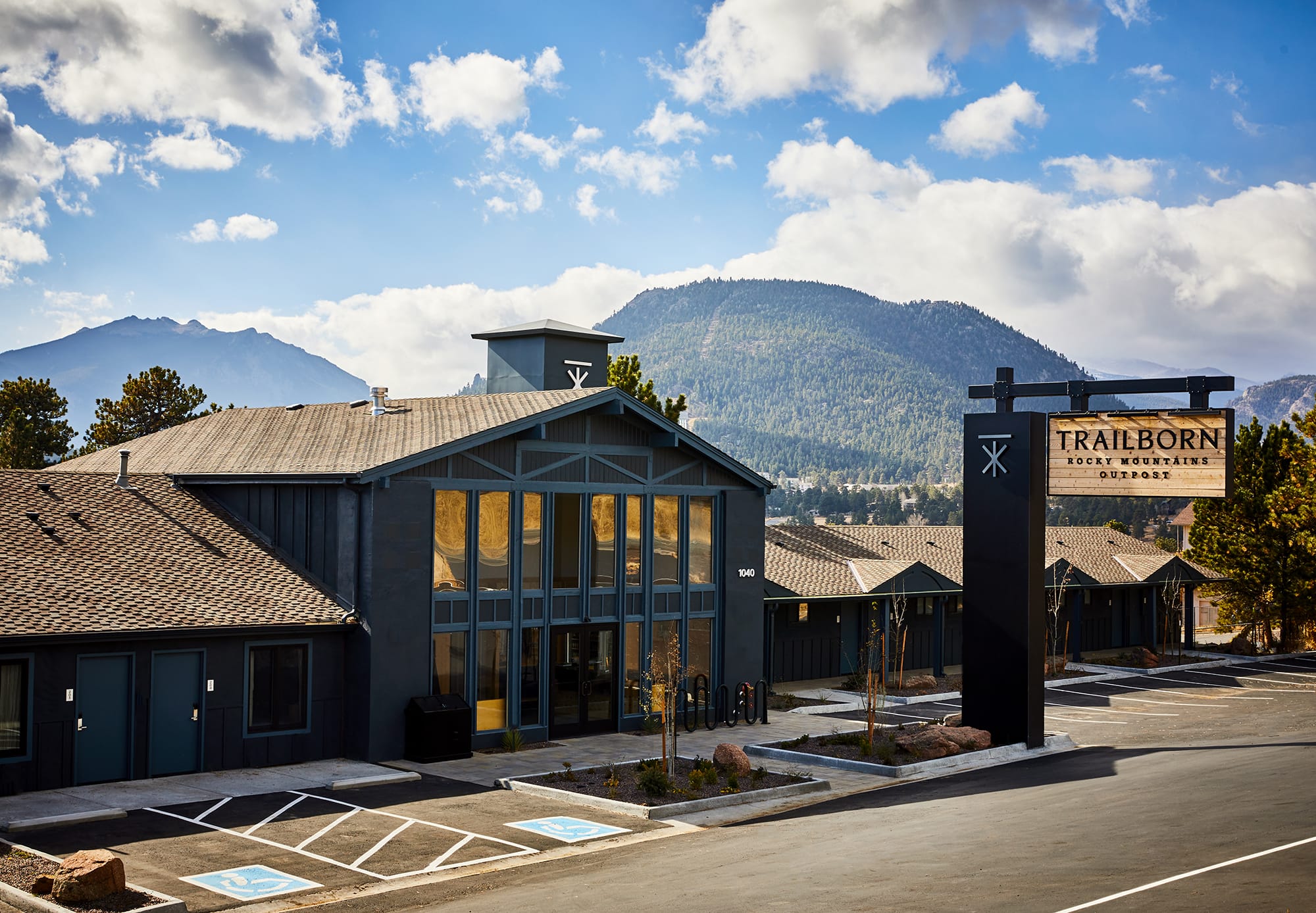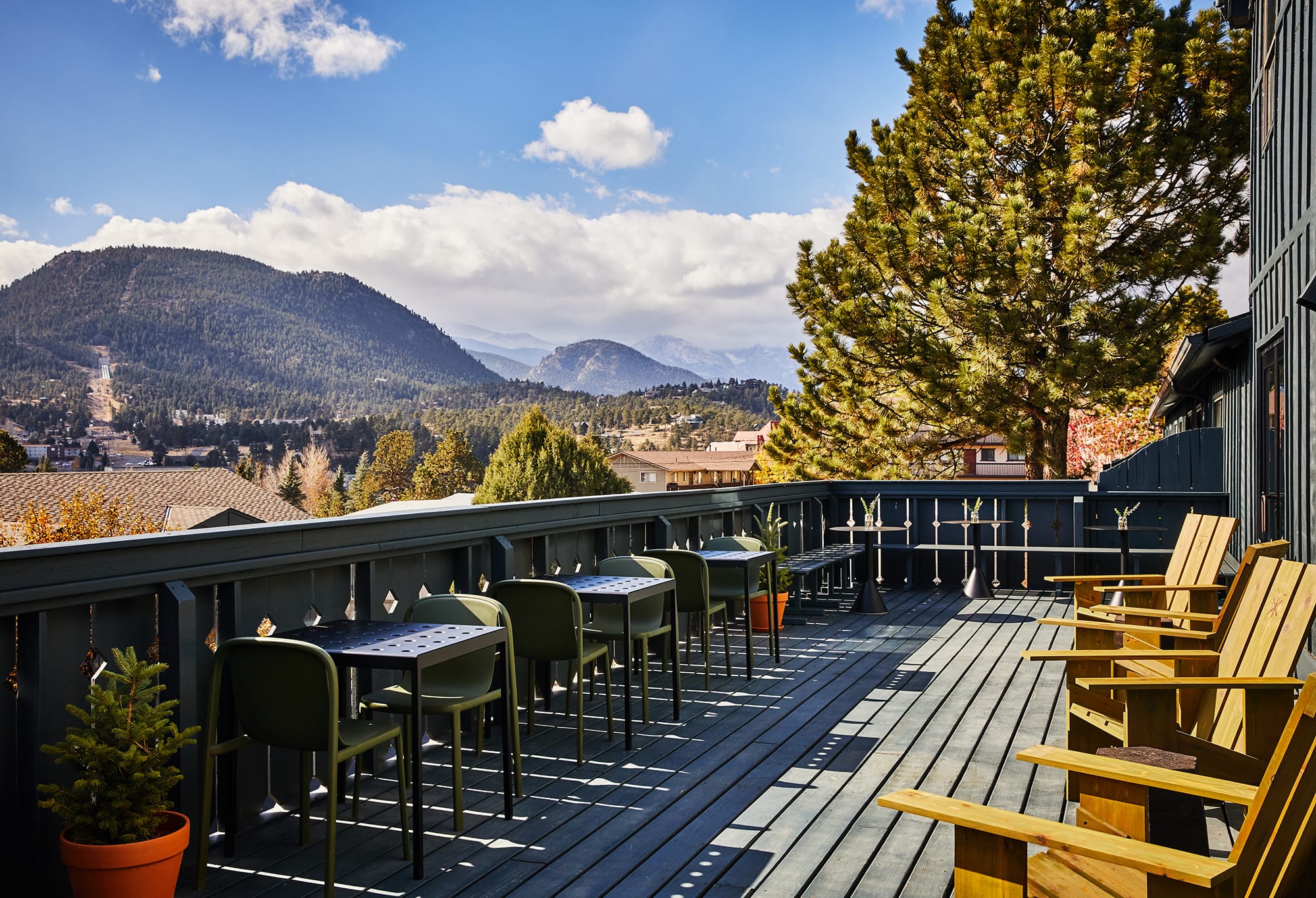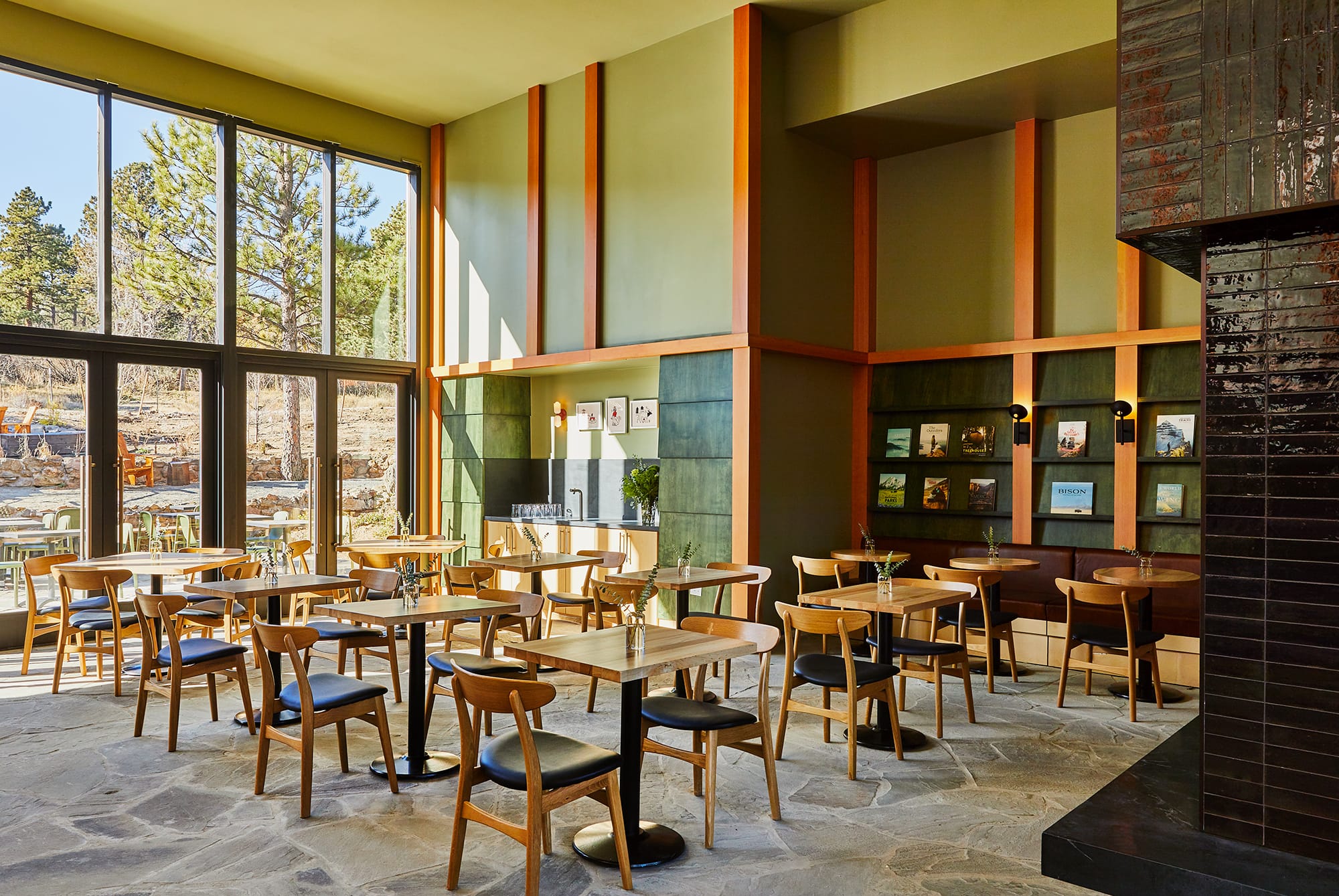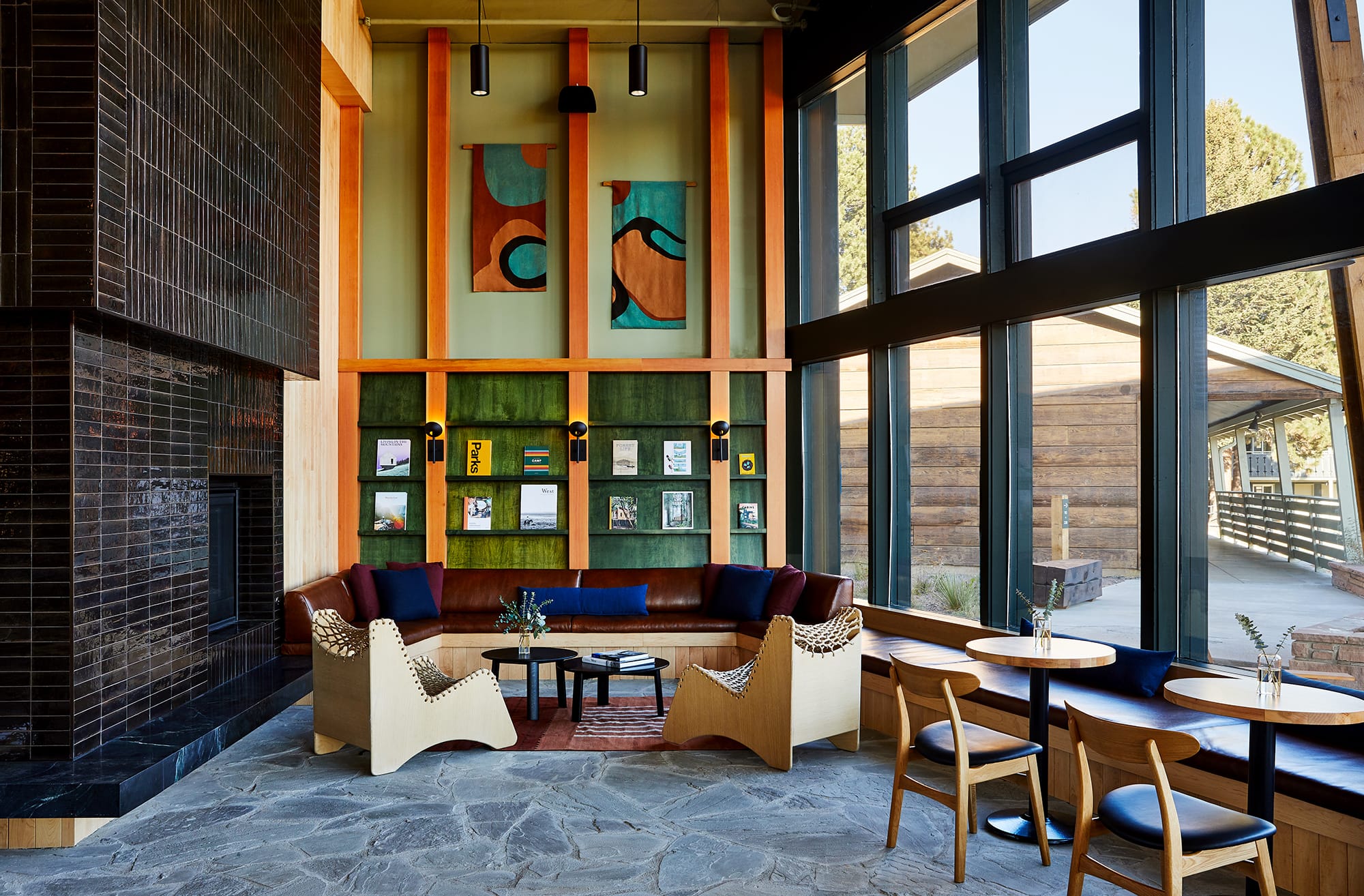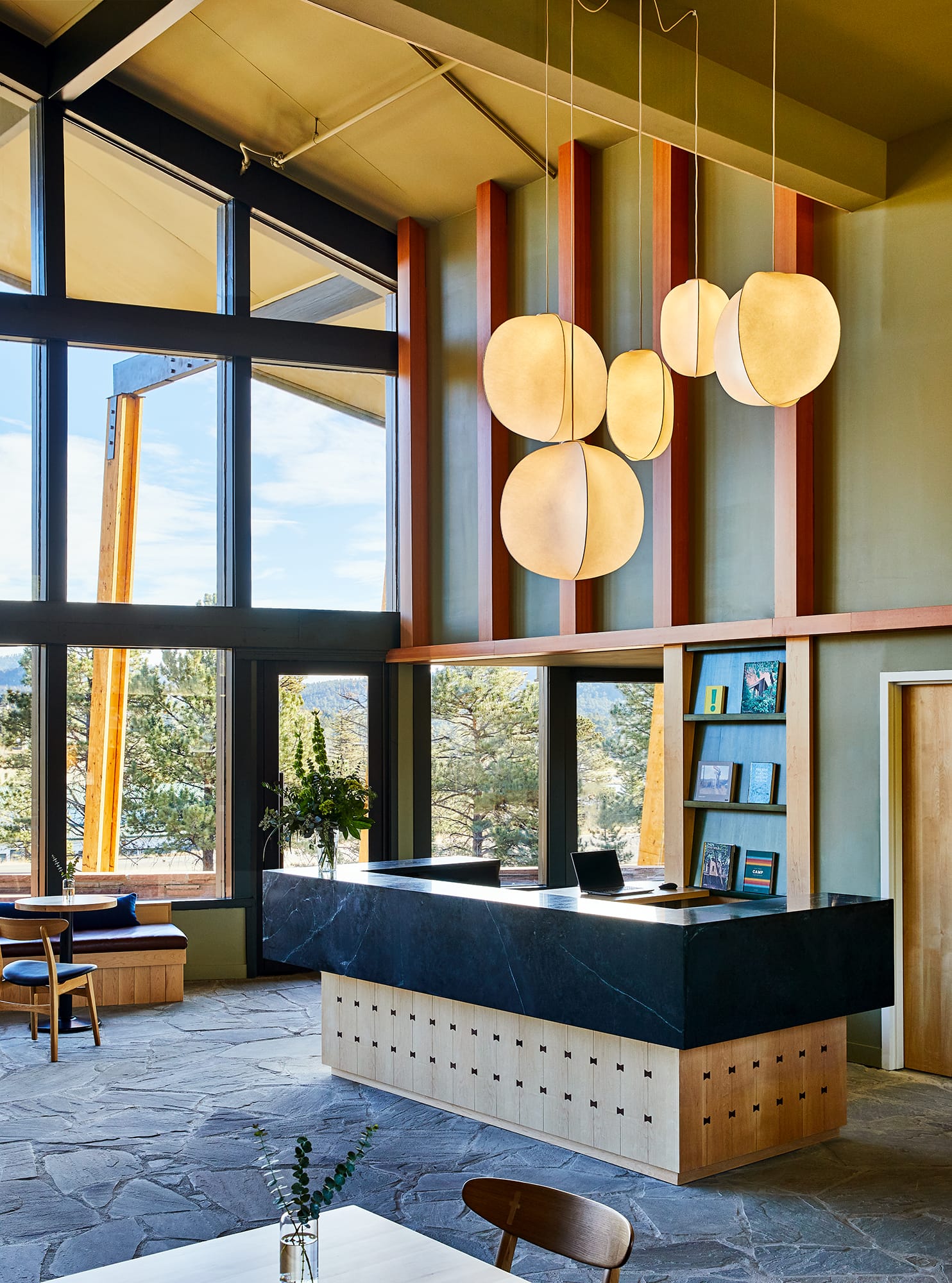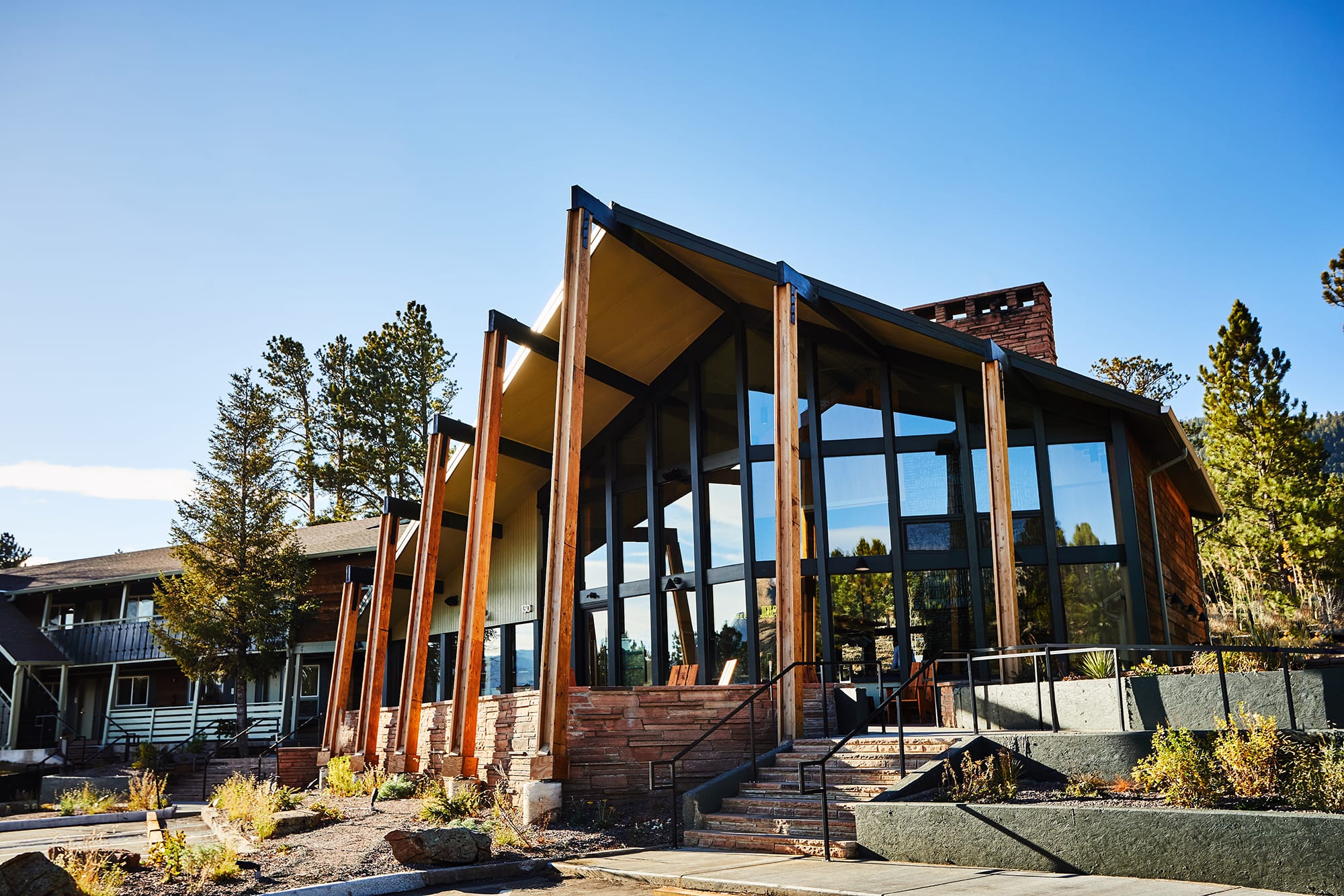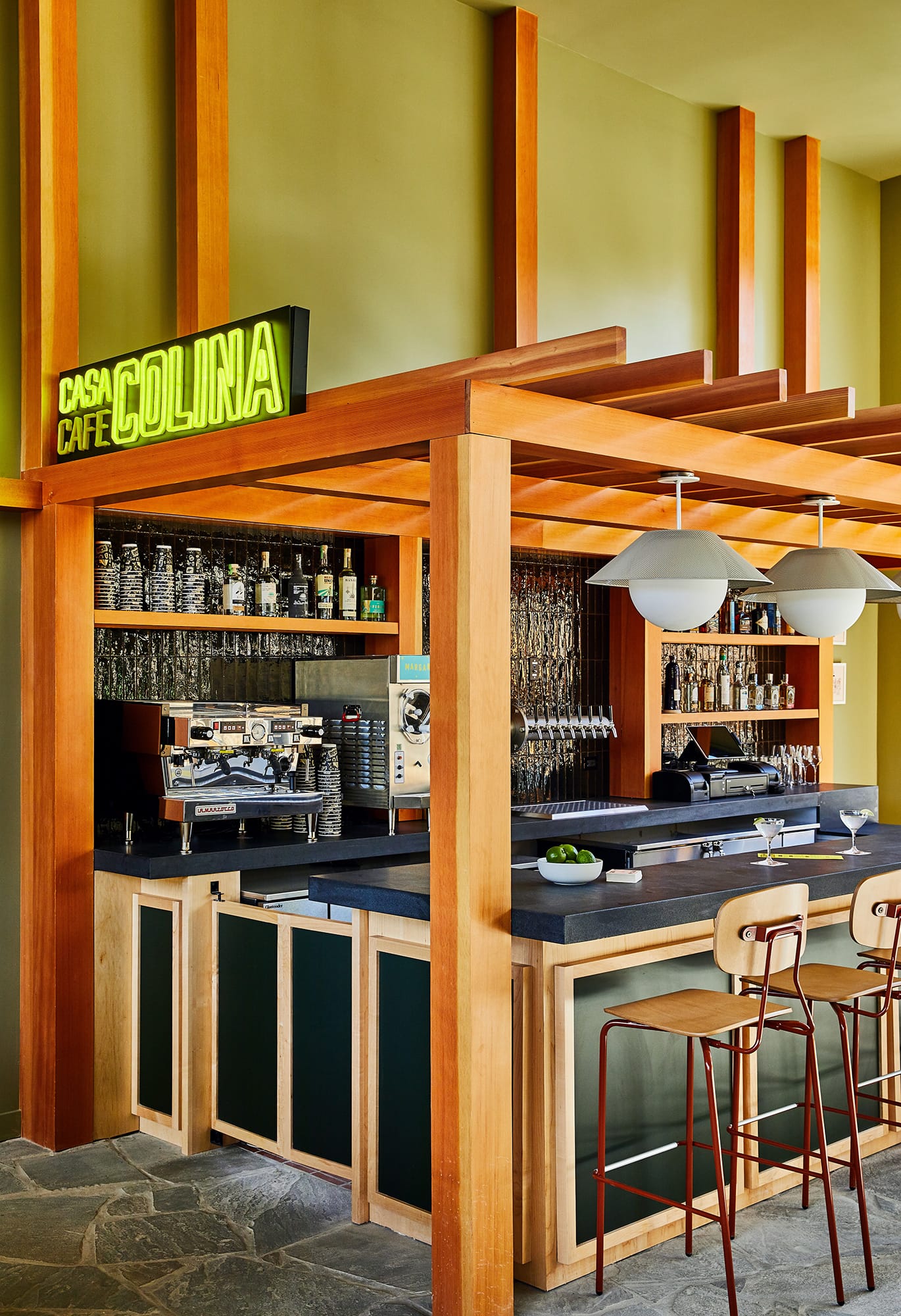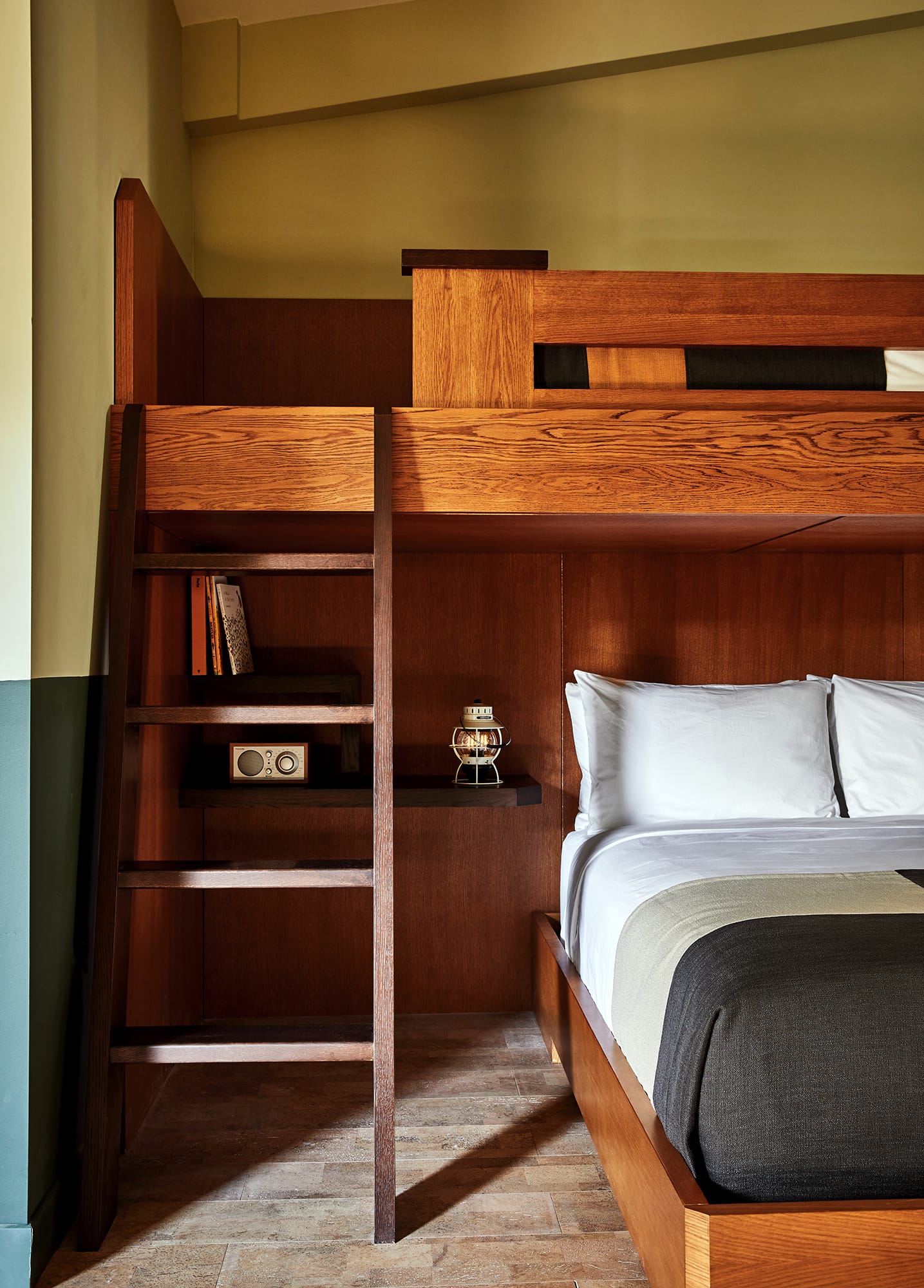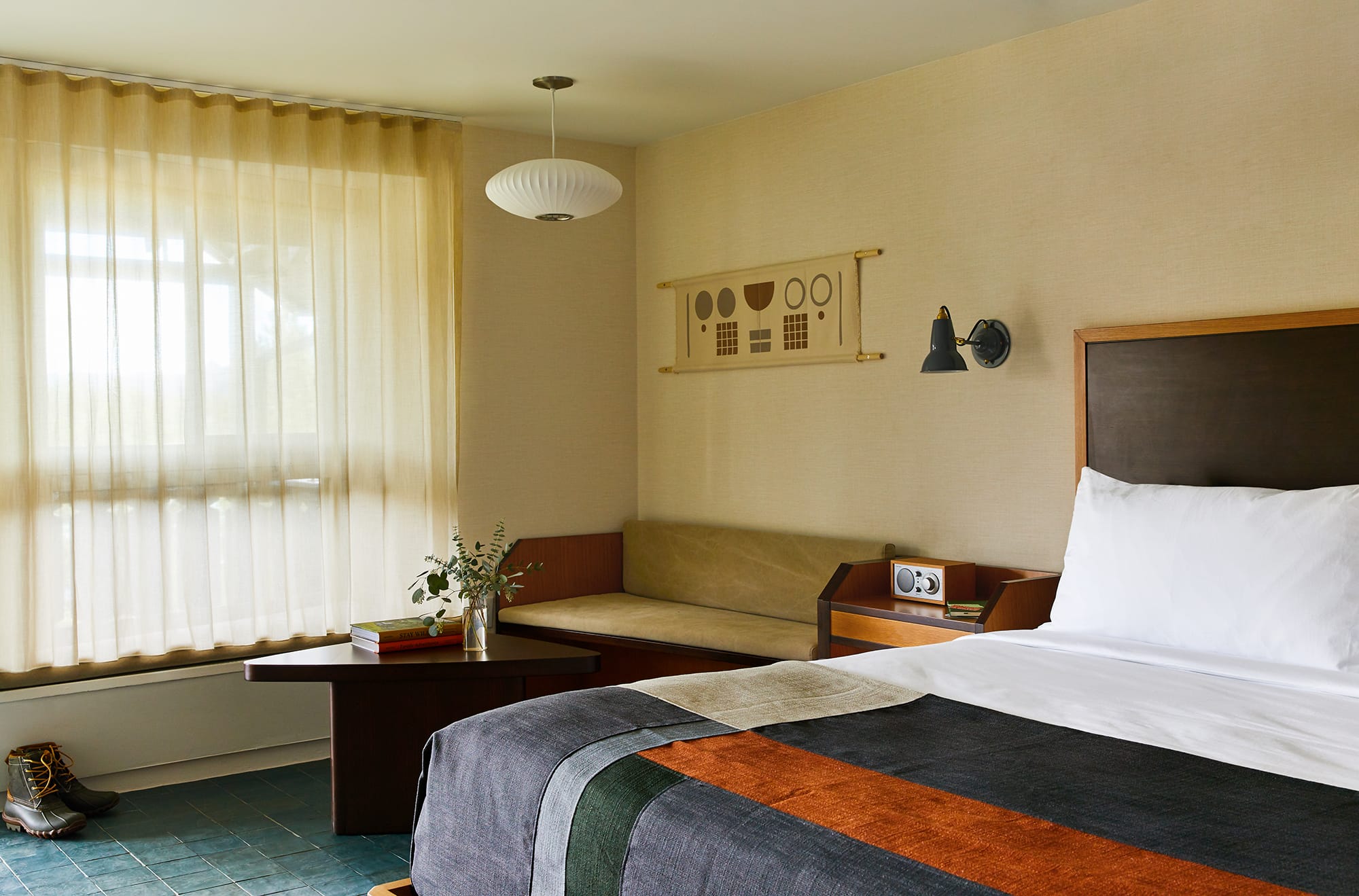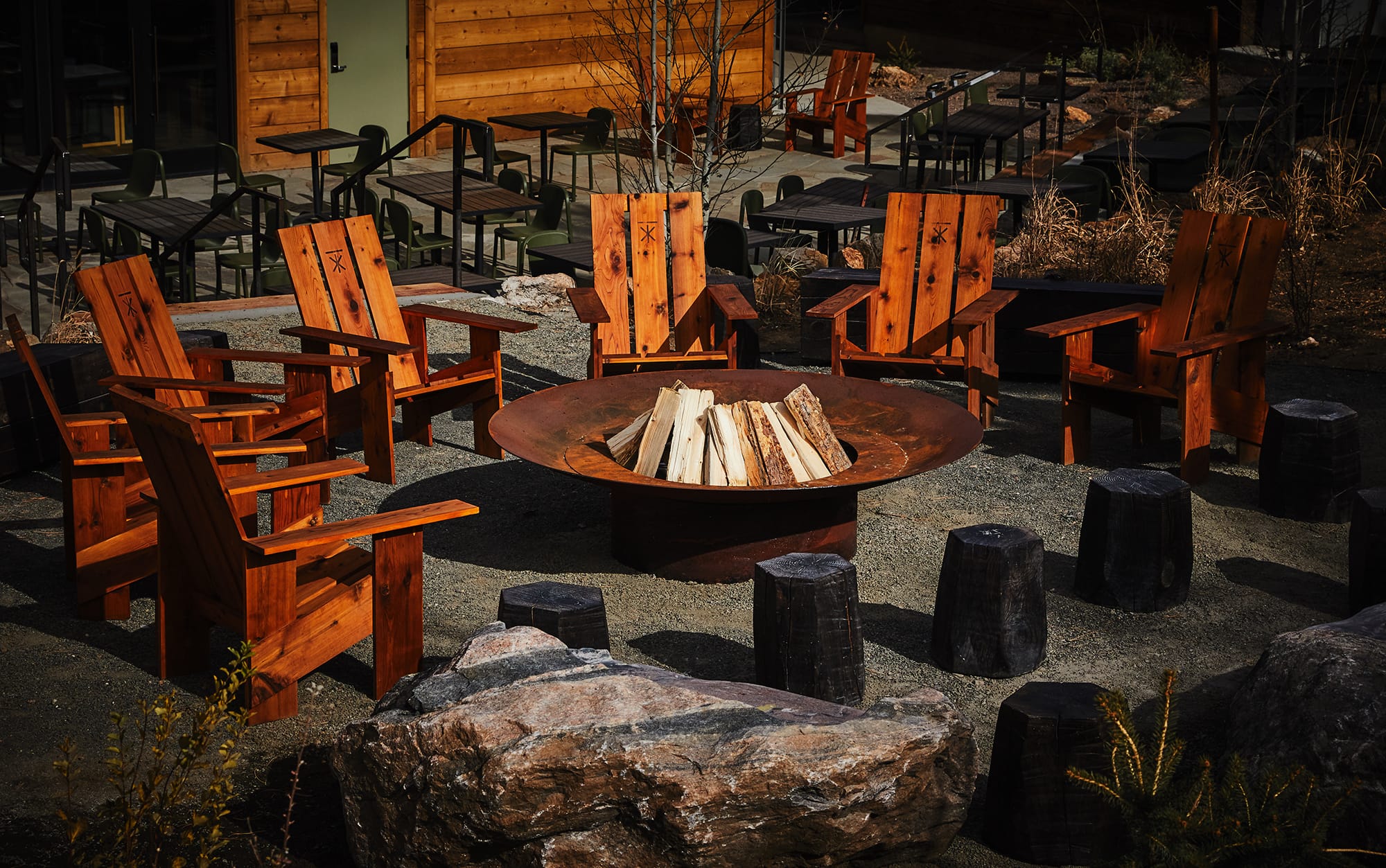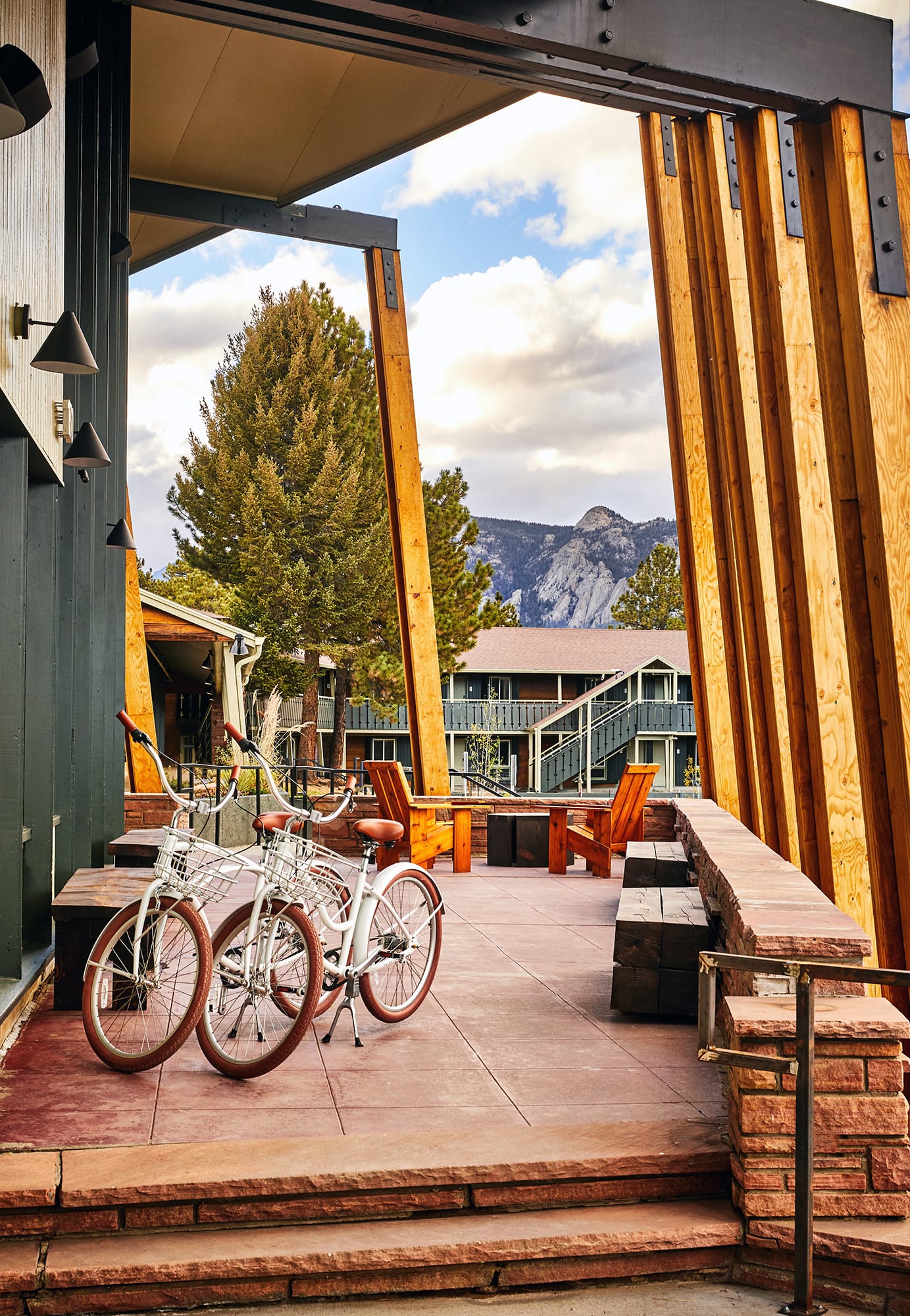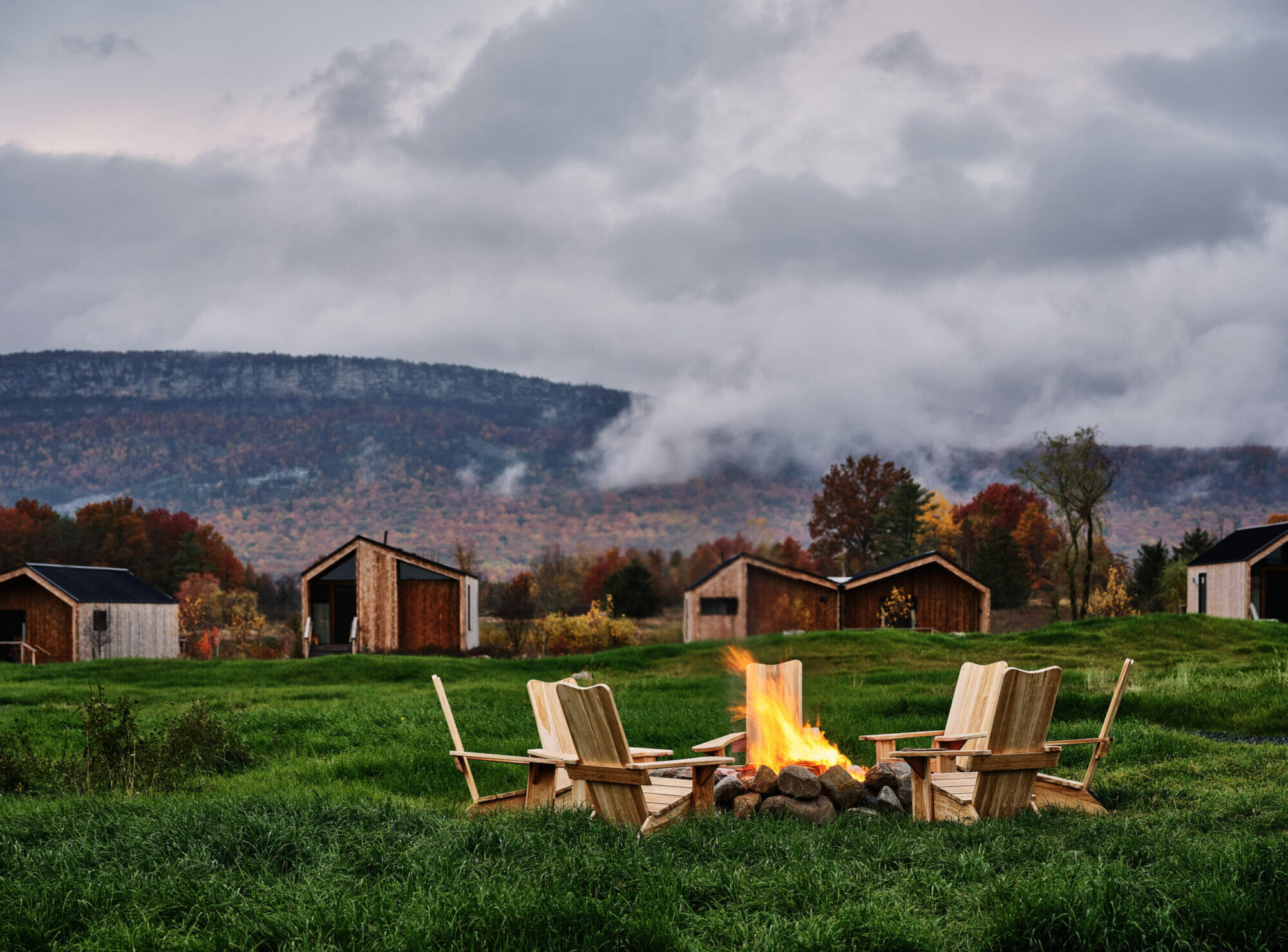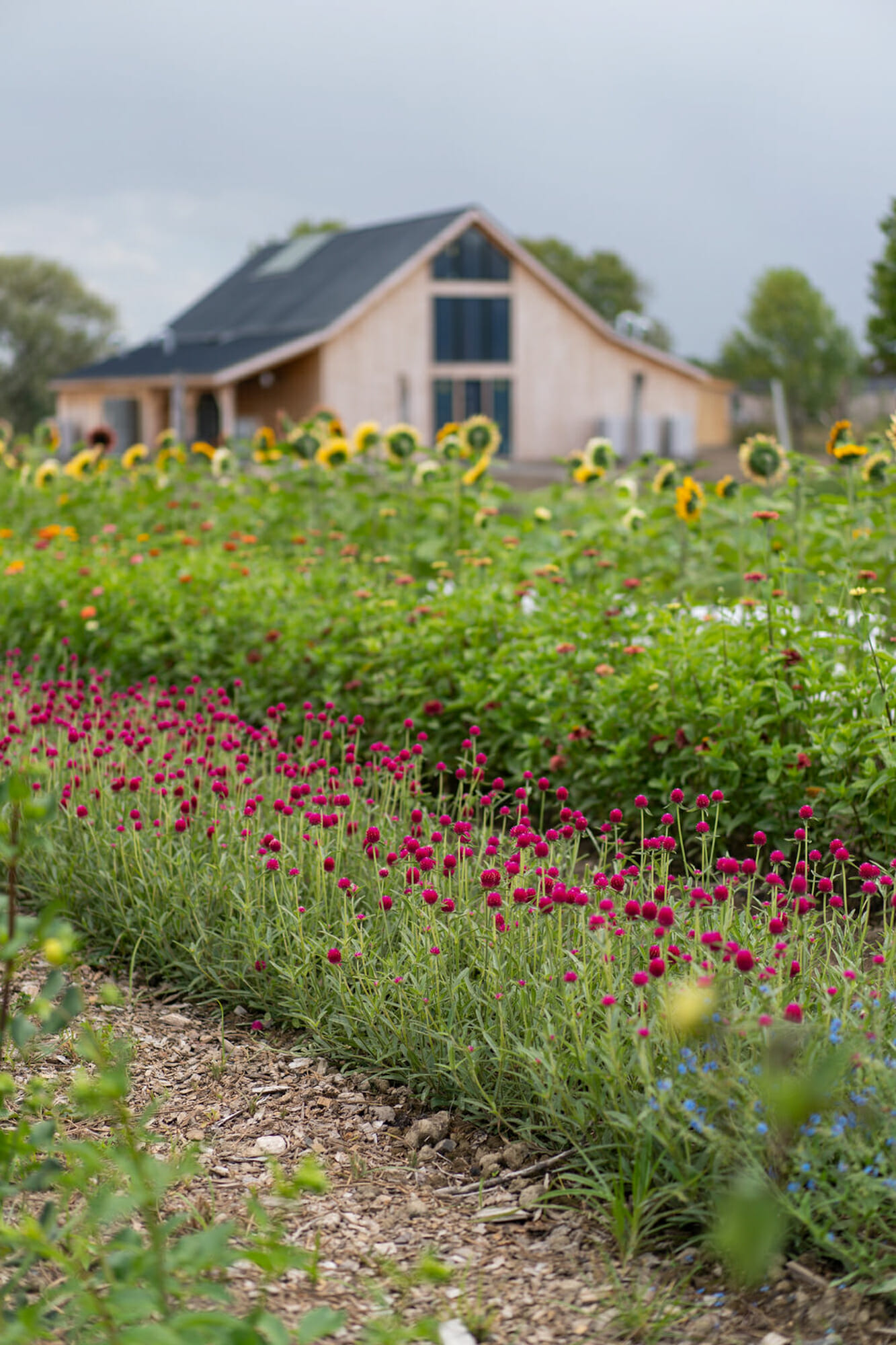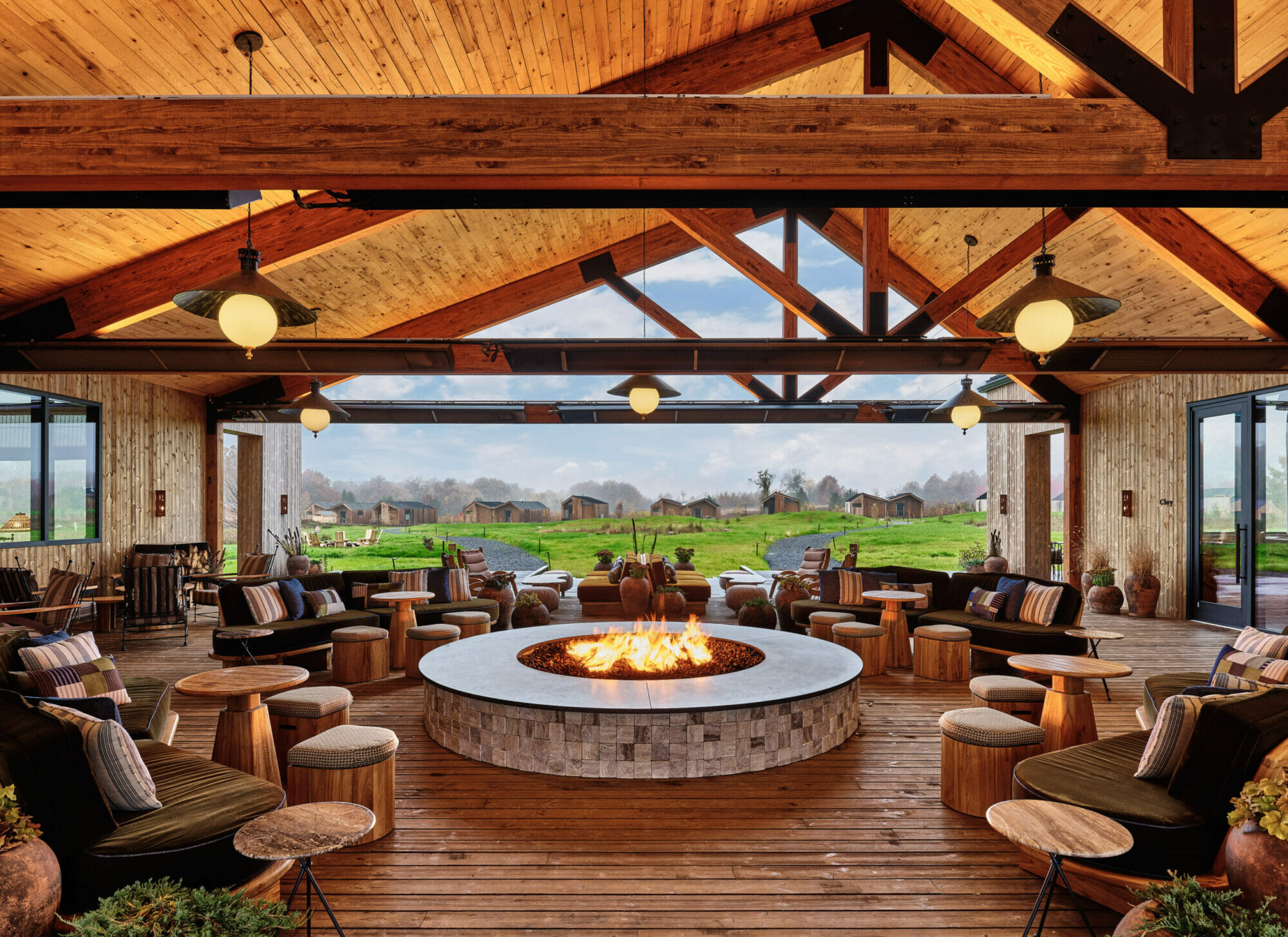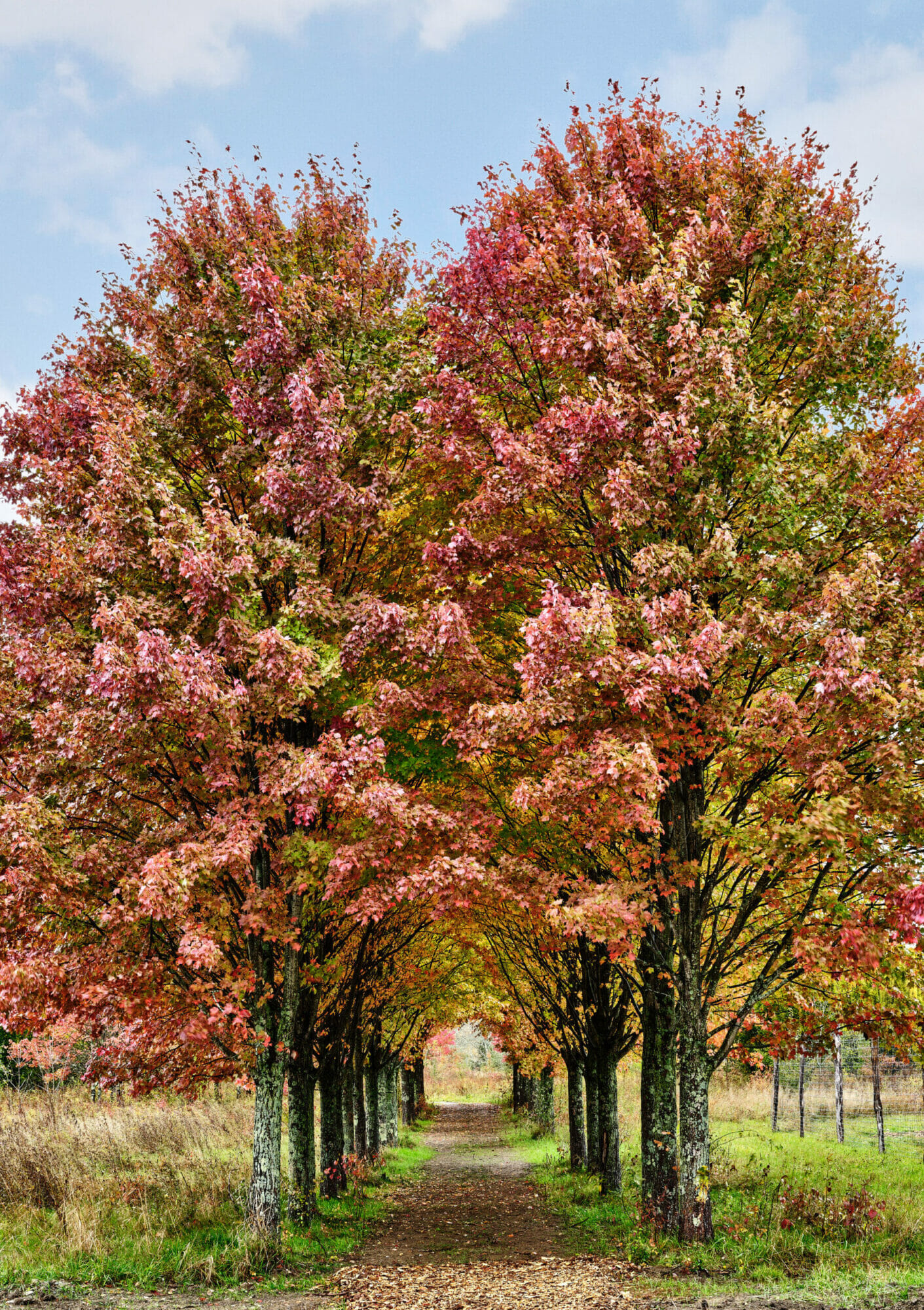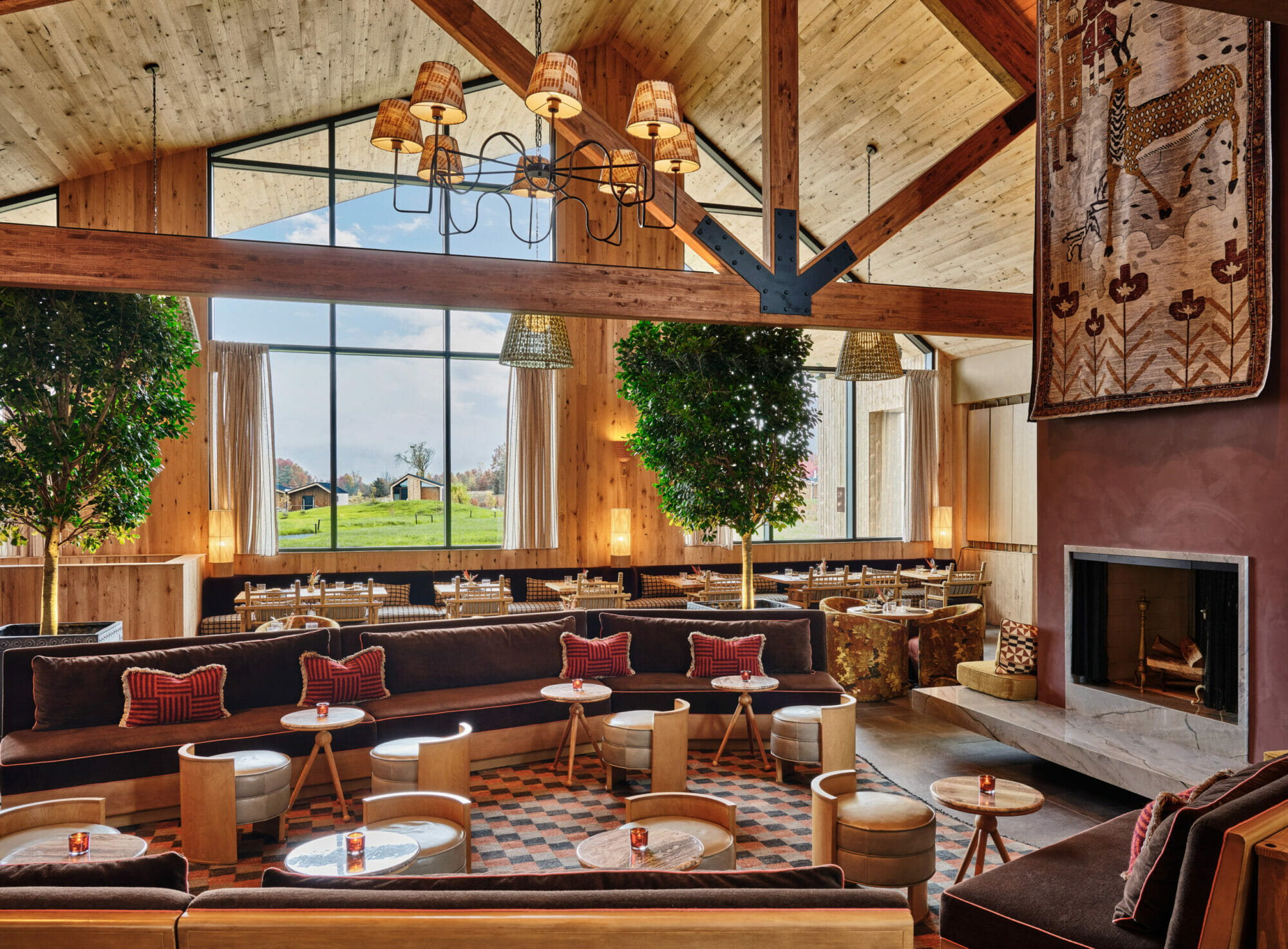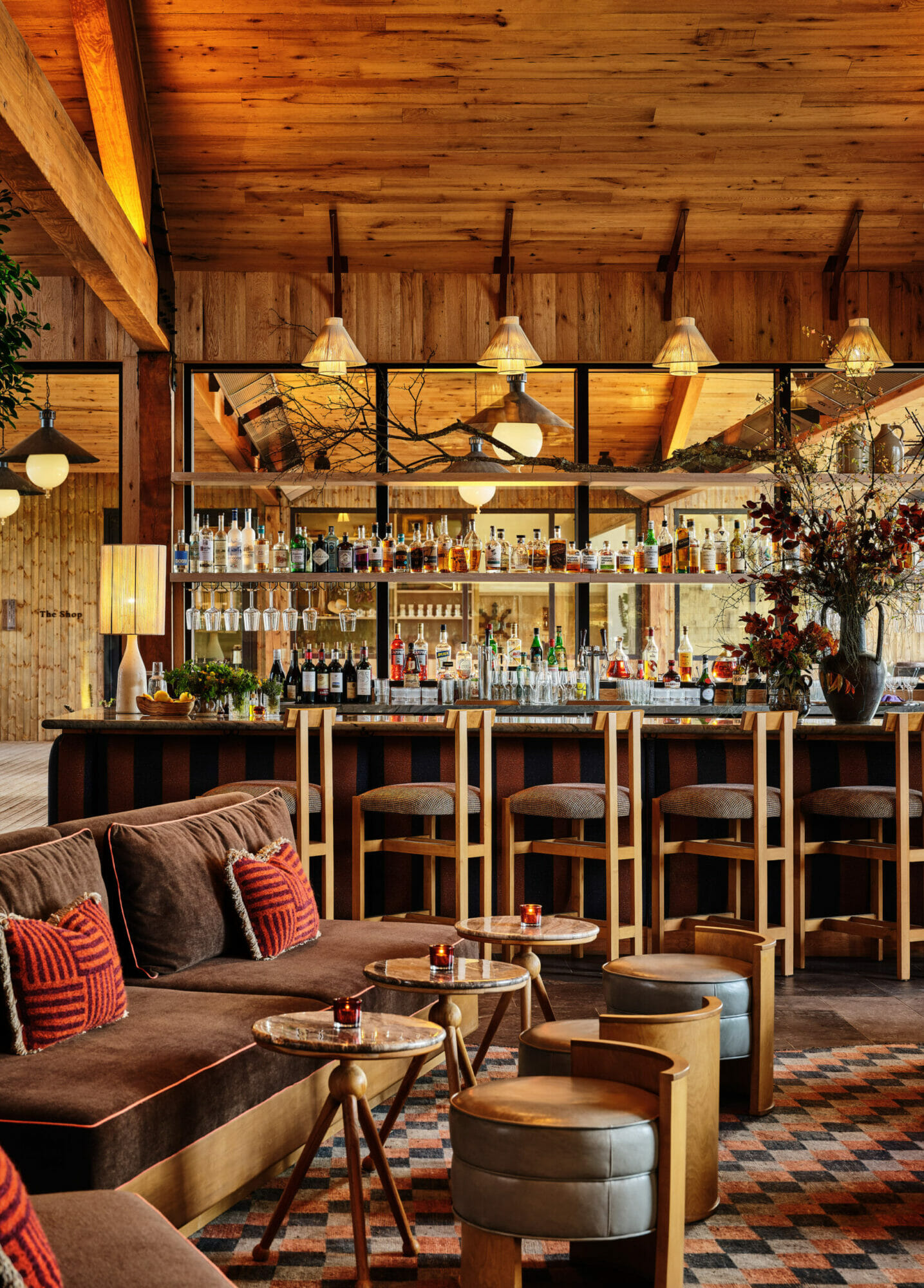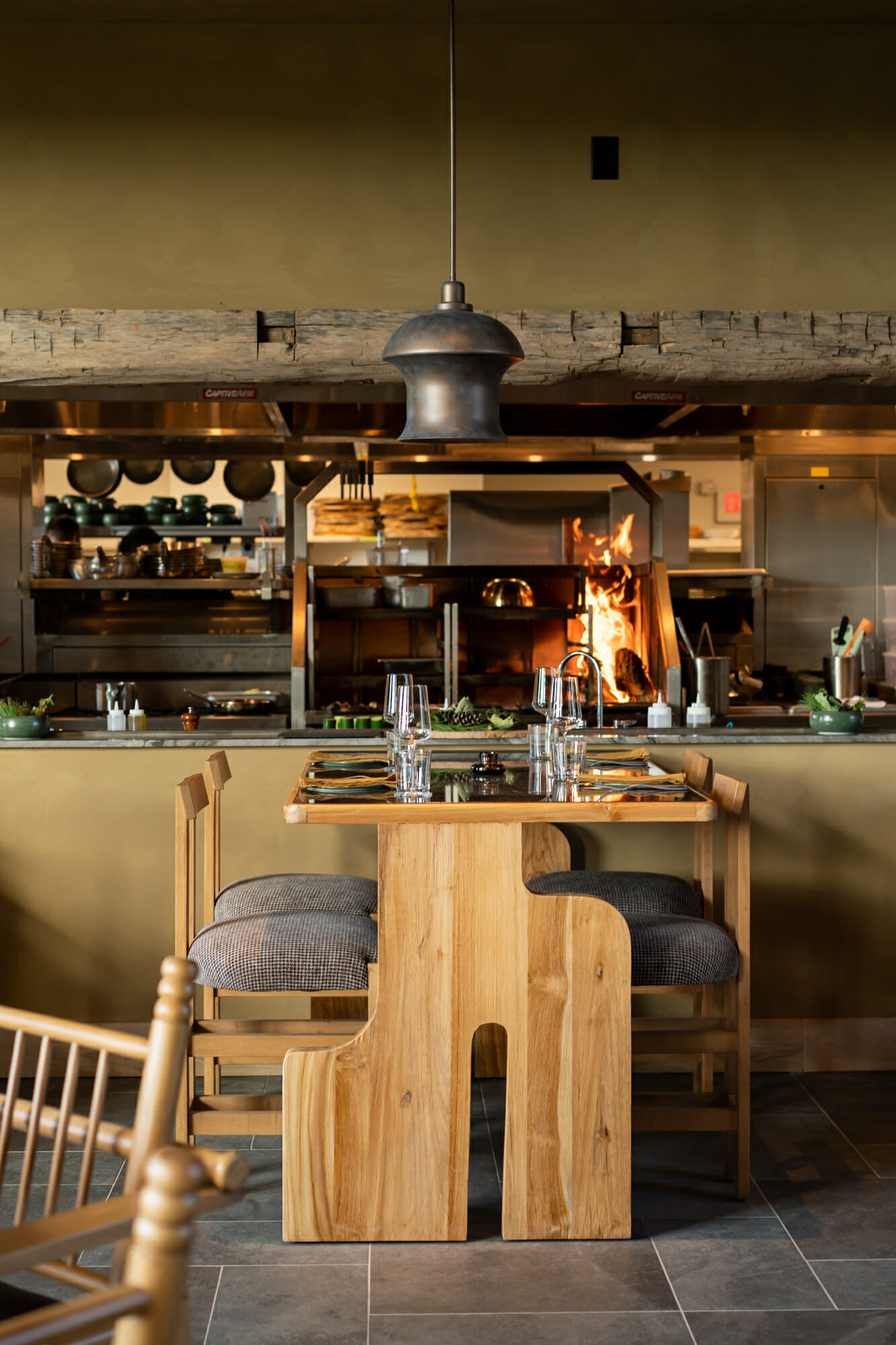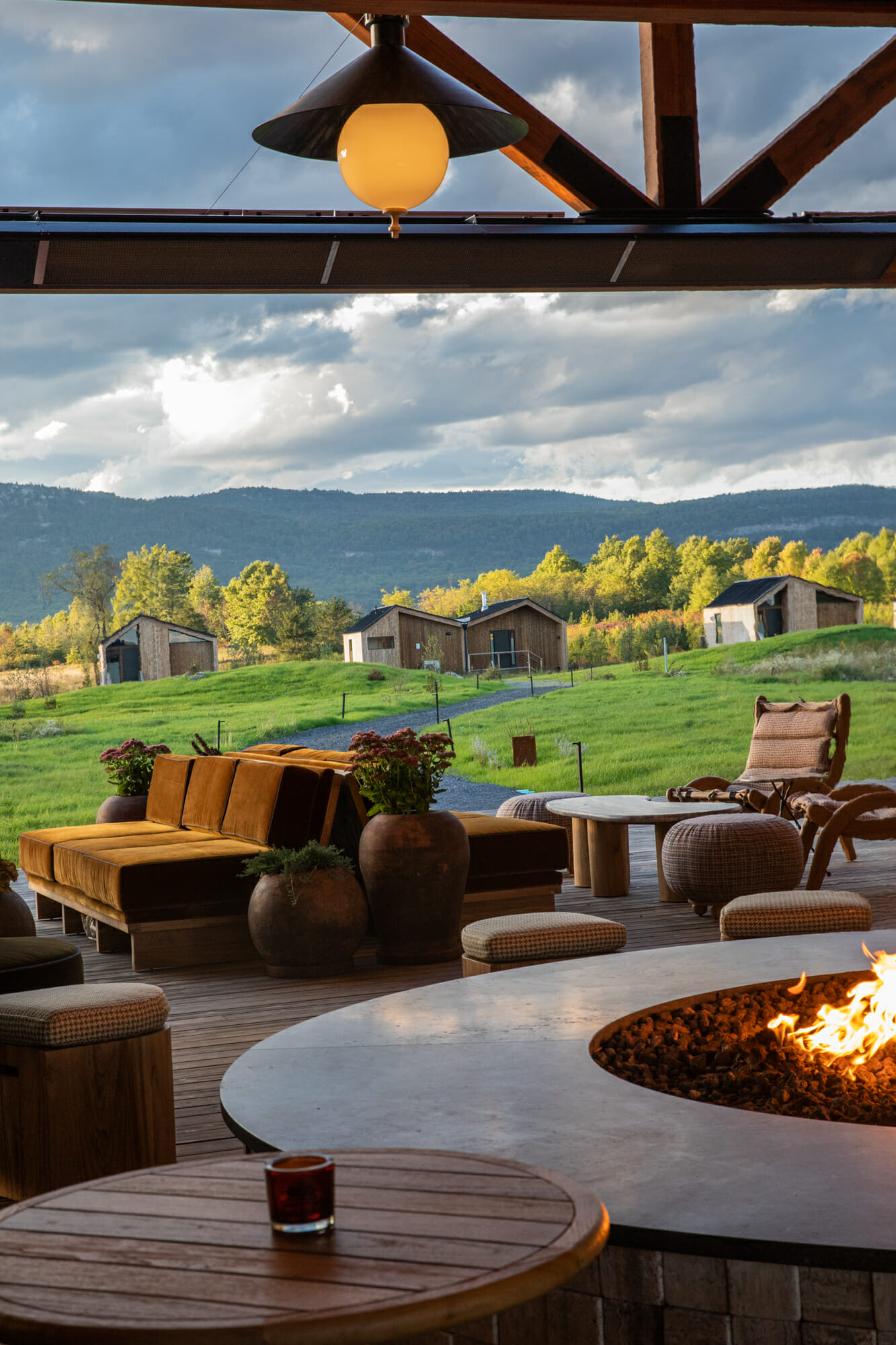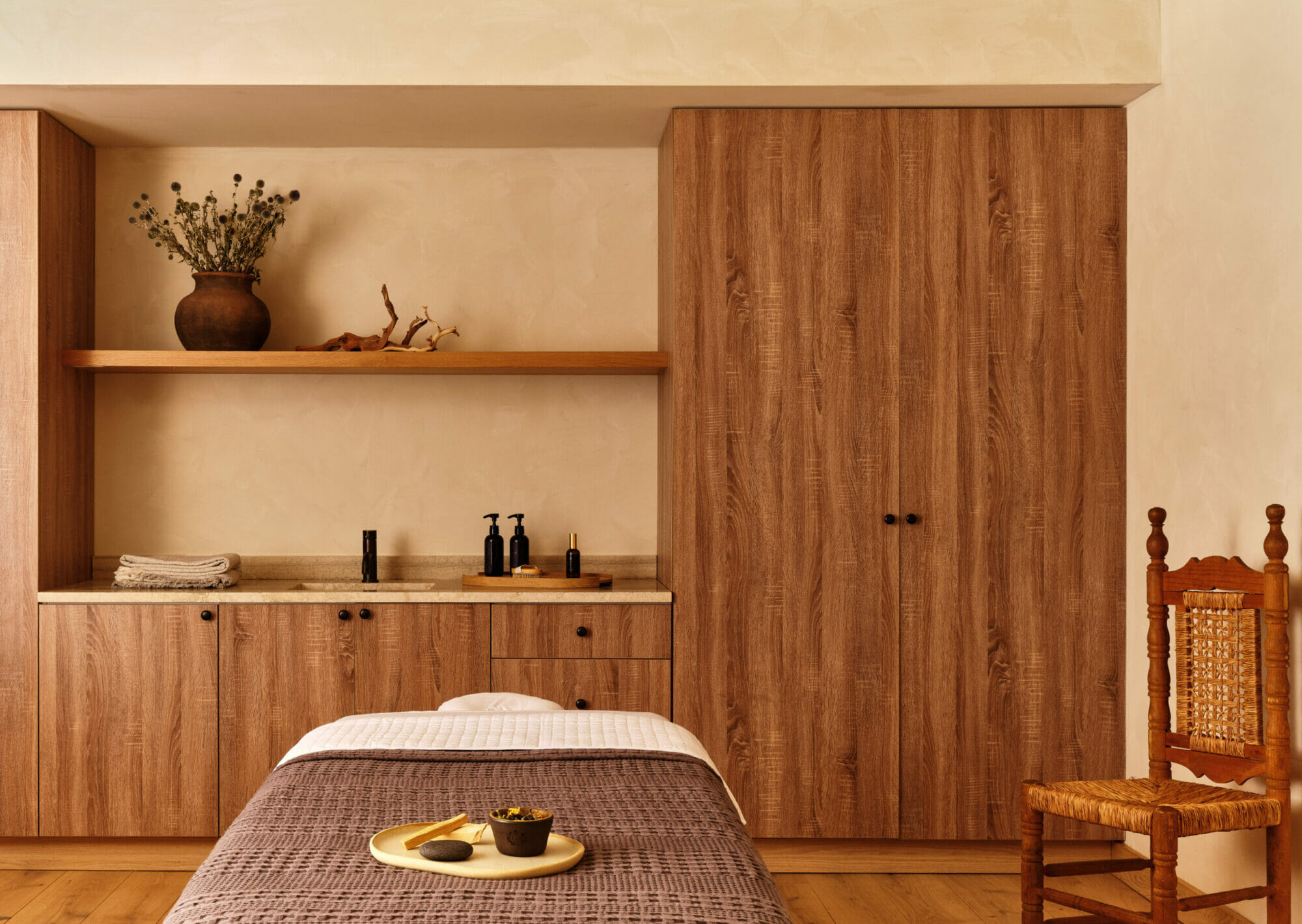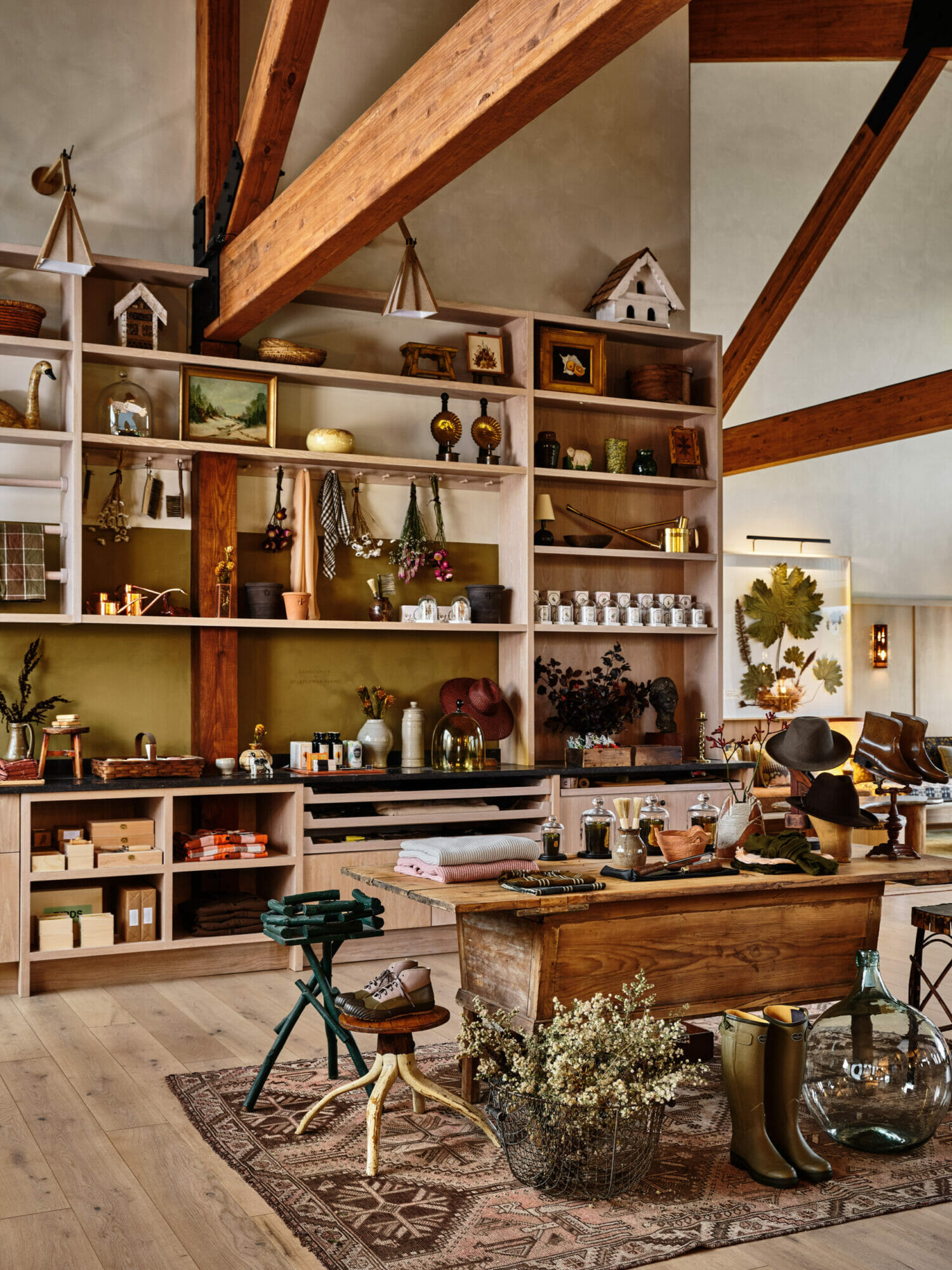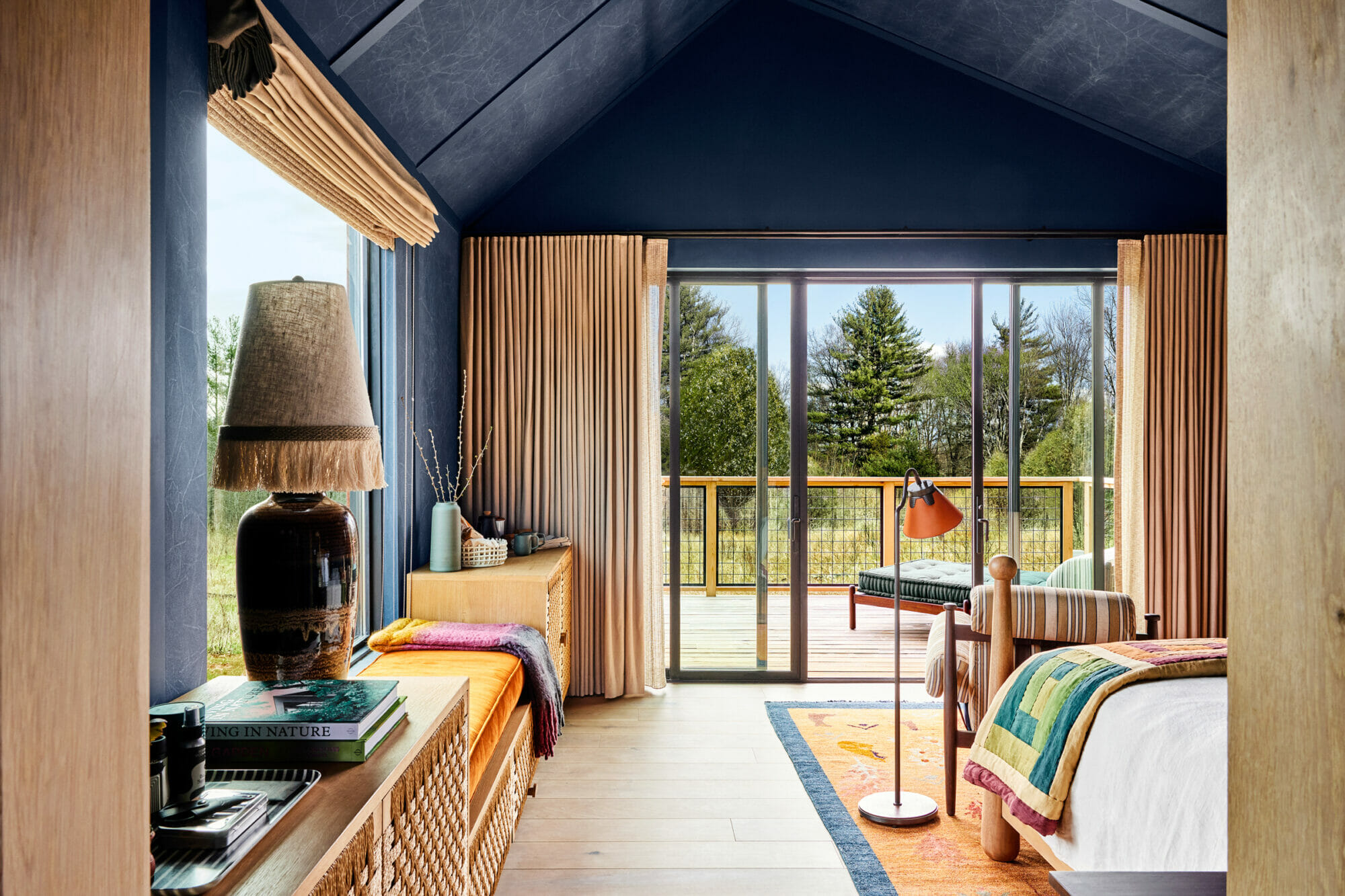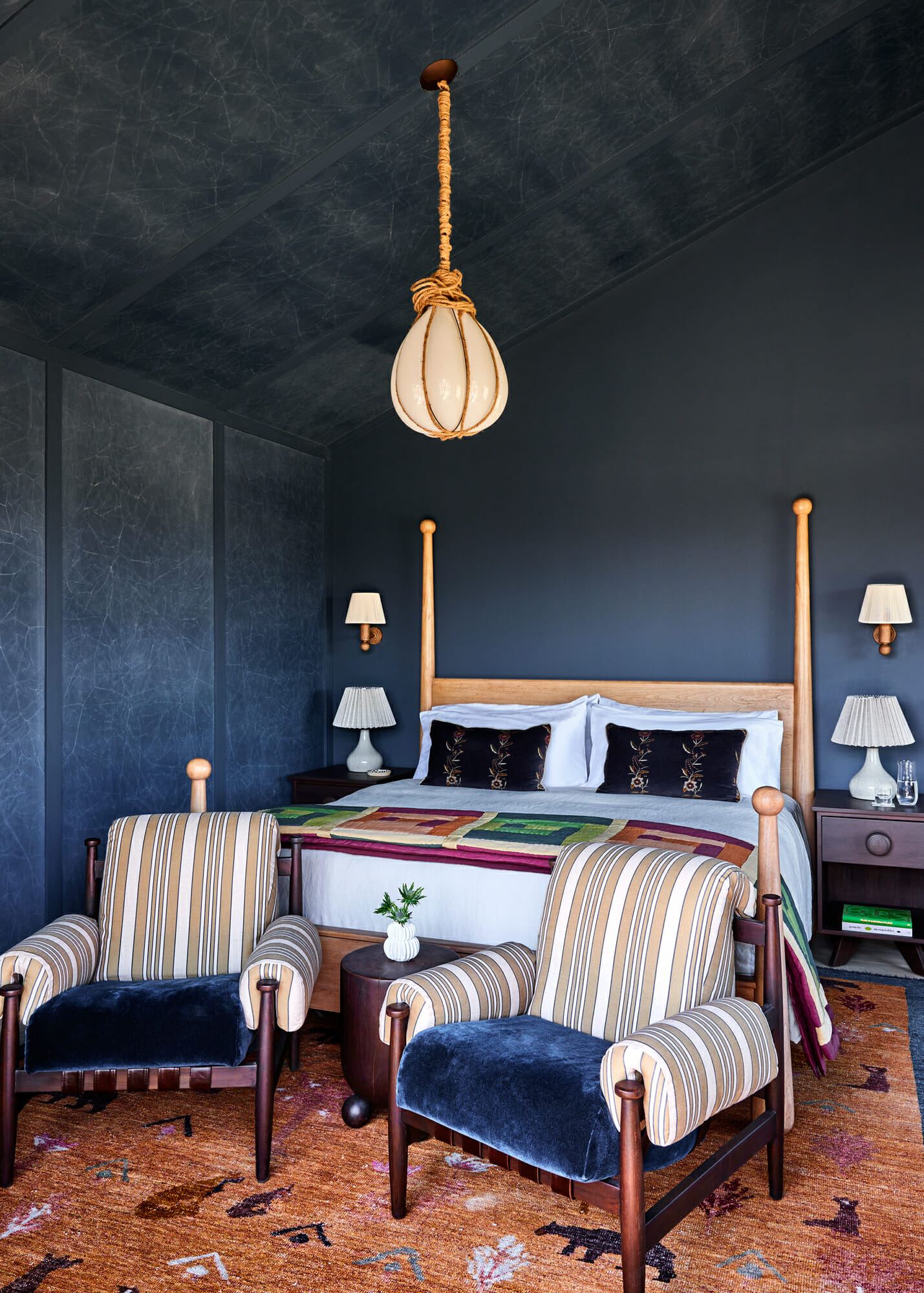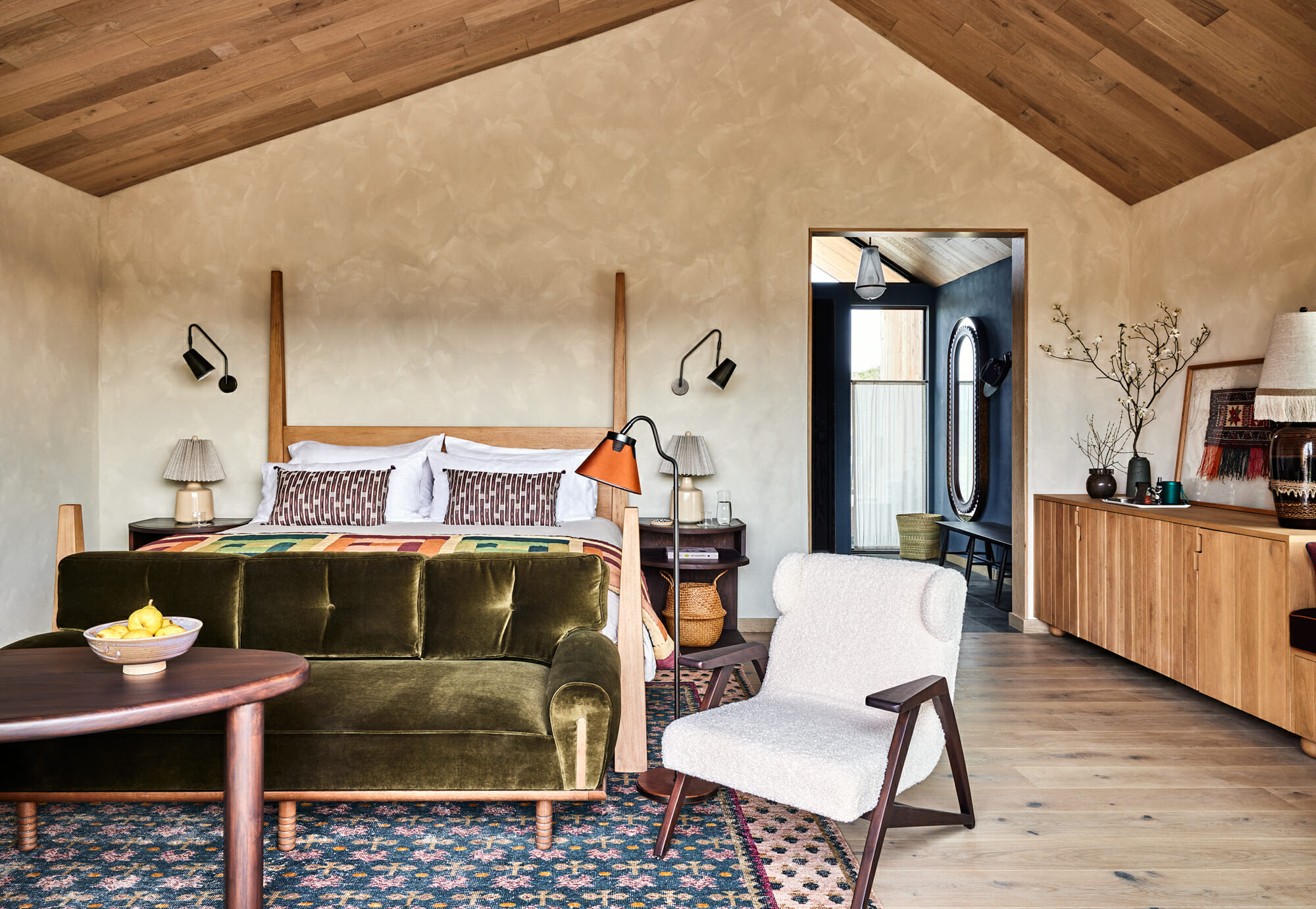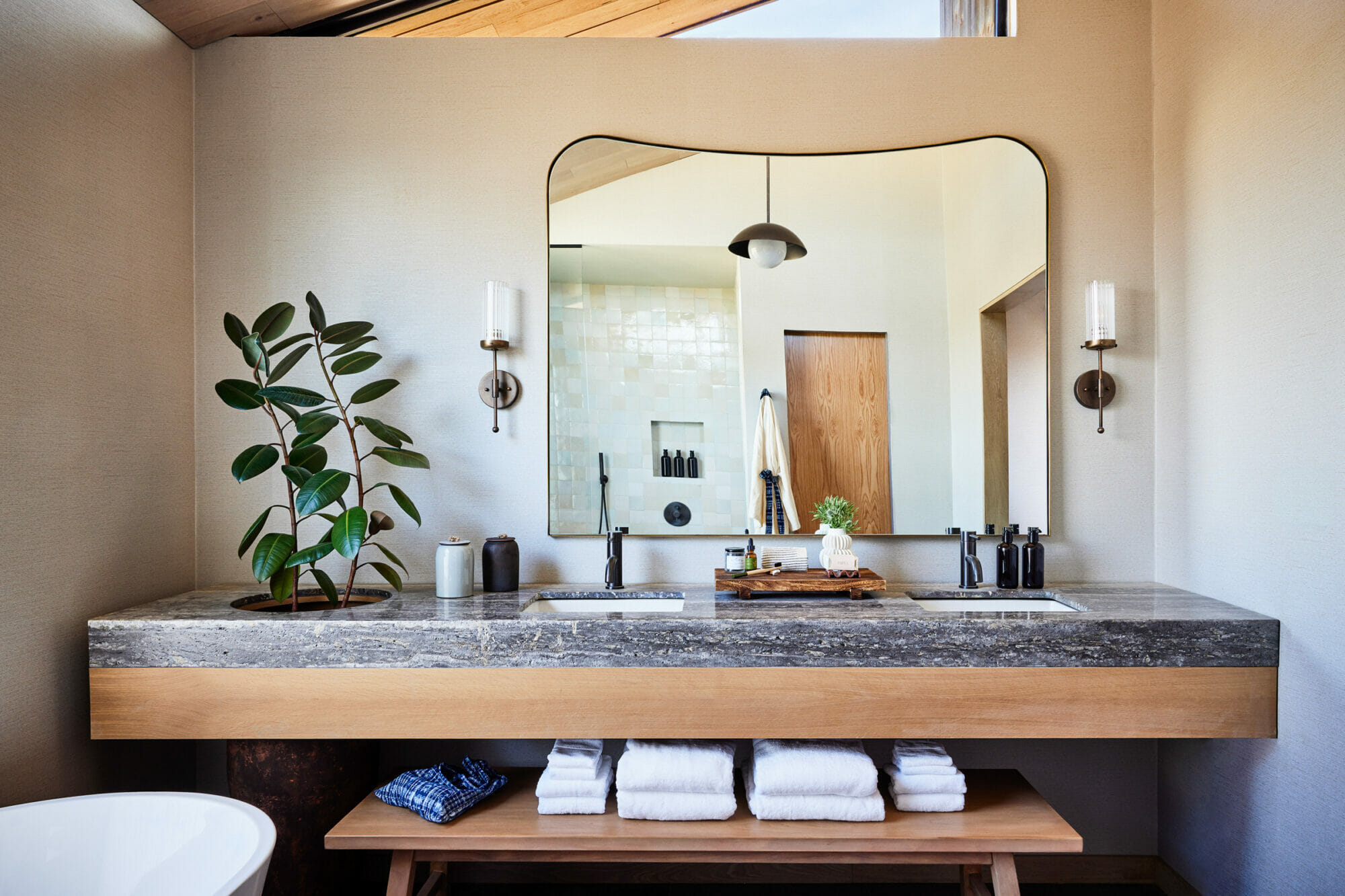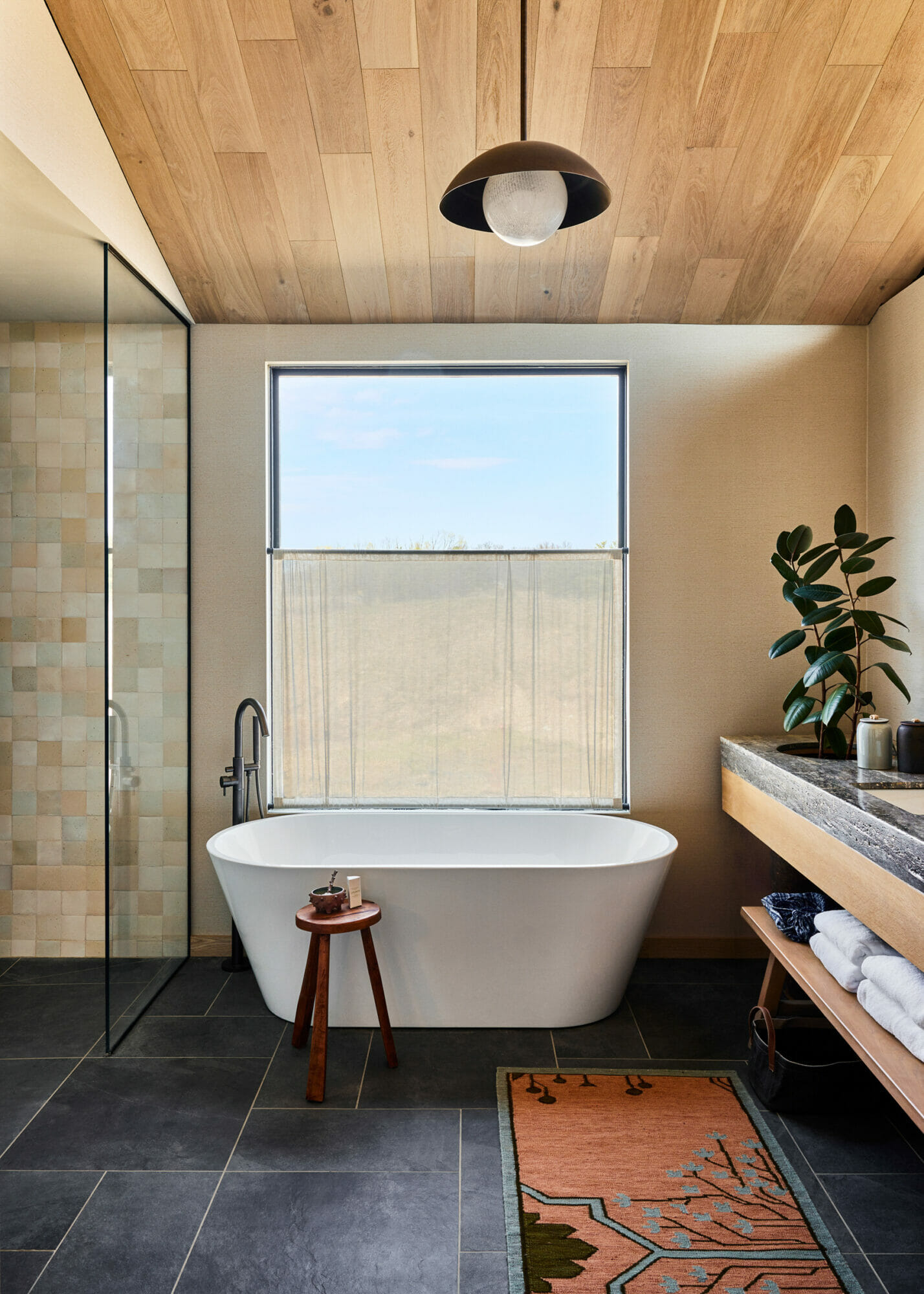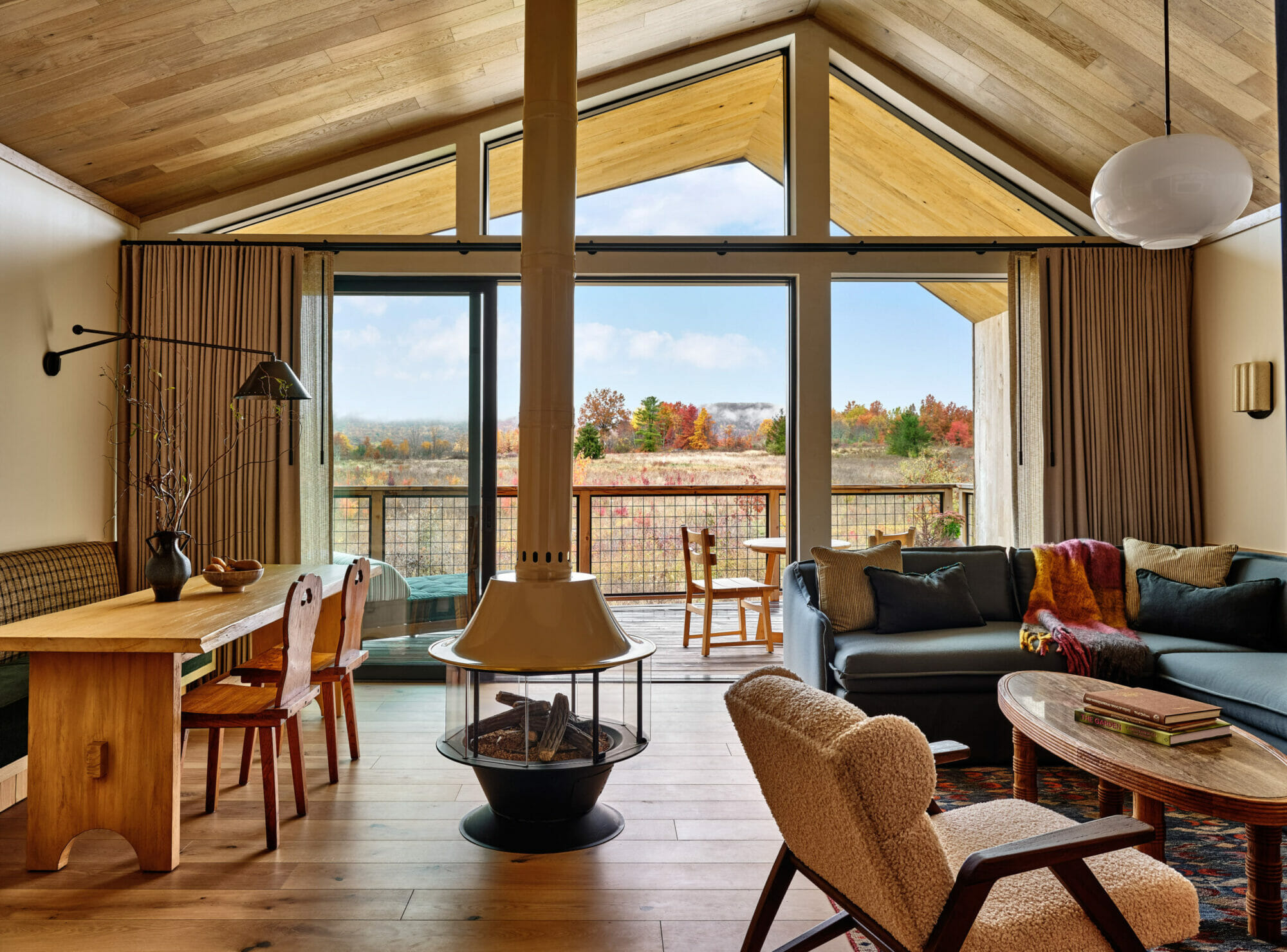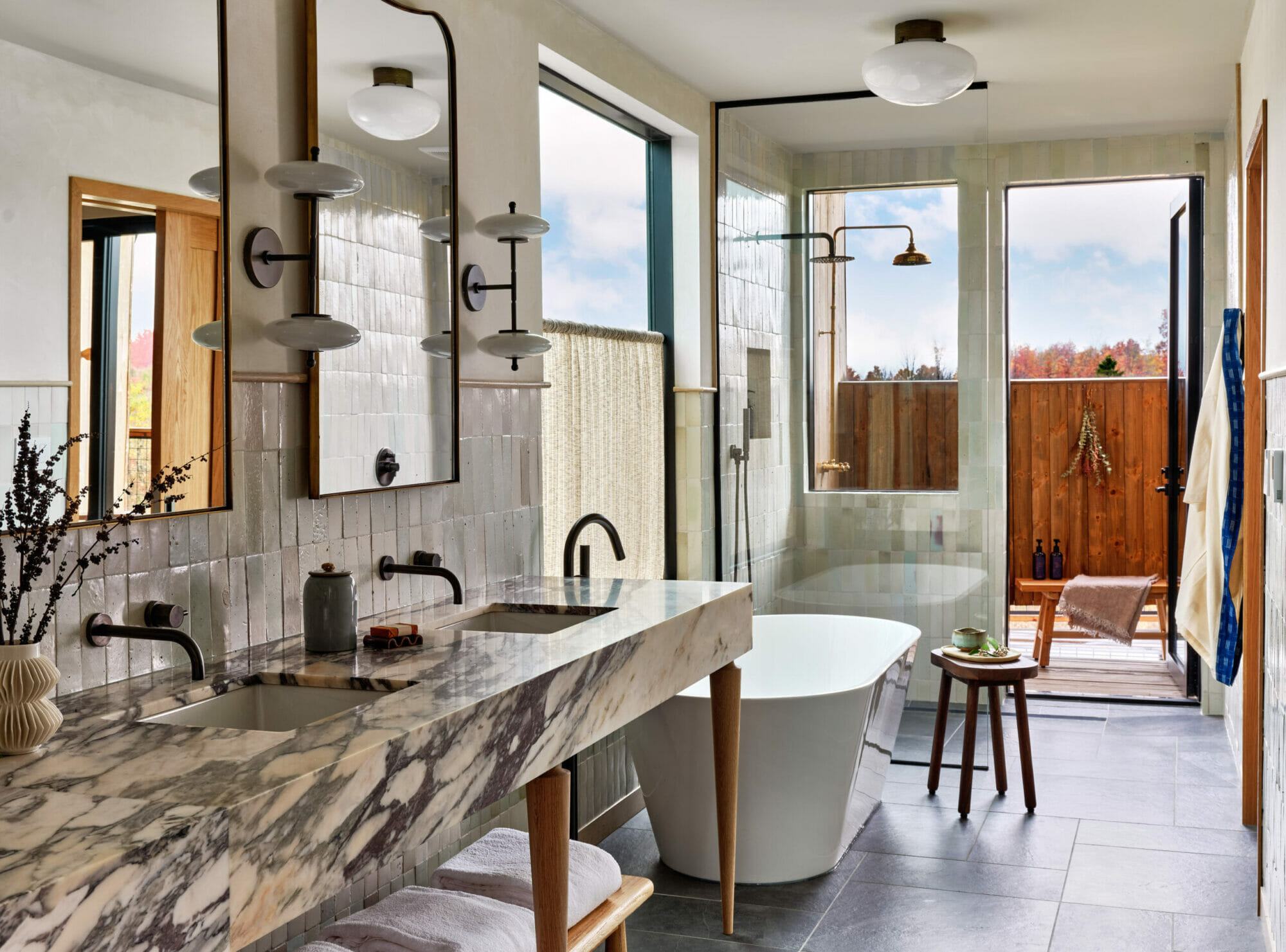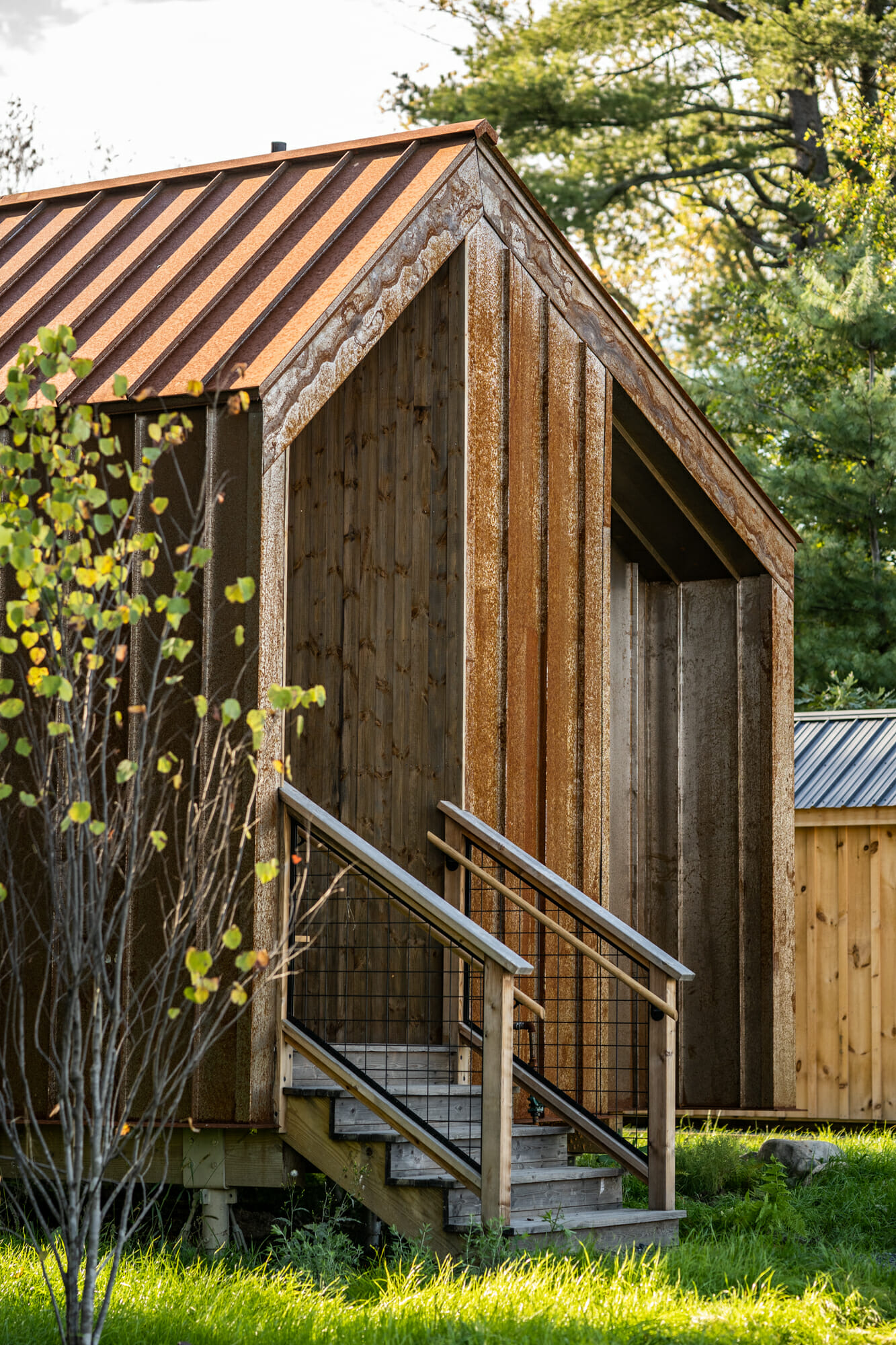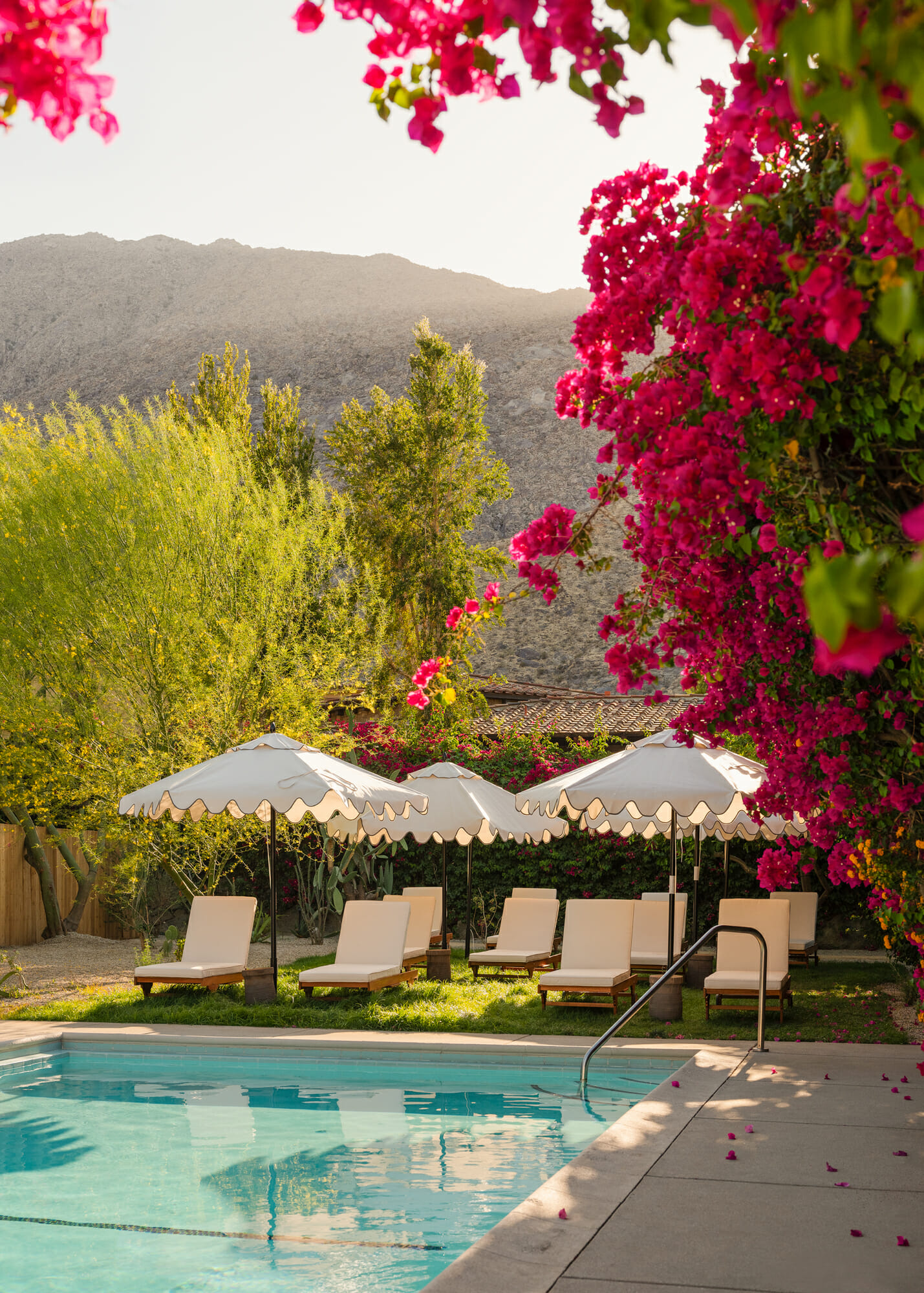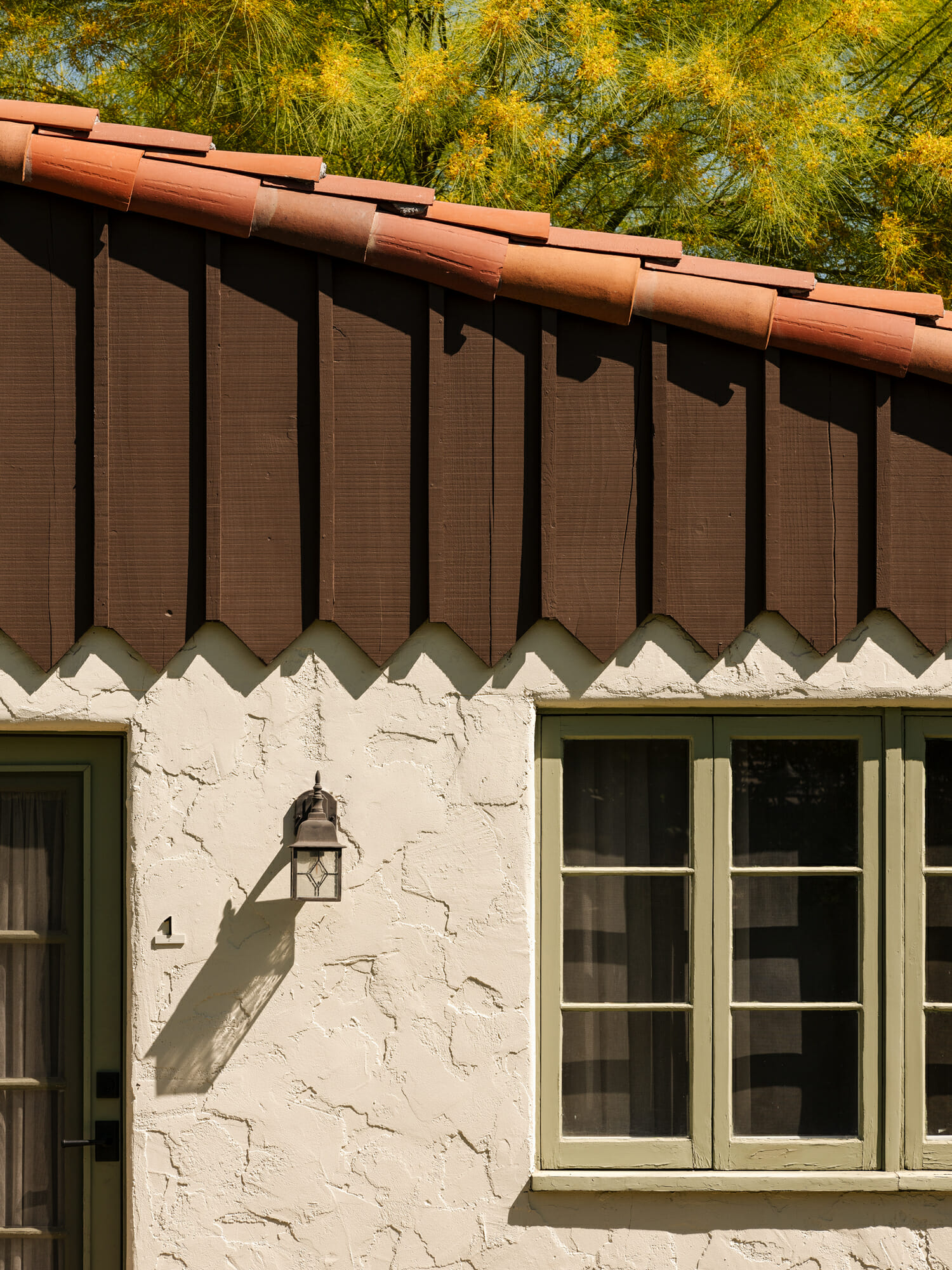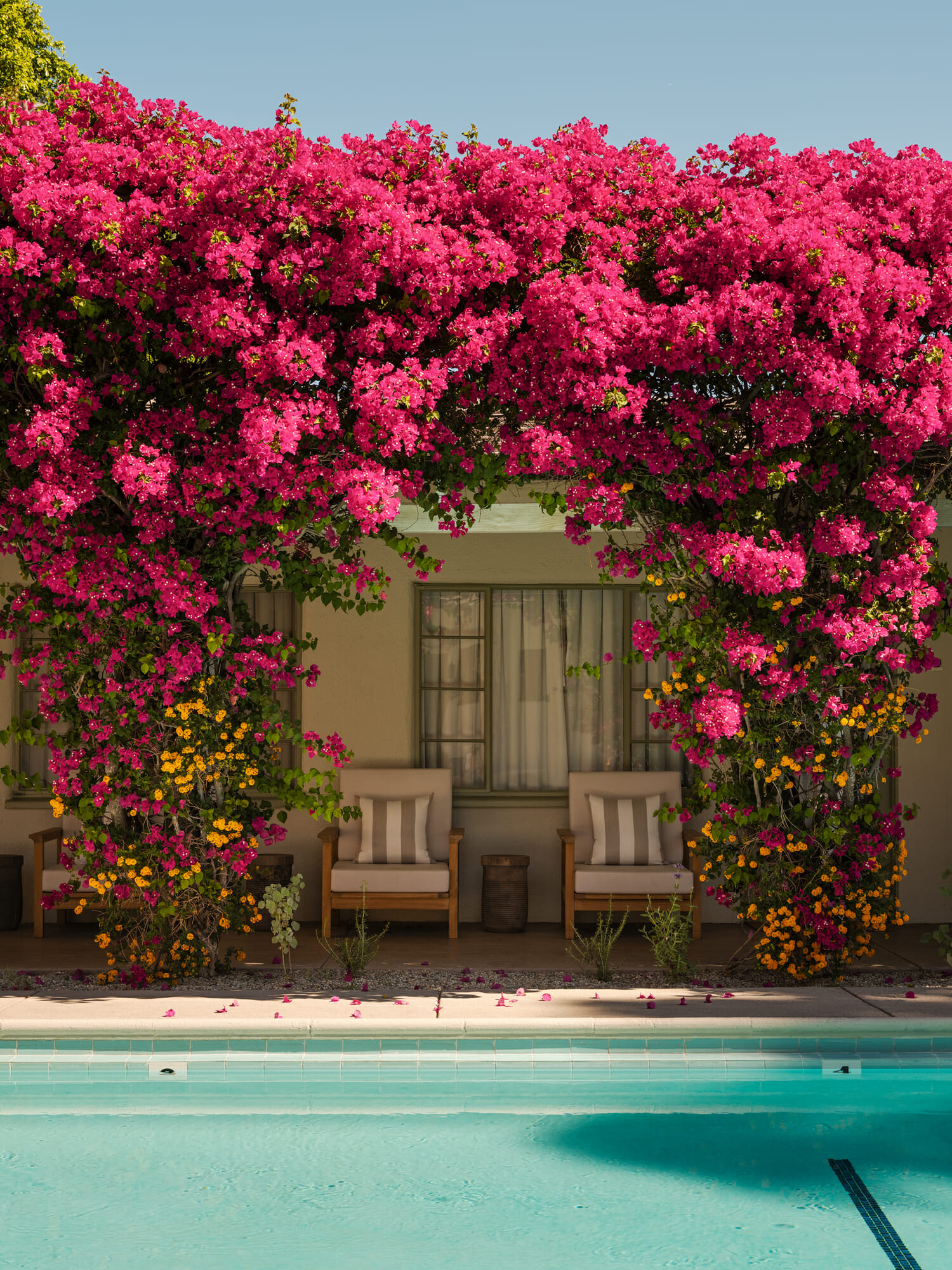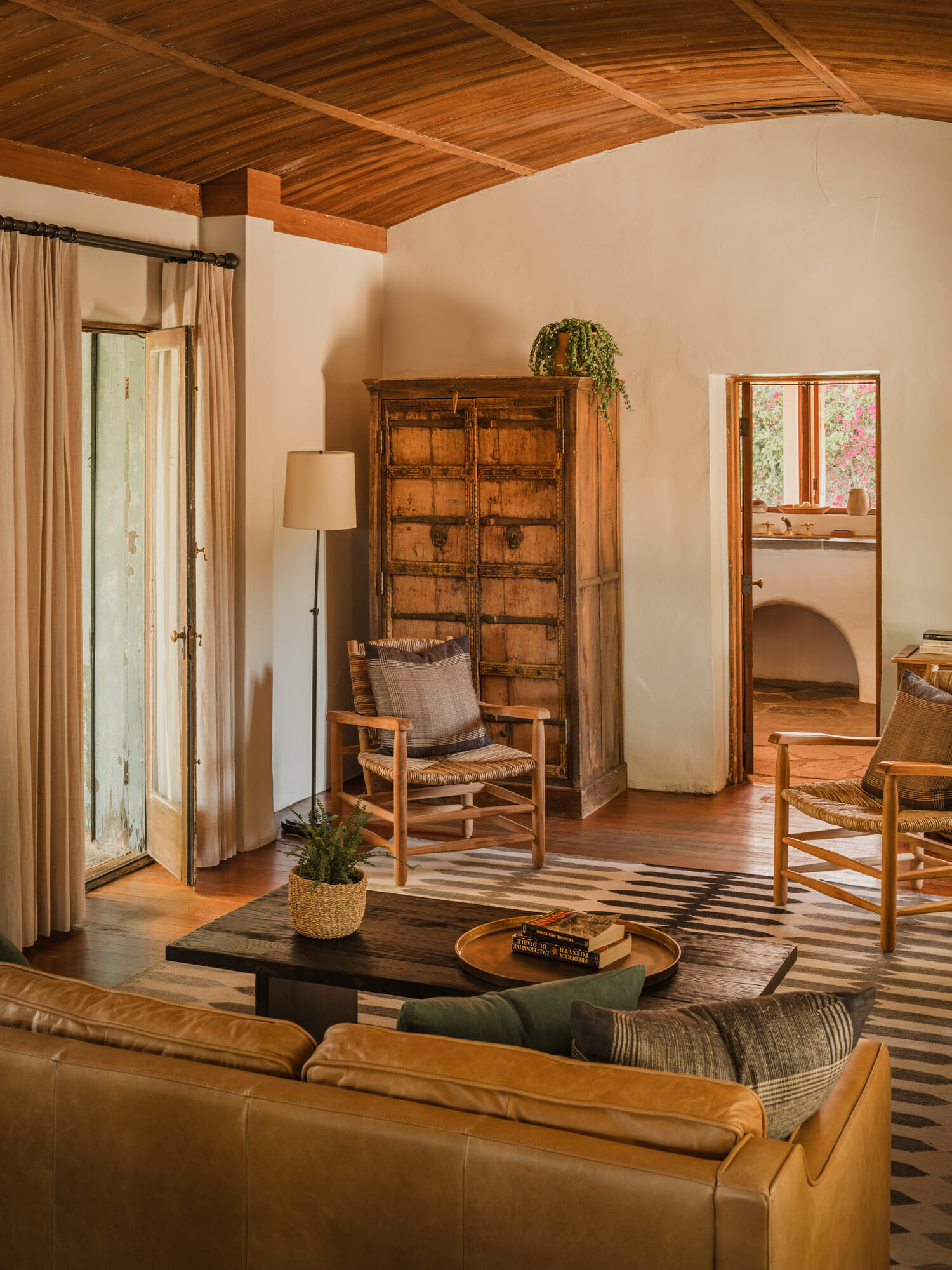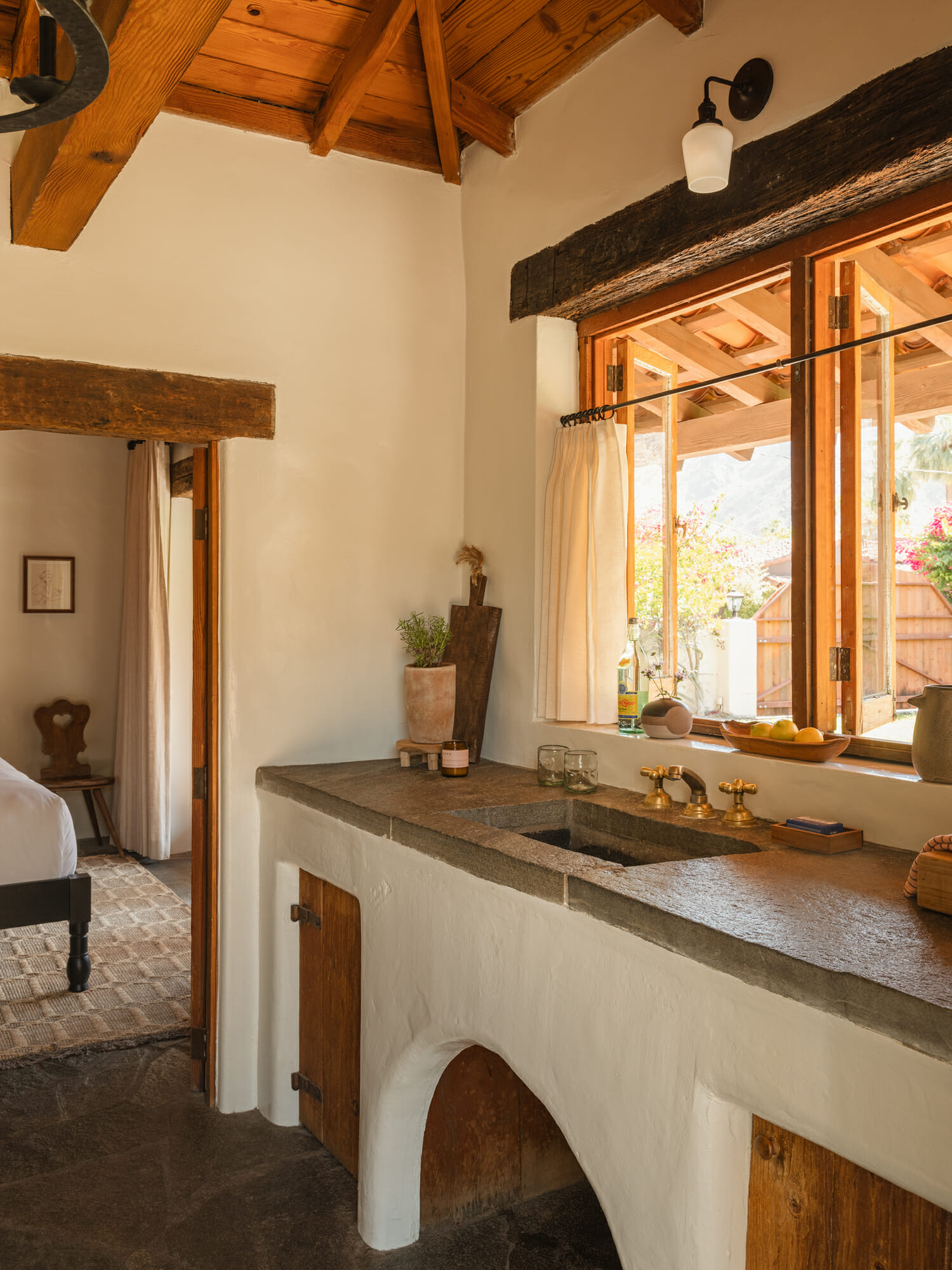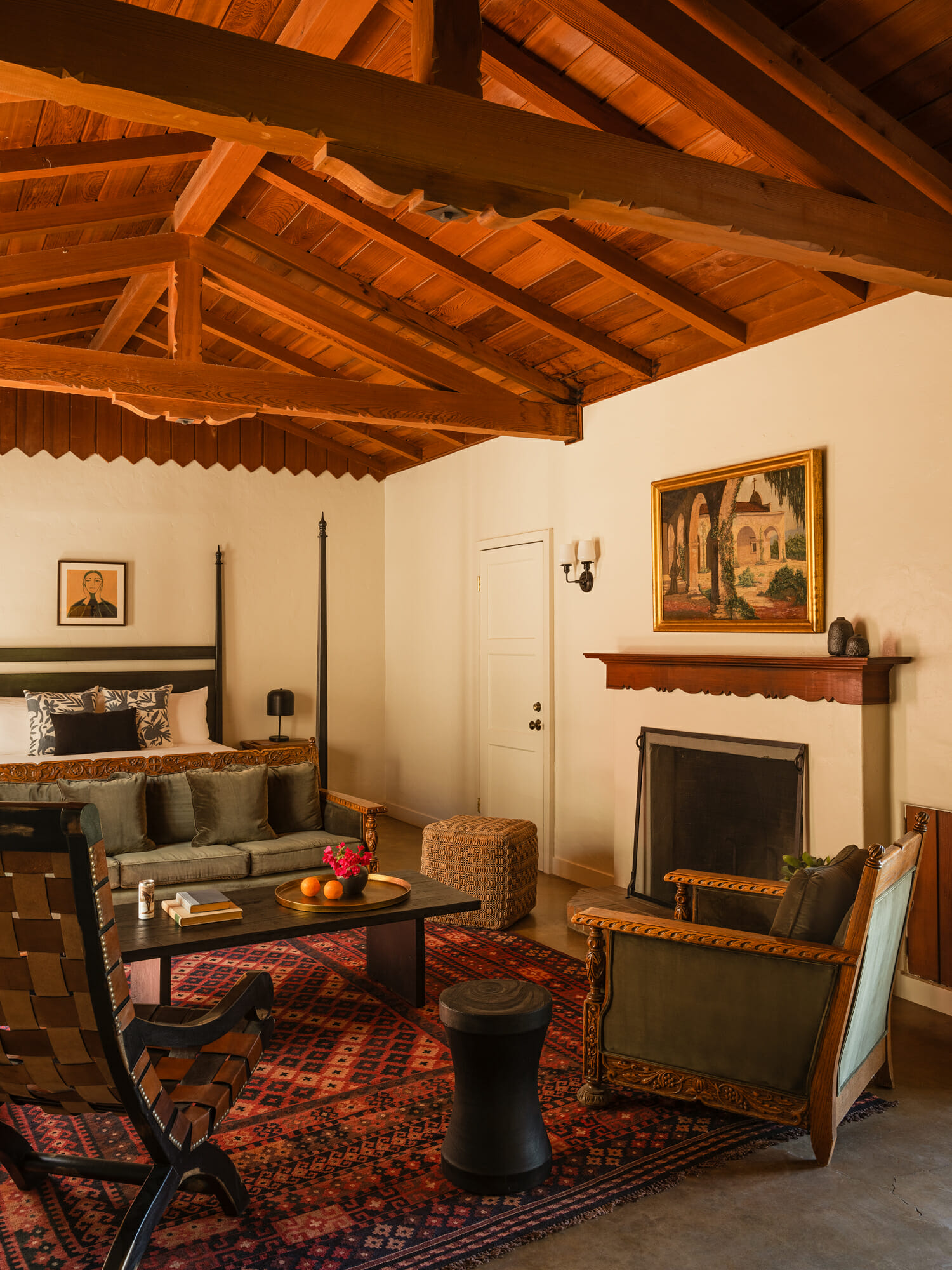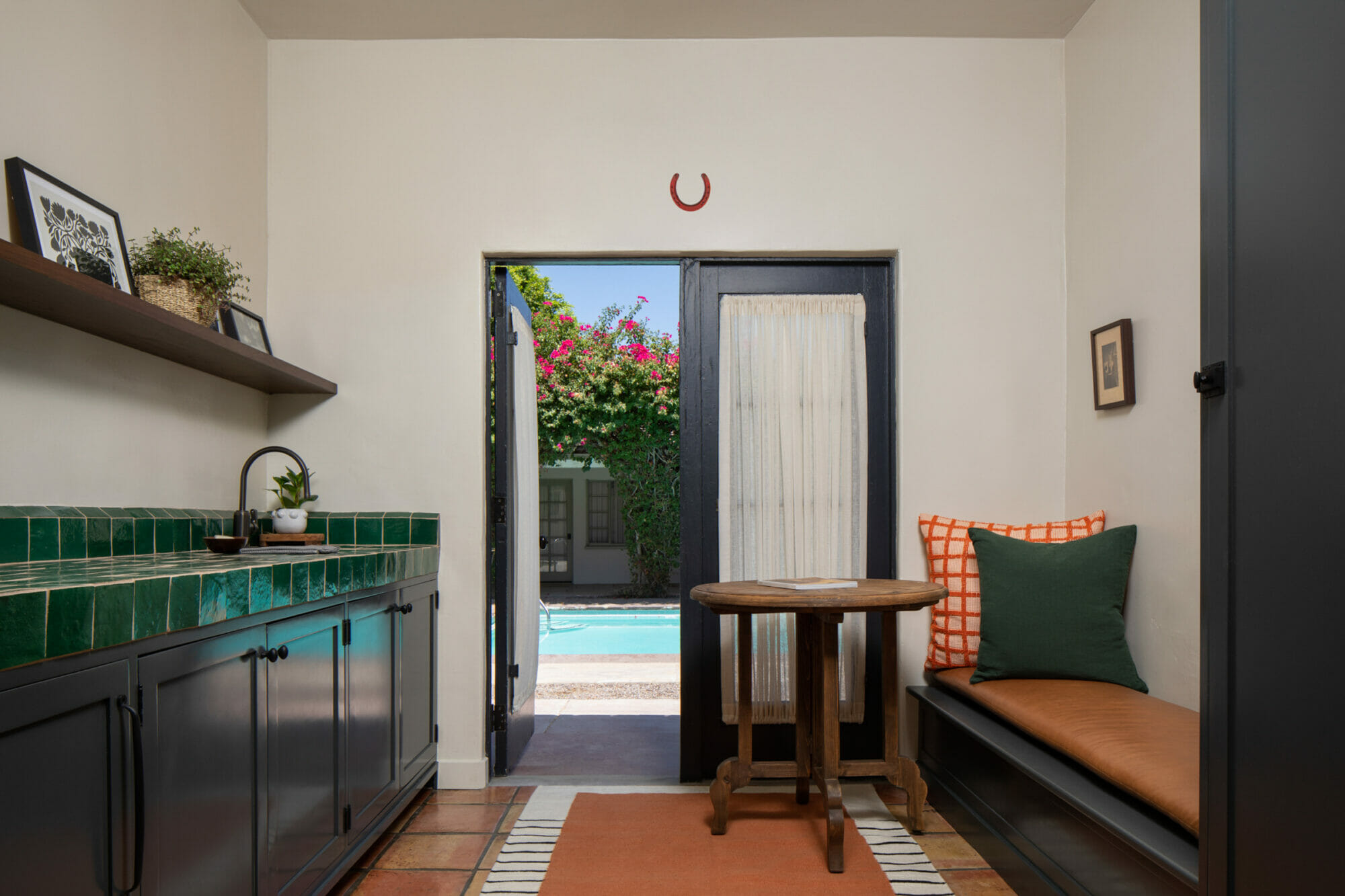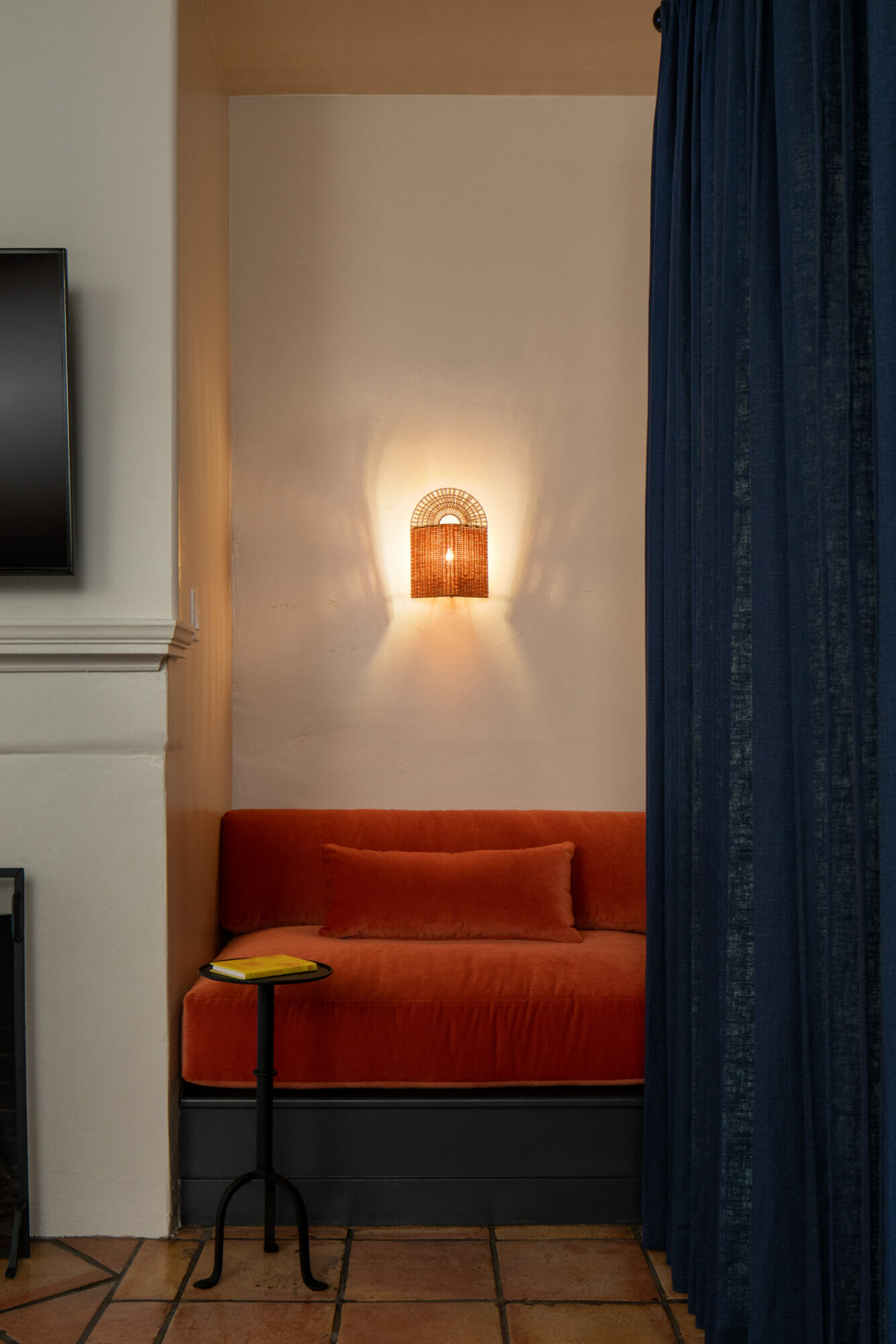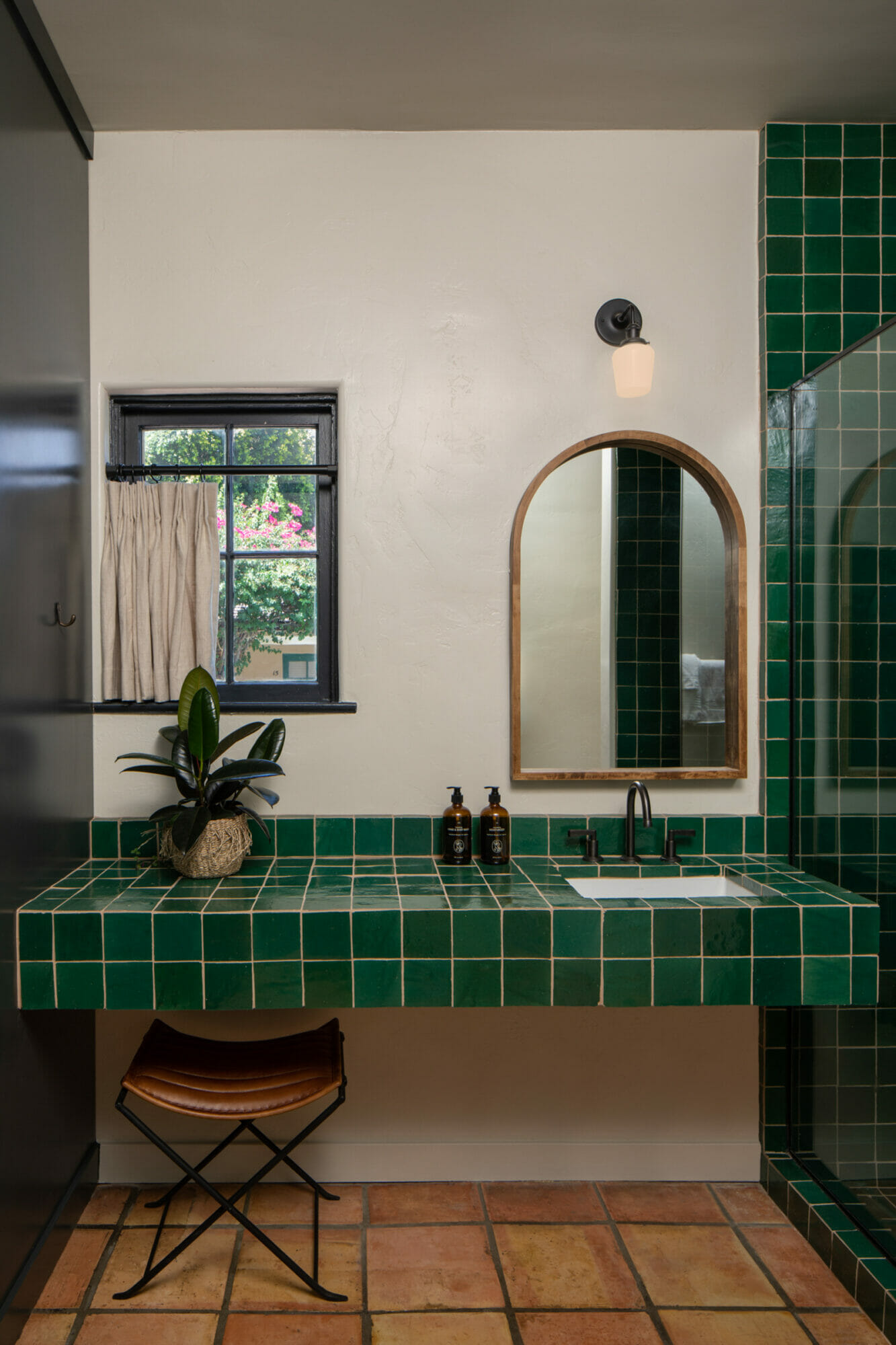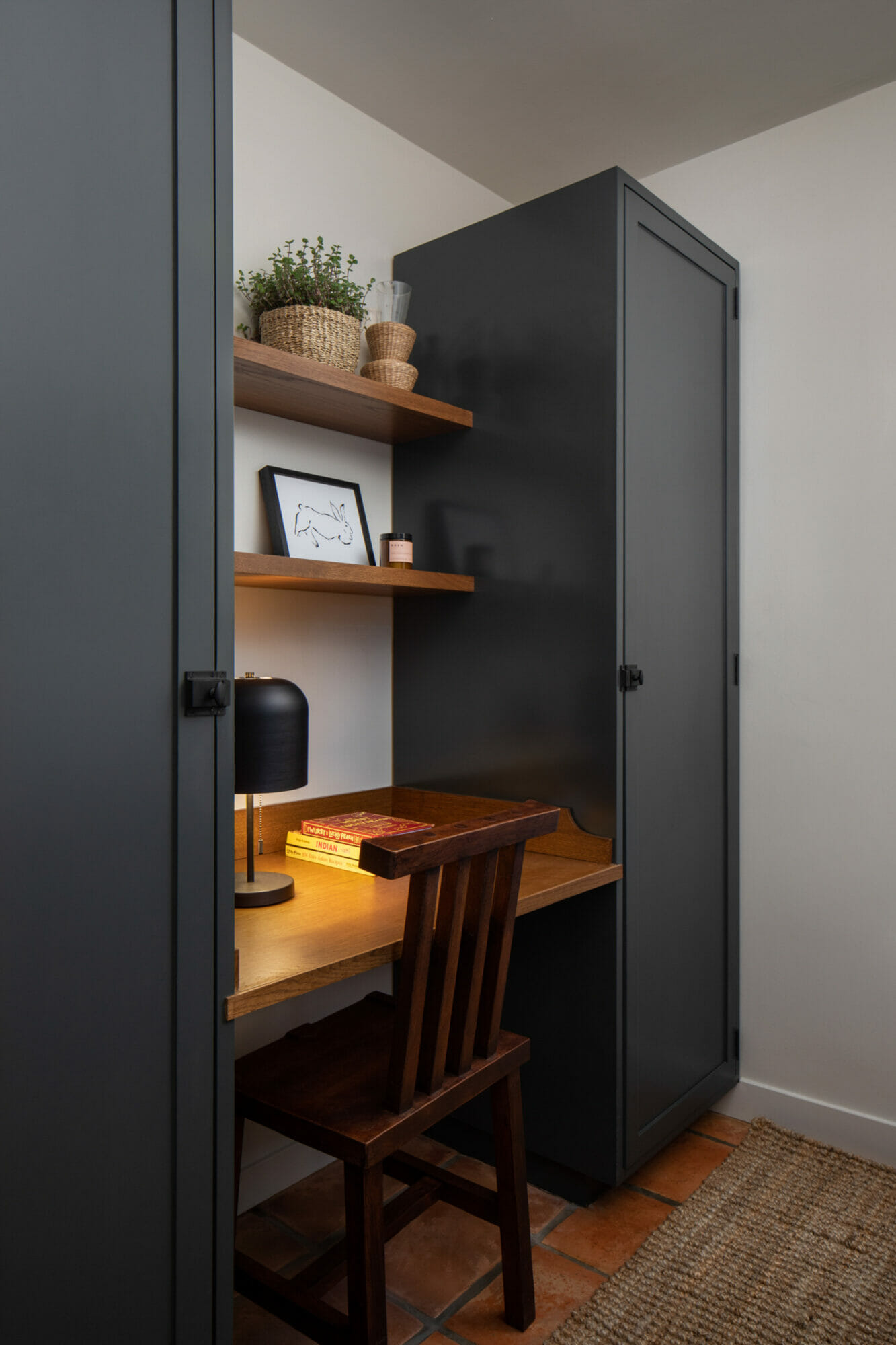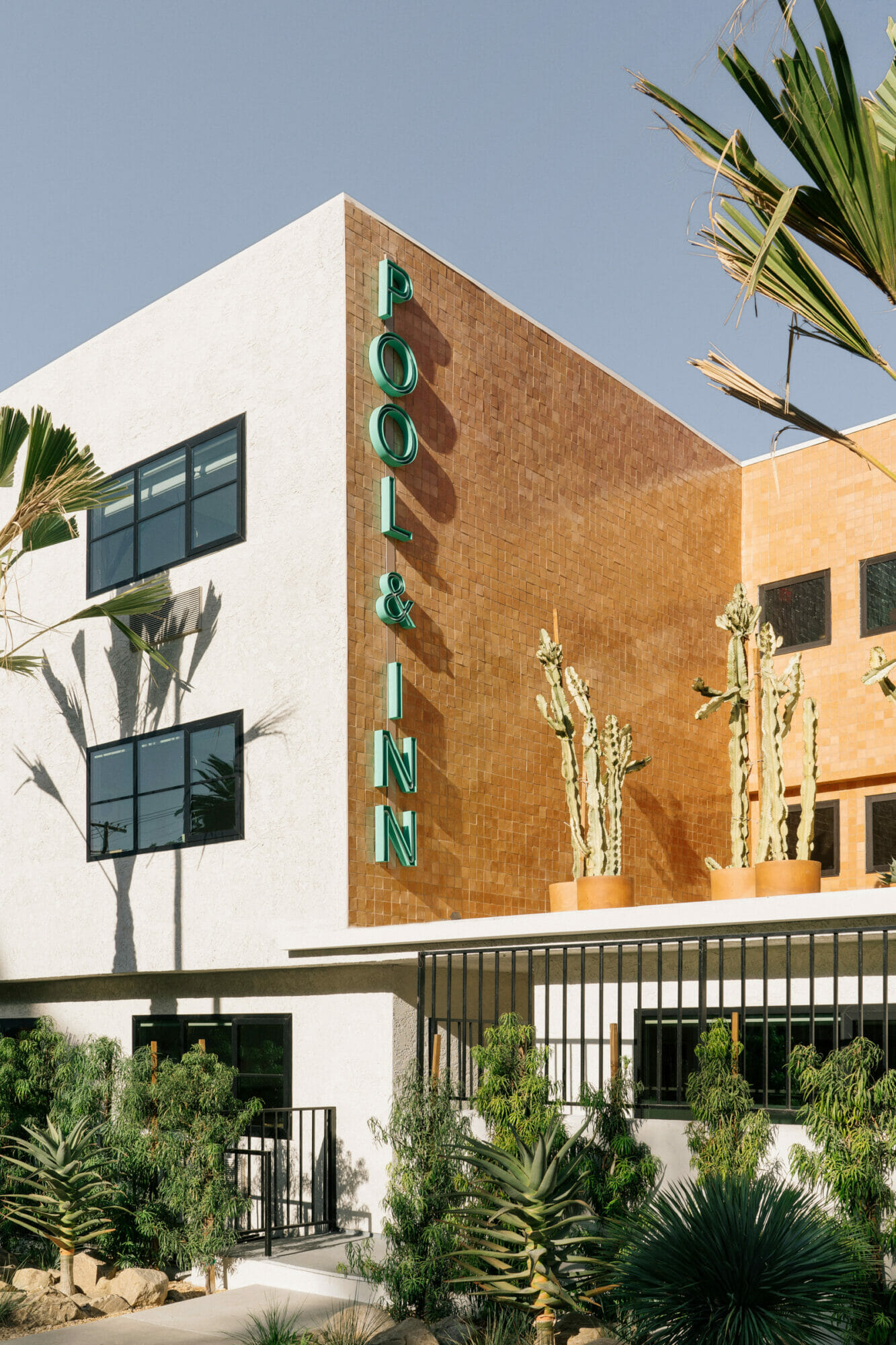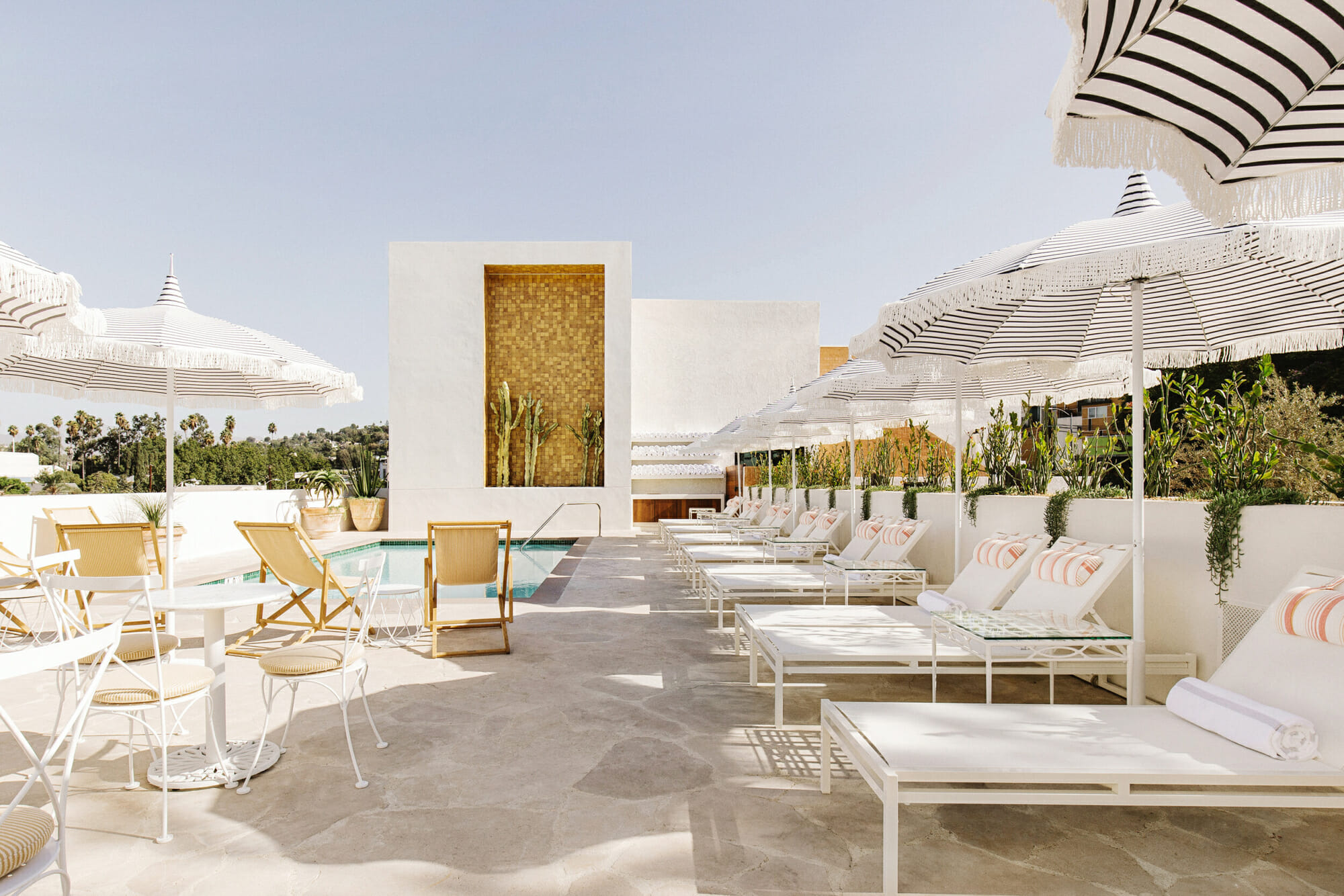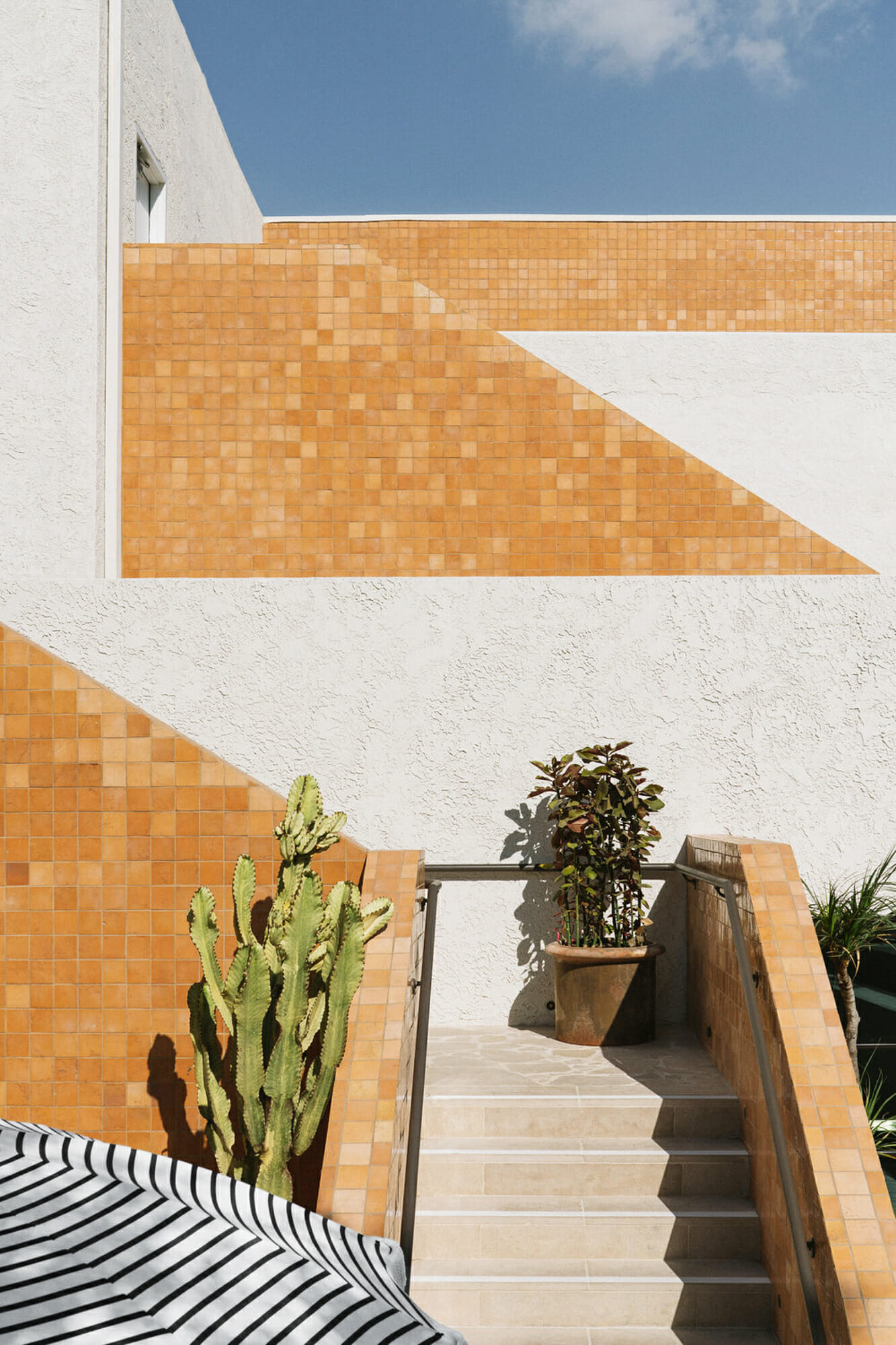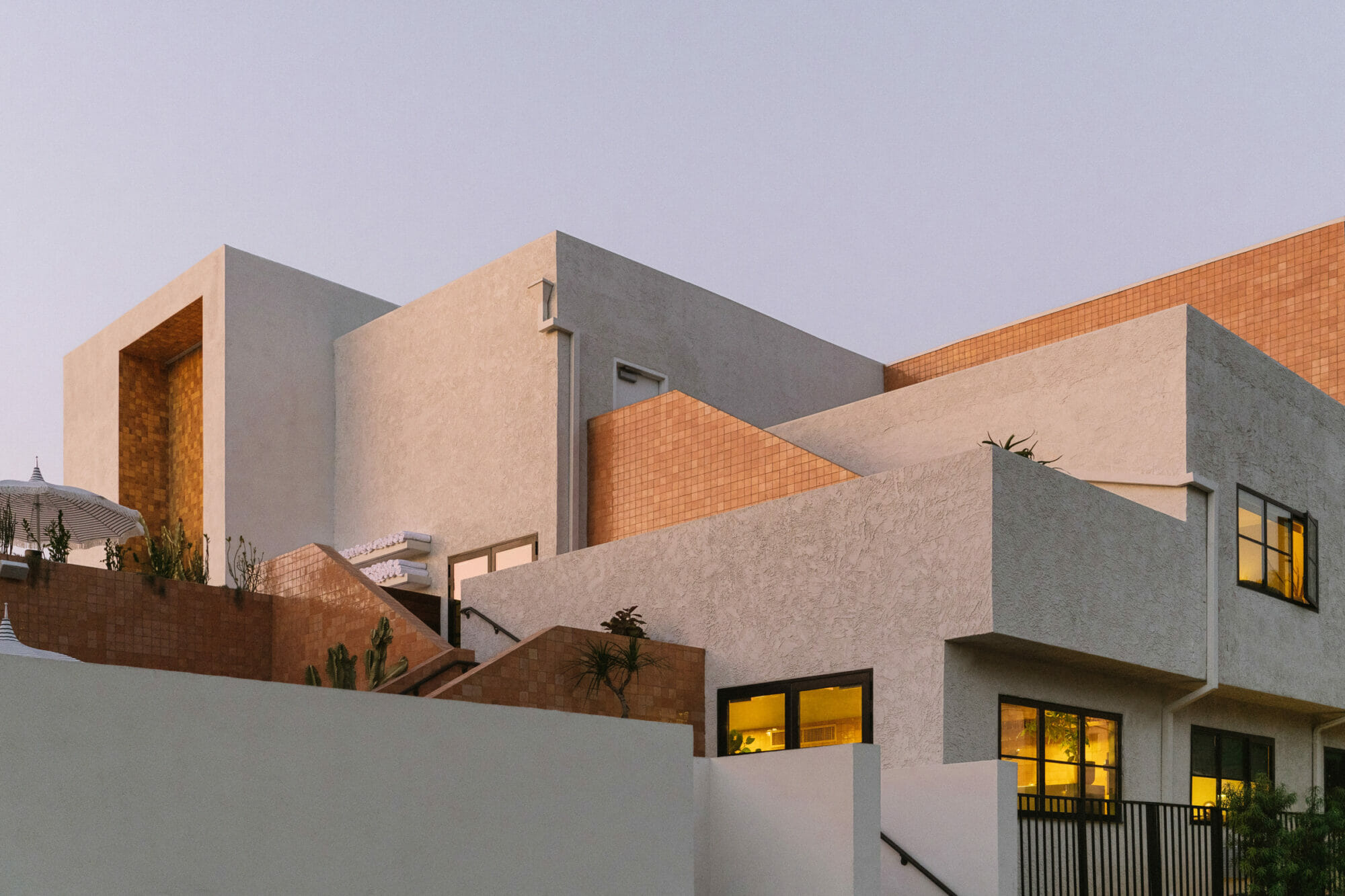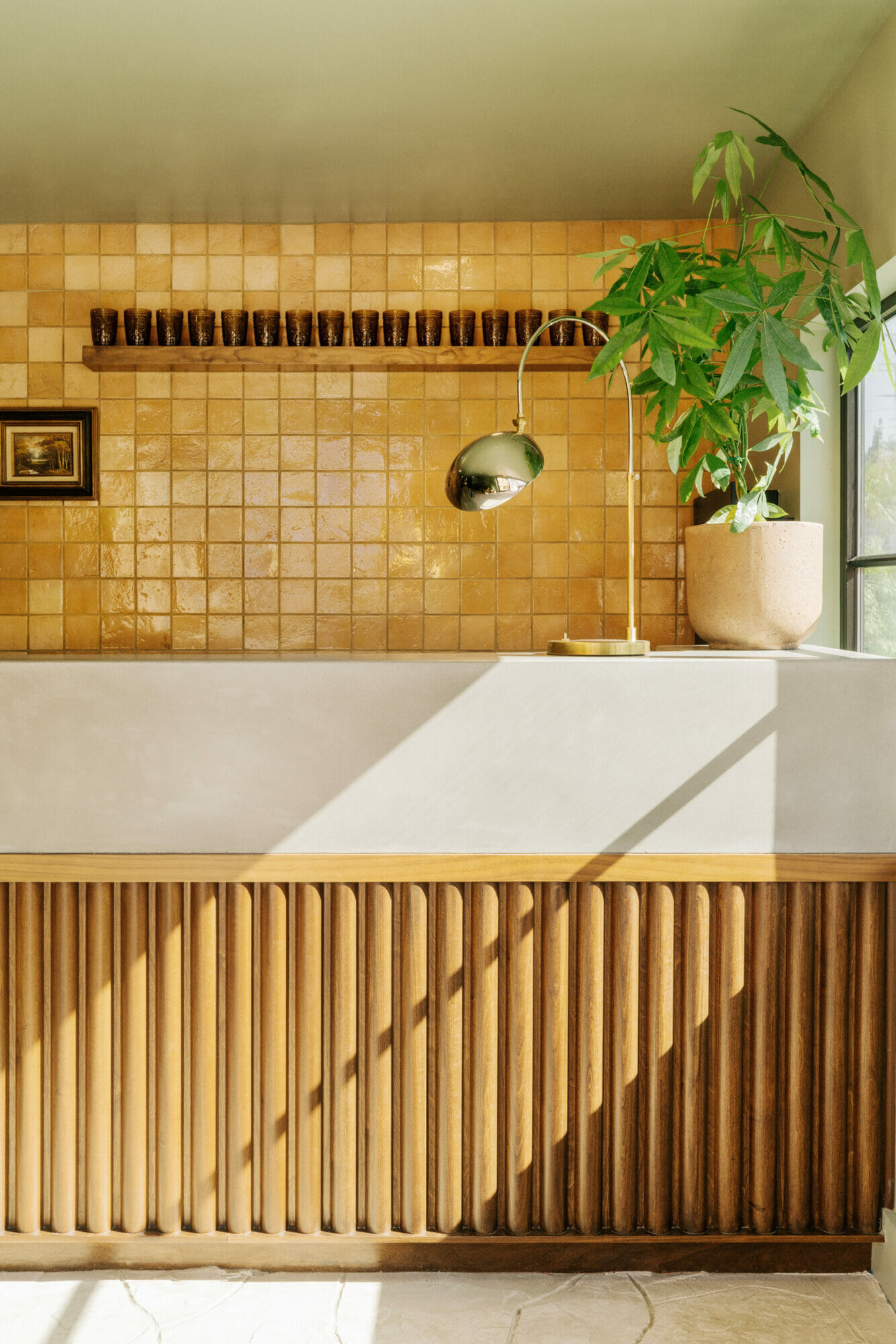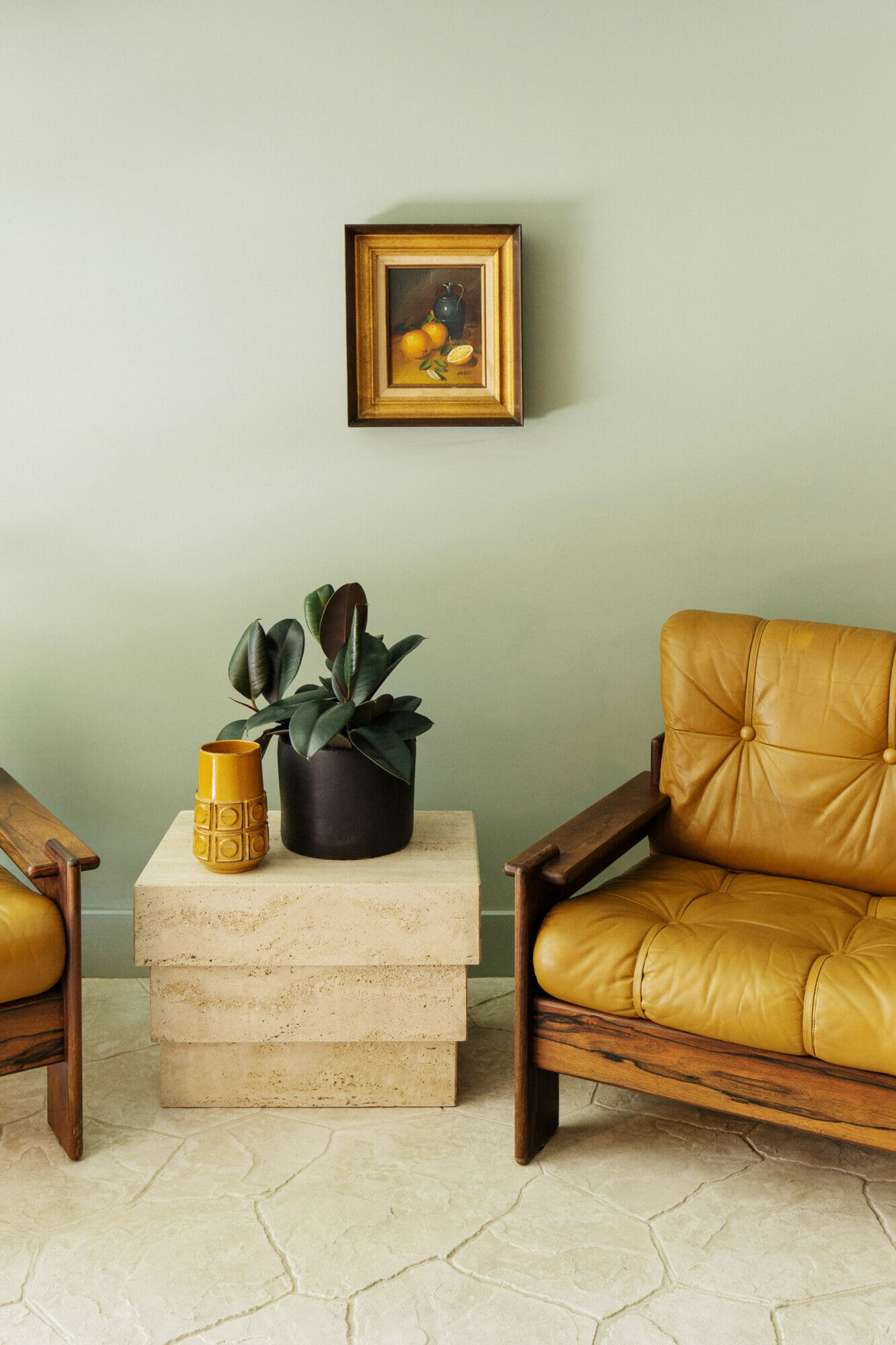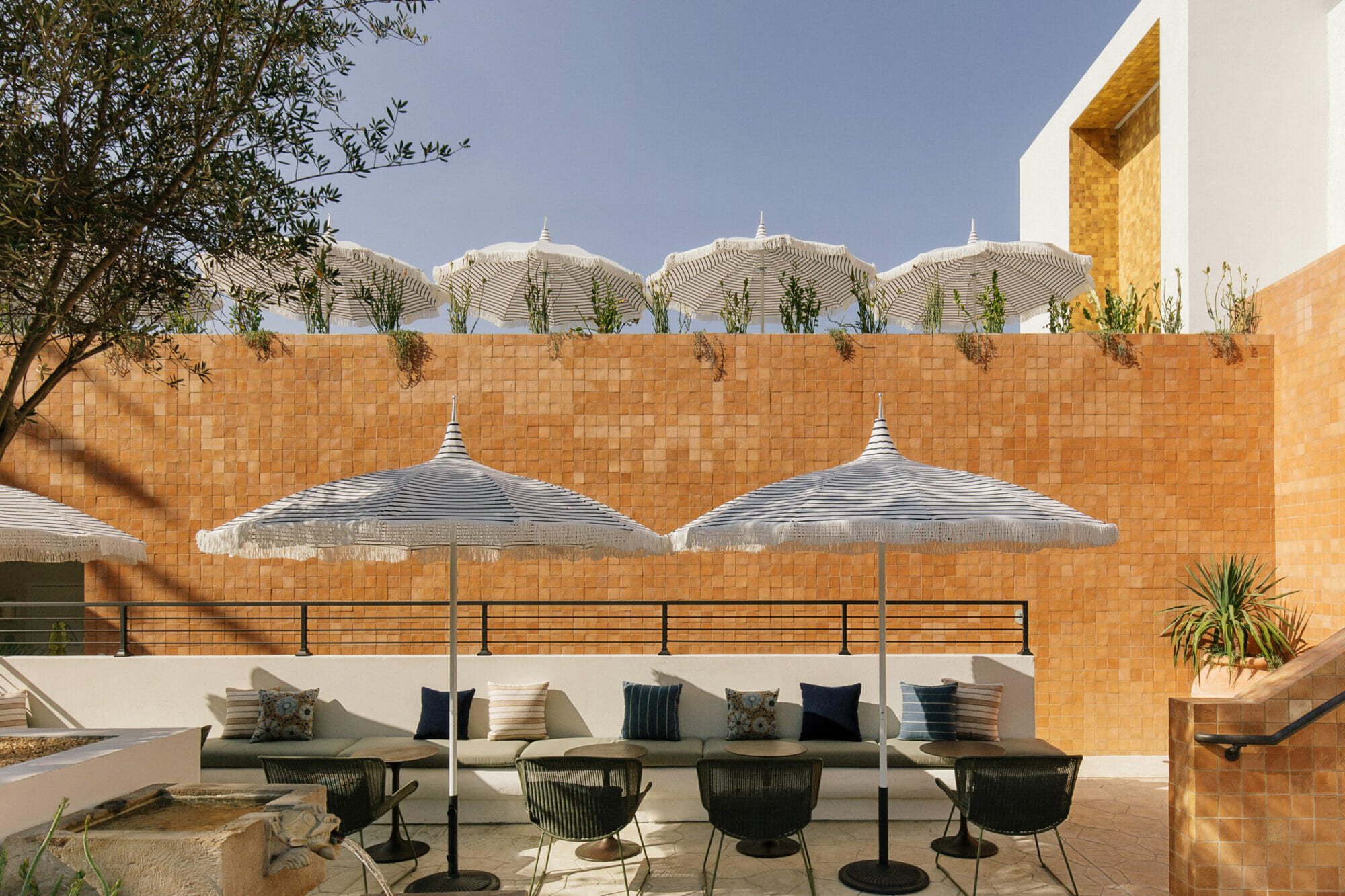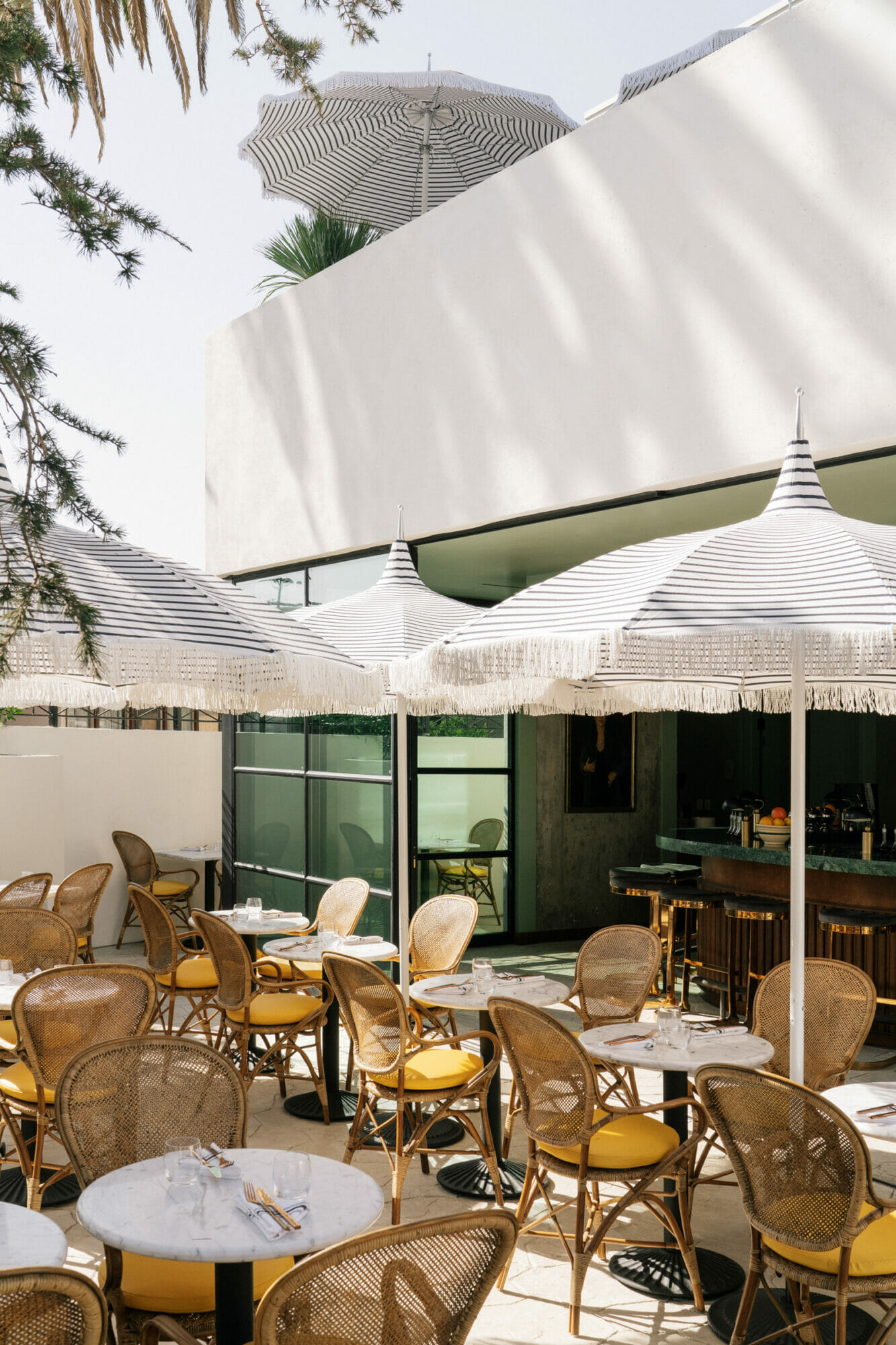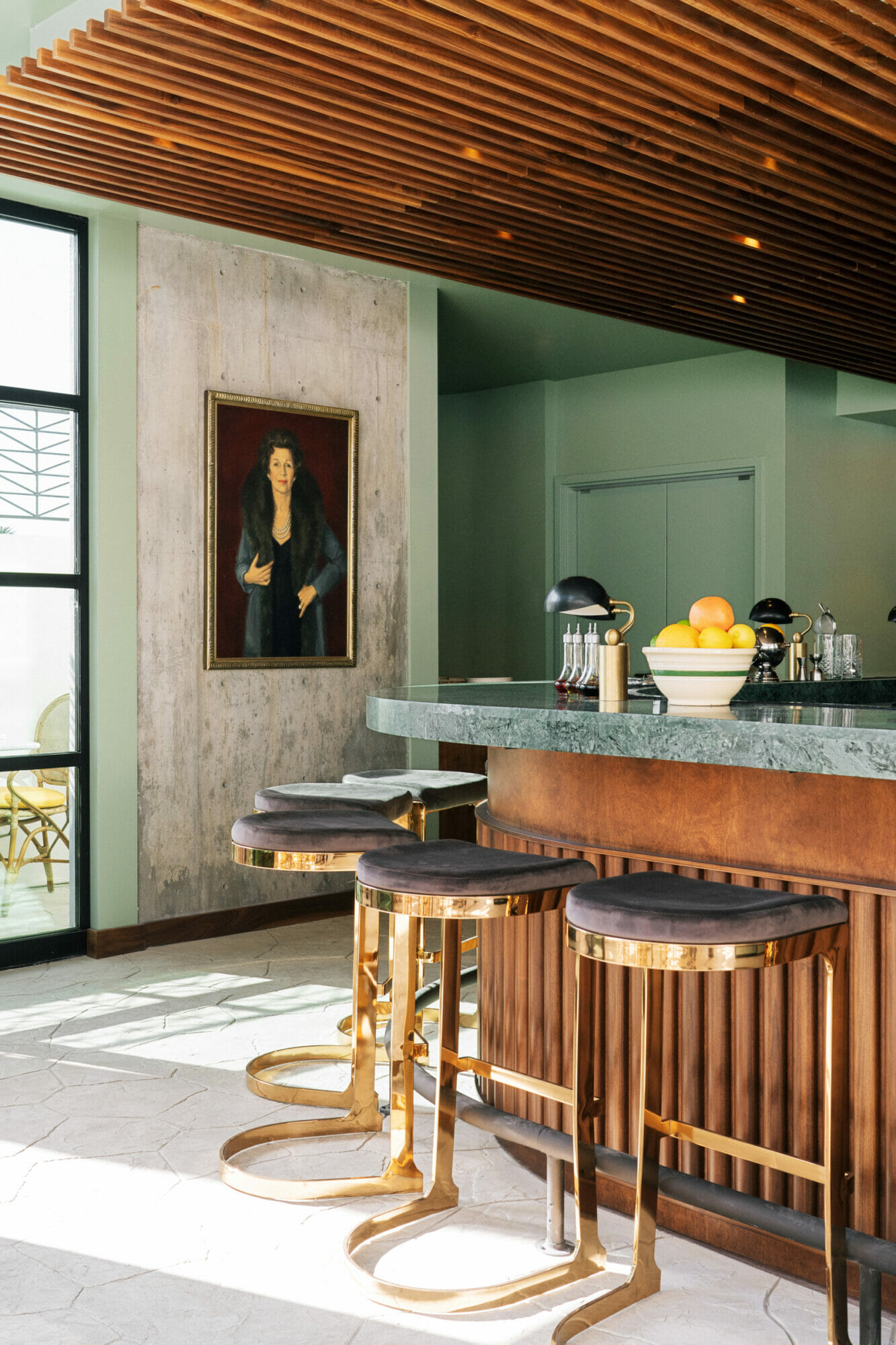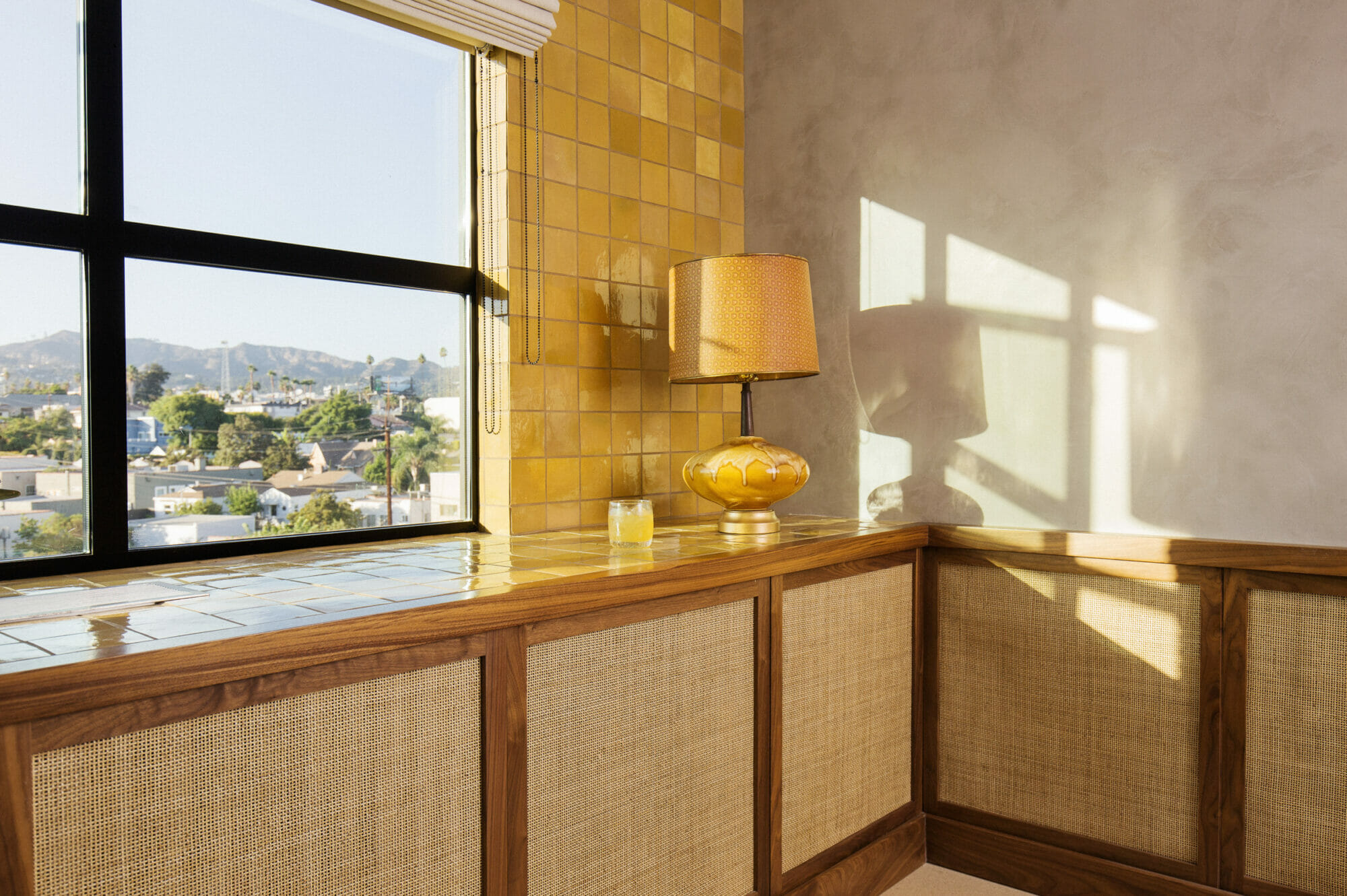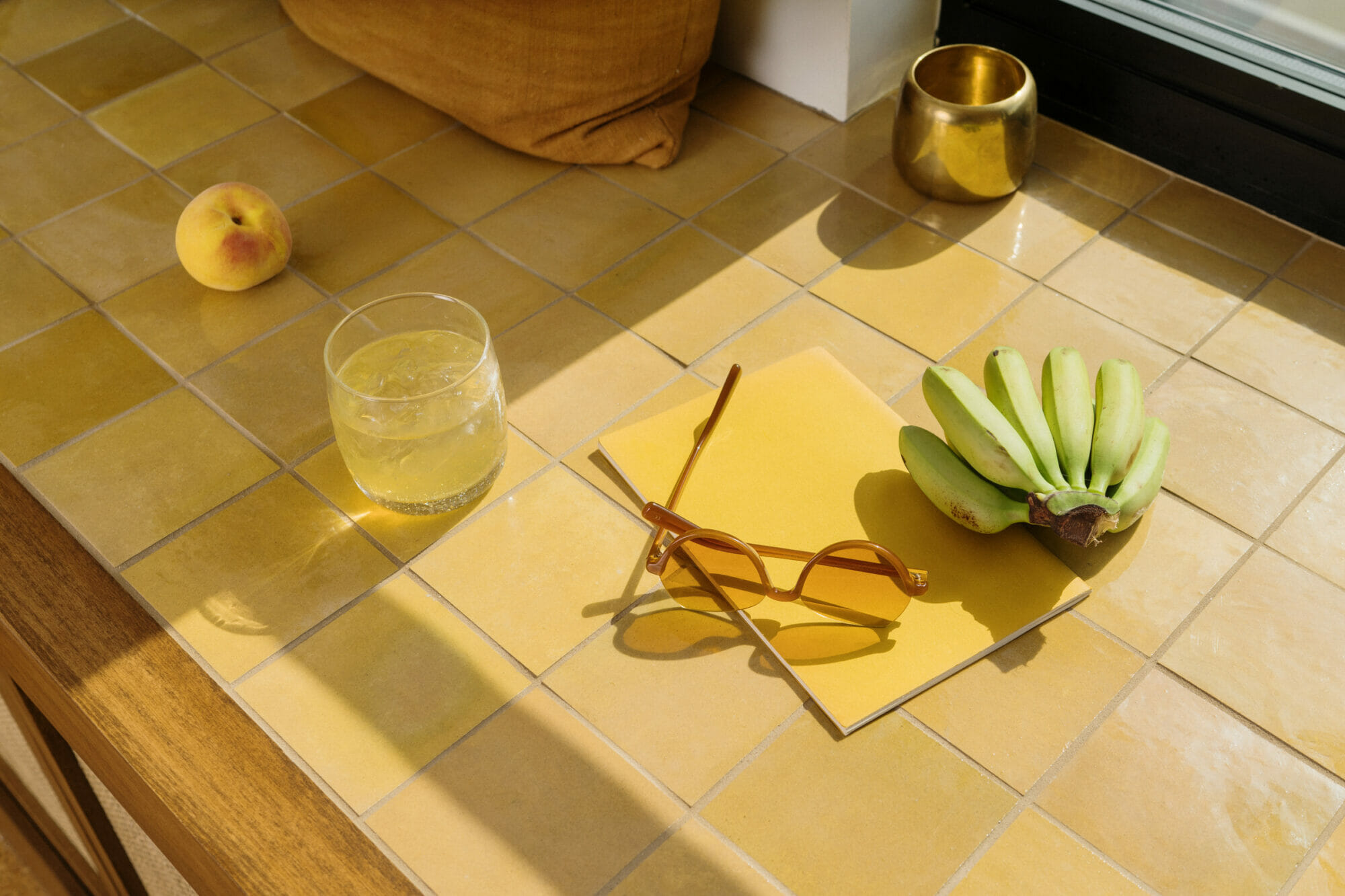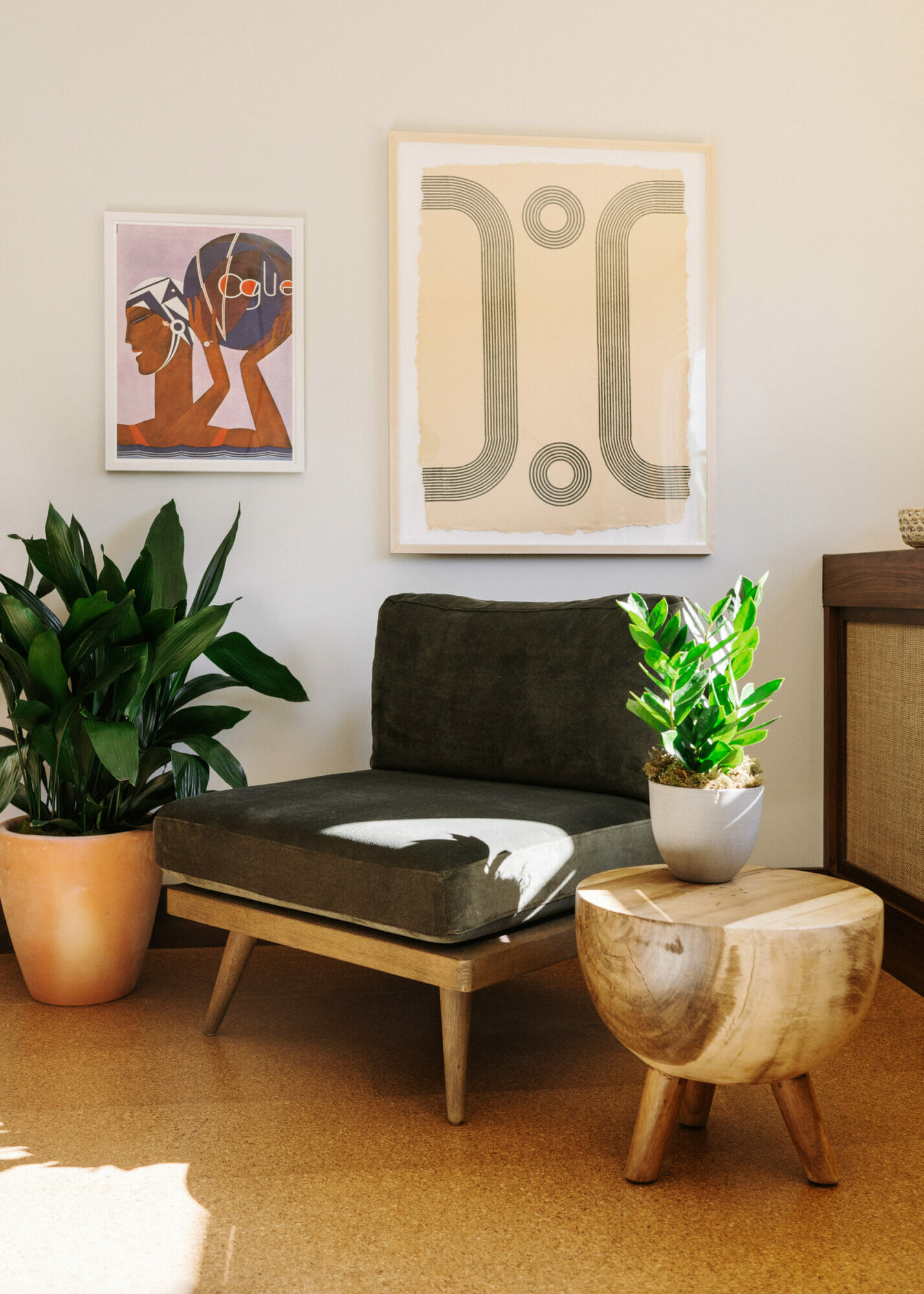photogaphy by Chris Mottalini
Casa Loma is inspired by Laguna Beach’s creative energy and history of craftsmanship. The thoughtfully re-designed hotel is understated seaside sanctuary, balancing vibrant social spaces with opportunities for quiet reflection. Natural textures, handcrafted details, and lush greenery cultivate a timeless yet relaxed atmosphere just steps from the ocean.
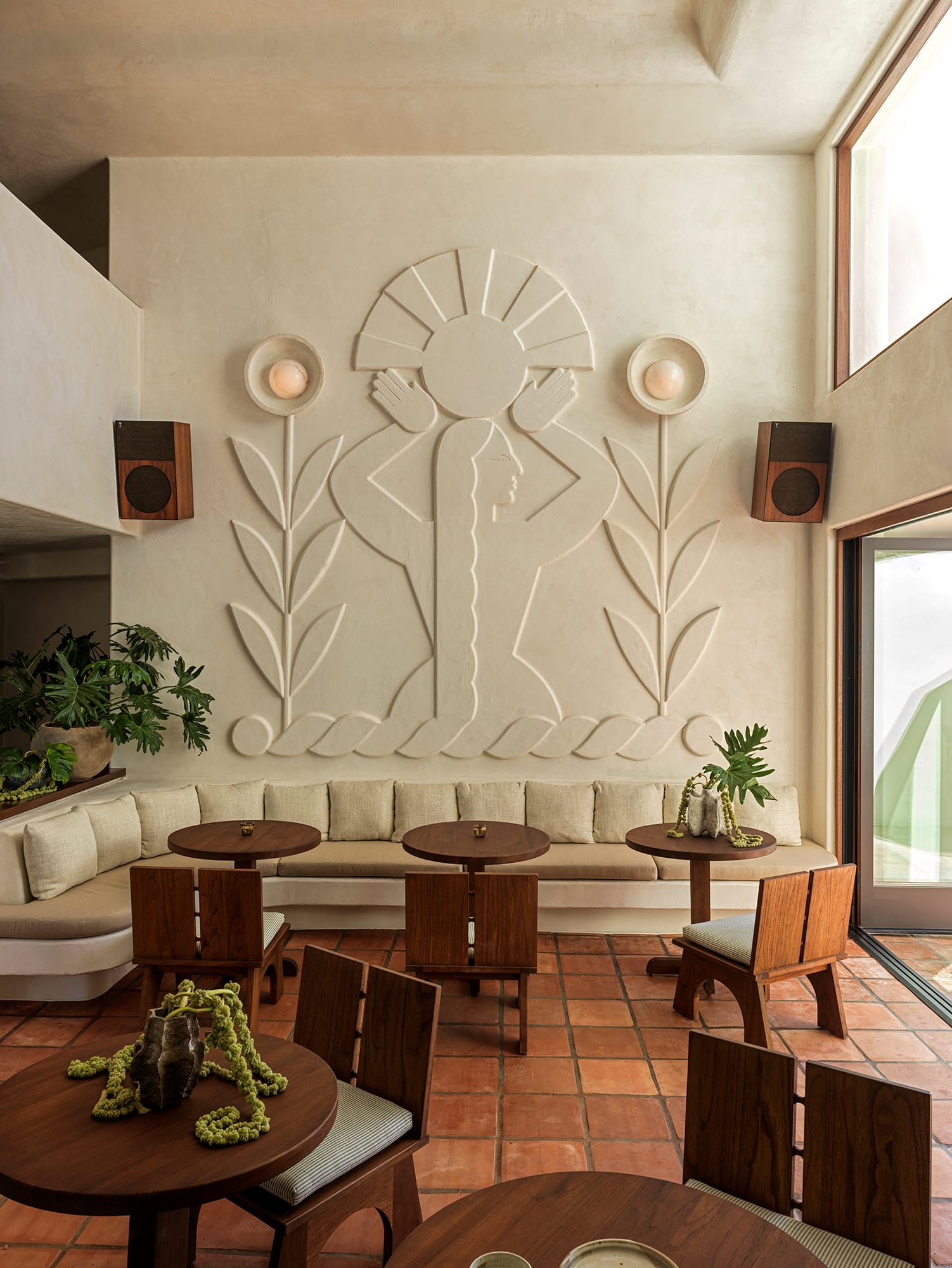
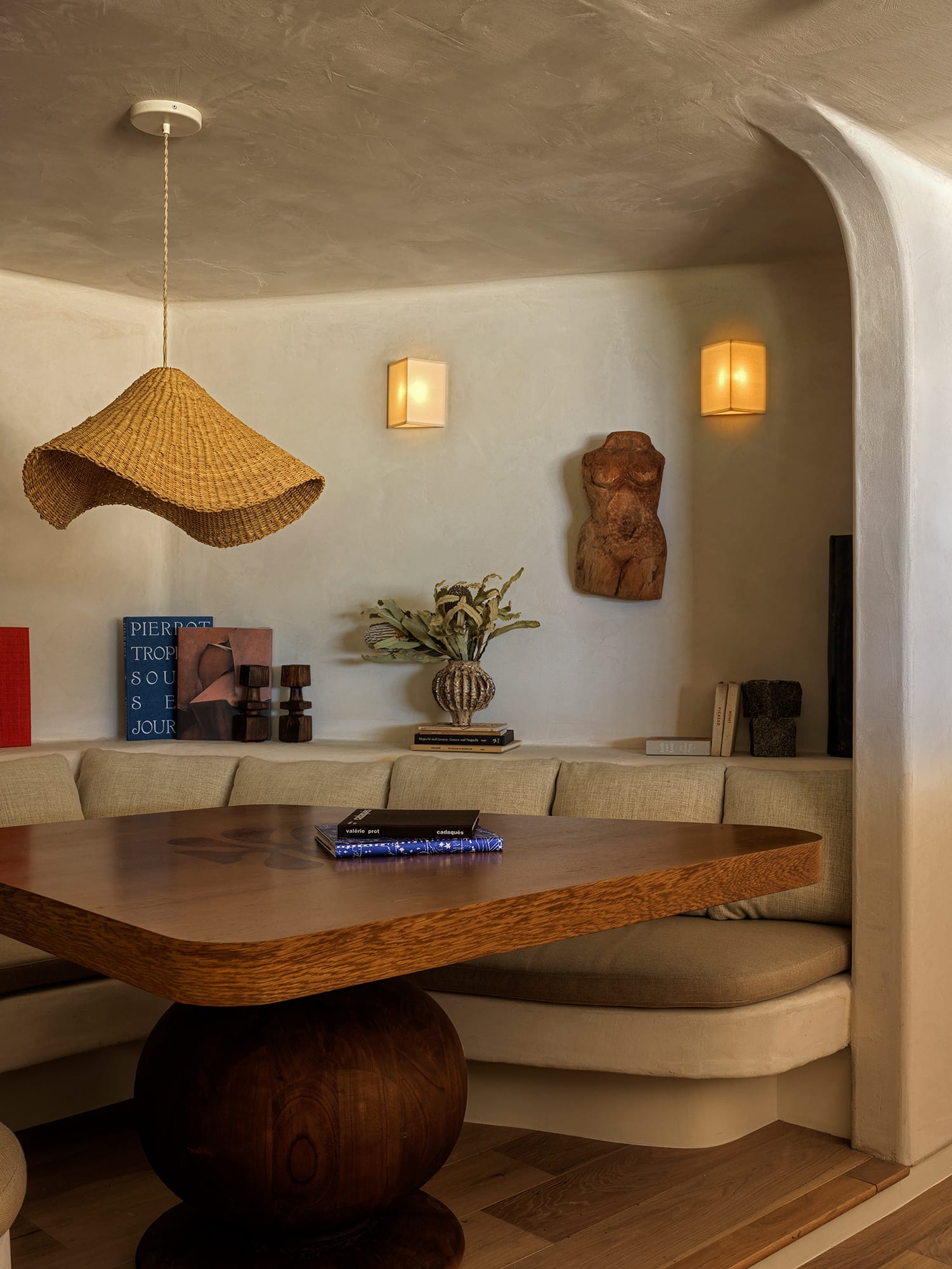
The lobby serves as a warm, art-filled gathering space, anchored by a sculpted mural that honors the natural beauty of the Pacific Coast. Earthy tones, vintage-inspired furnishings, and handcrafted details create a welcoming ambiance that blends history, art, and coastal charm.
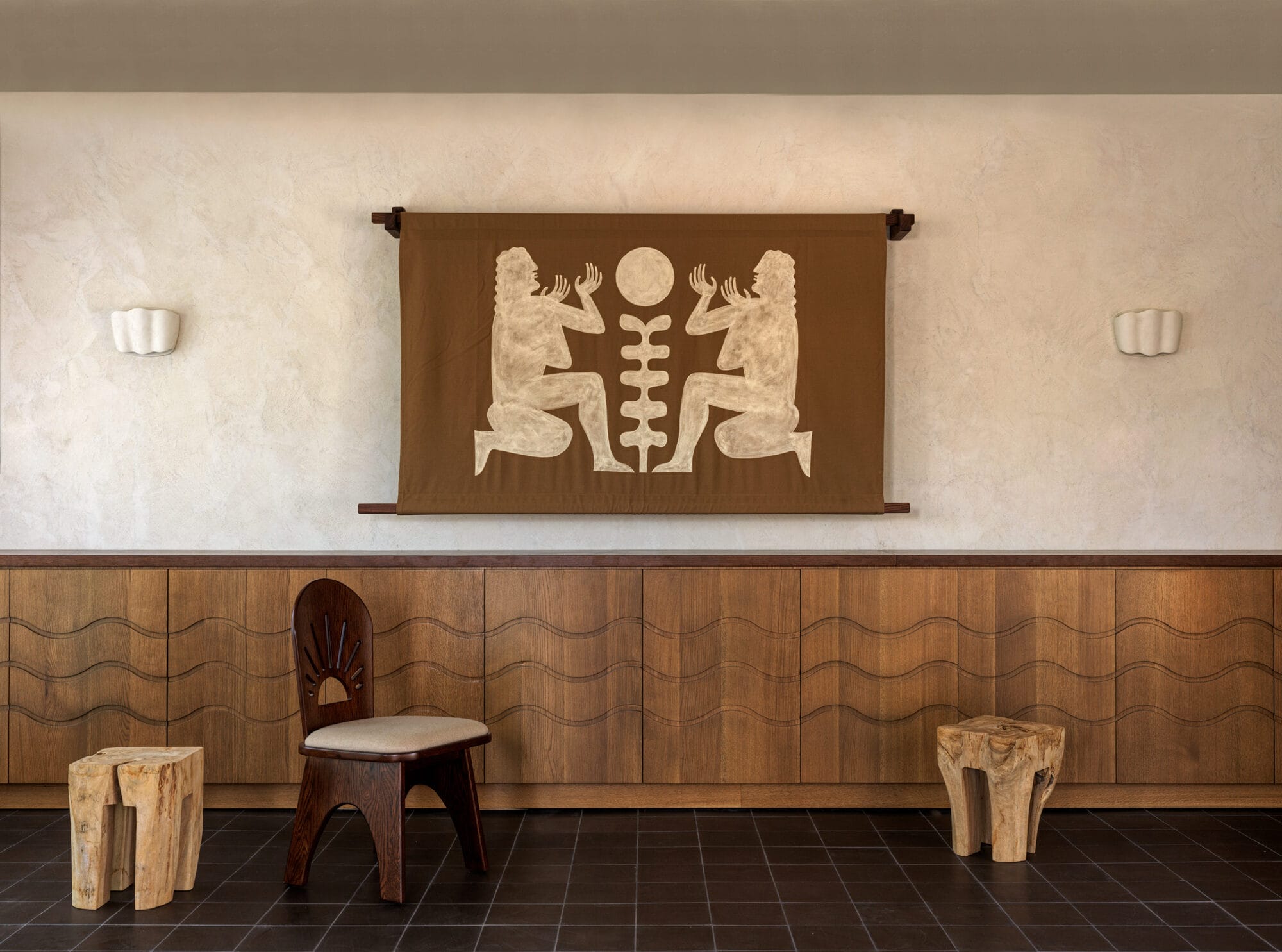
The lobby bar & lounge encourage reflection and communing with others amongst curated tunes. Oxblood tile work surrounds the bar, awakening a playful place to meet creatives and adventurers. Sculpted formal elements and custom built-in banquettes welcome guests to connect in an intimate way.
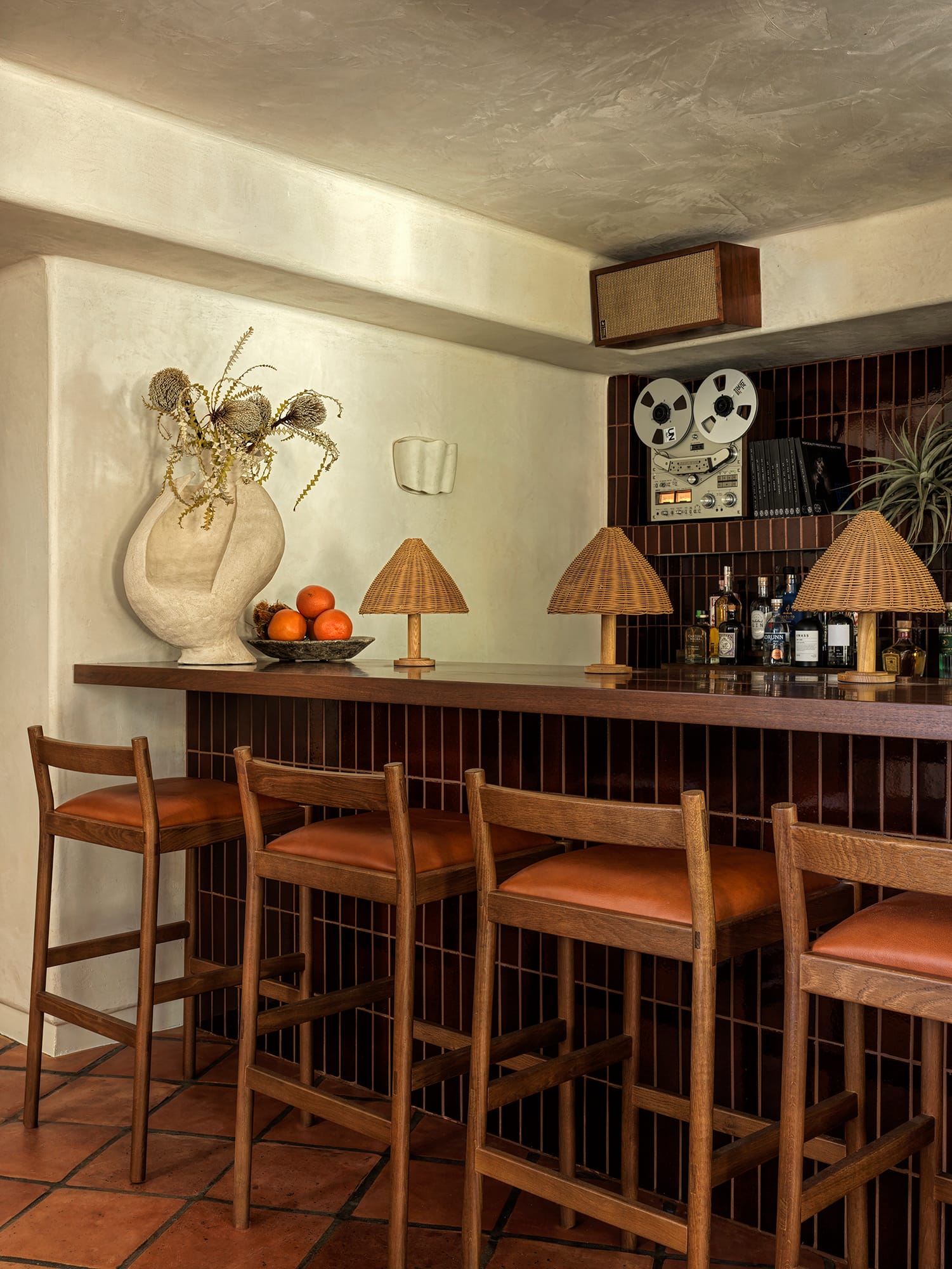
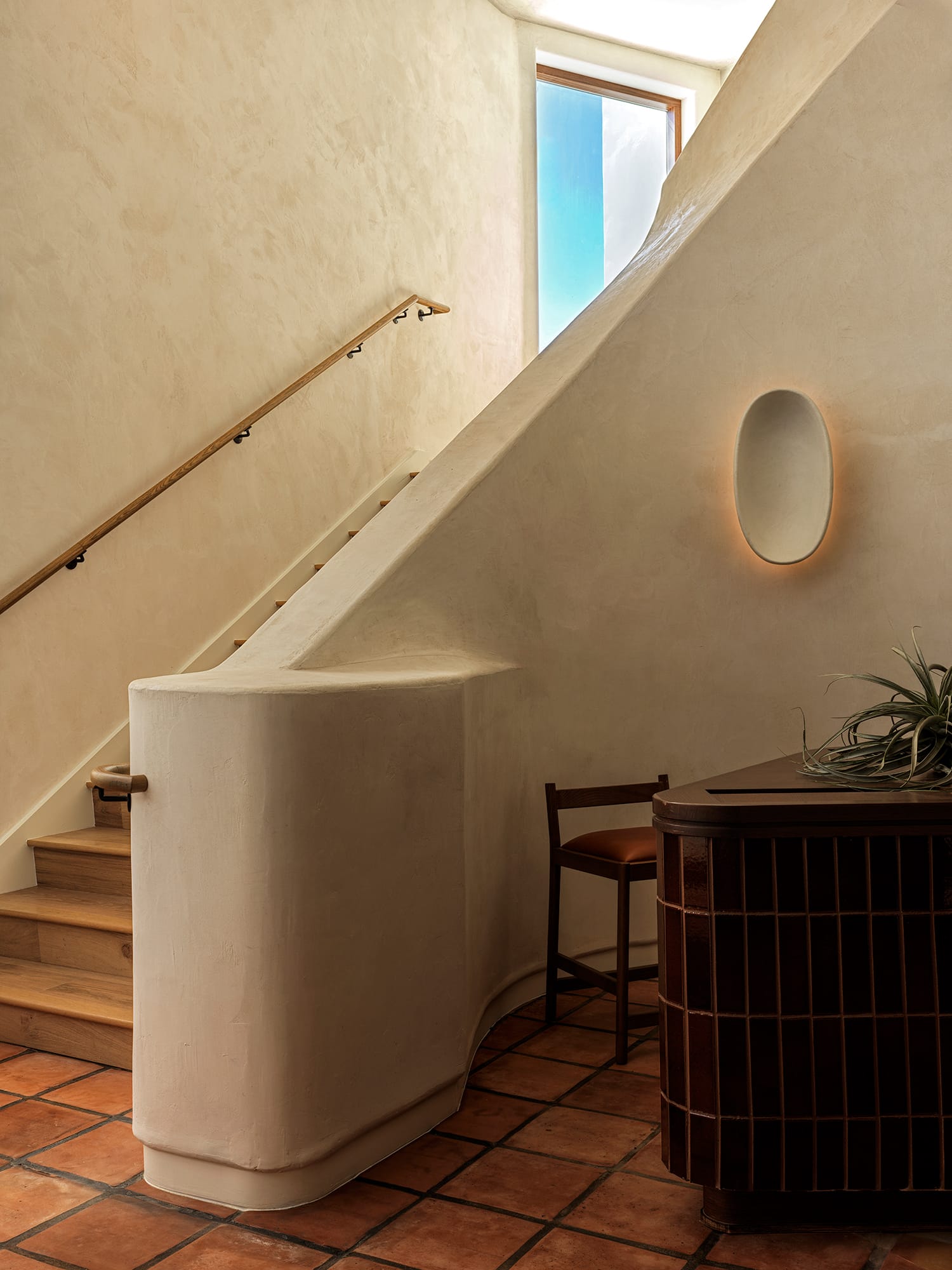
The guest rooms offer a refined yet effortless retreat, merging soft textures, natural materials, and built-in furnishings for a cohesive, calming feel. Inspired by coastal living, each space is designed for comfort, with a focus on organic elegance and understated luxury.
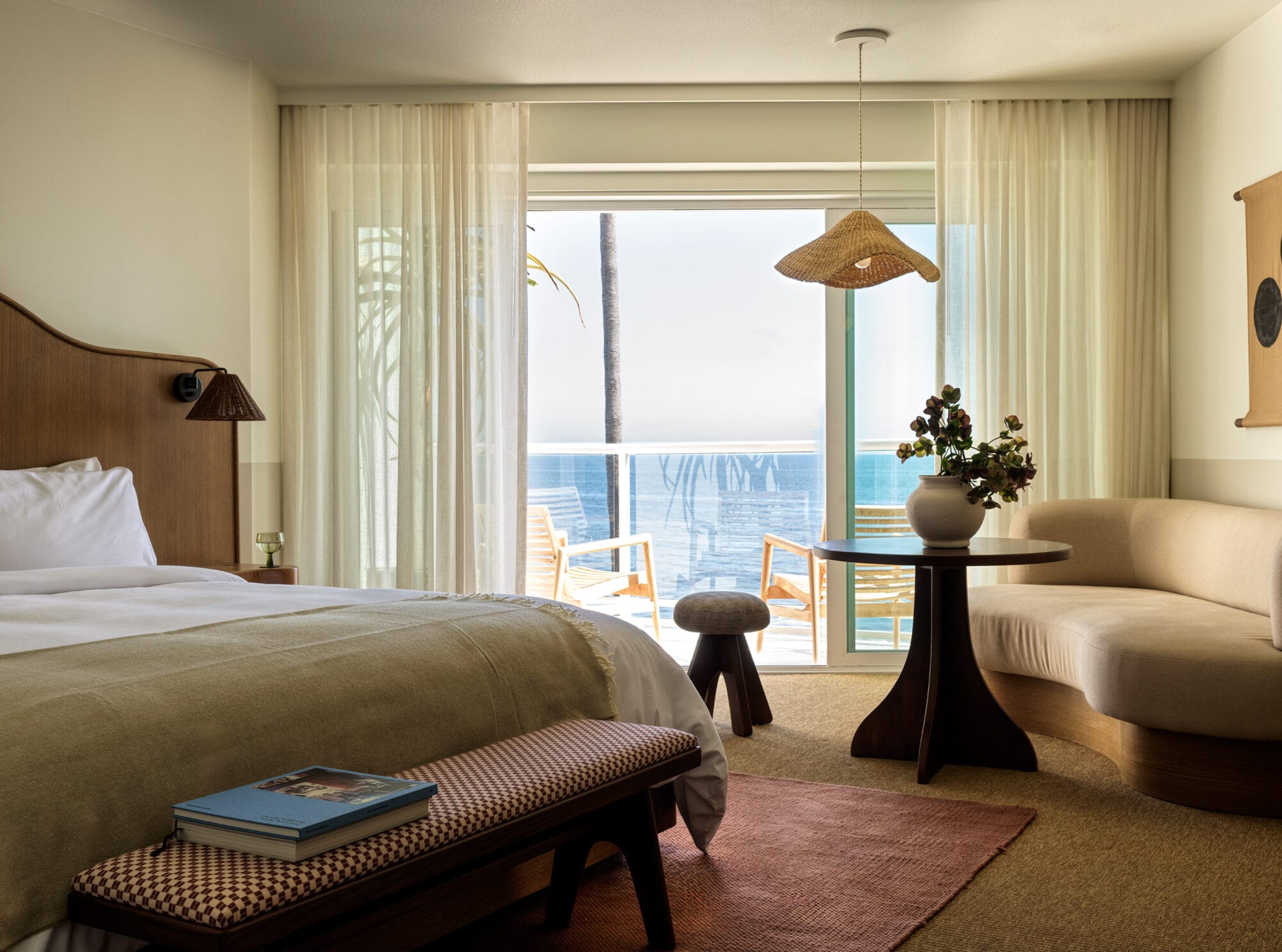

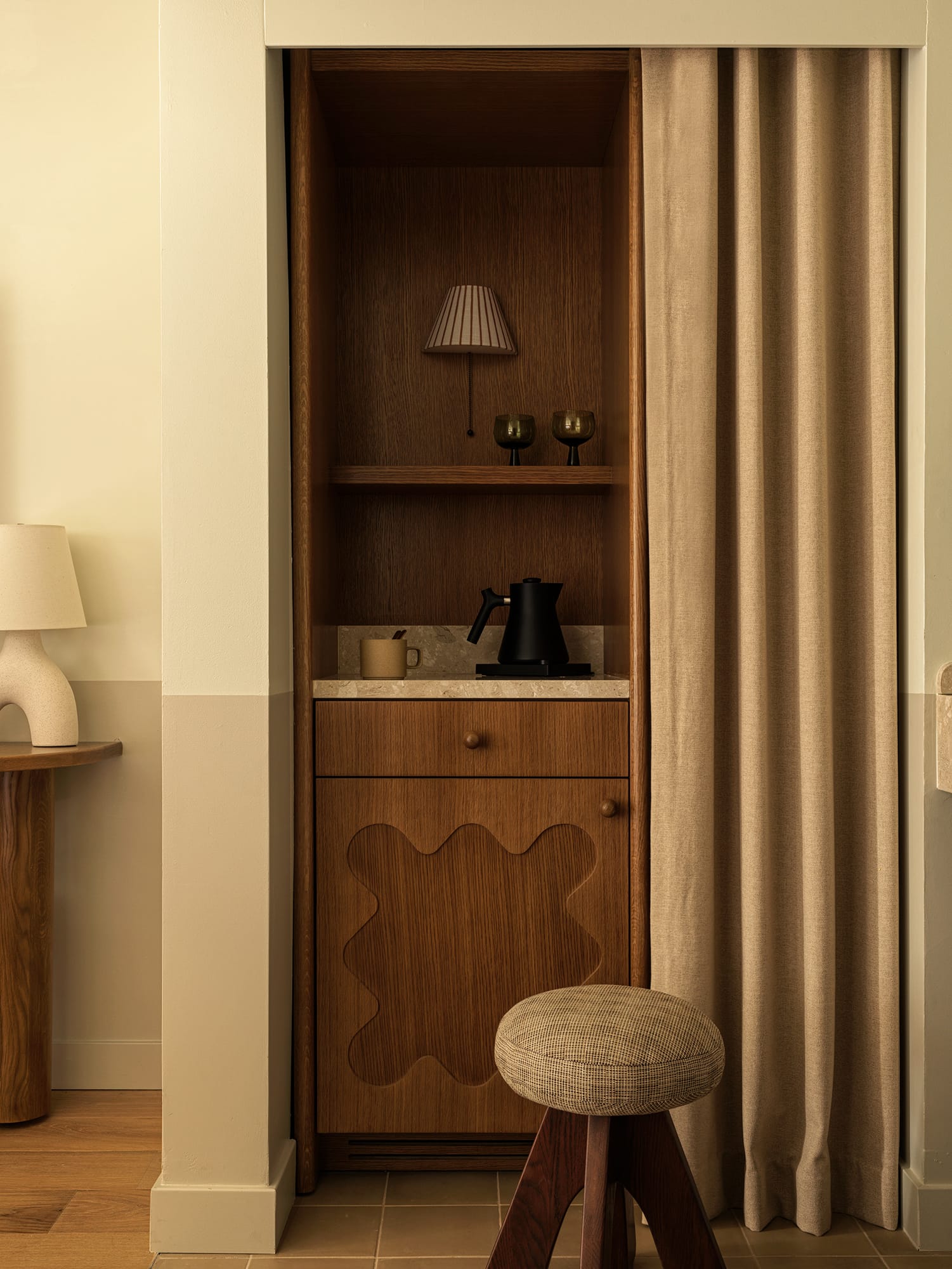
Working closely with LAND, we reimagined the ethos of the space to evoke the energy of Laguna Beach’s creative roots, echoing the local bohemian spirit in an organic way. Handcrafted and natural materials create a comfortable canvas that feels indicative of the history of the landscape and it’s beloved woodworkers. Bespoke styling elements, sandy hues, and custom chairs adorn the suites and common spaces, while each guest room features custom artwork printed on canvas.
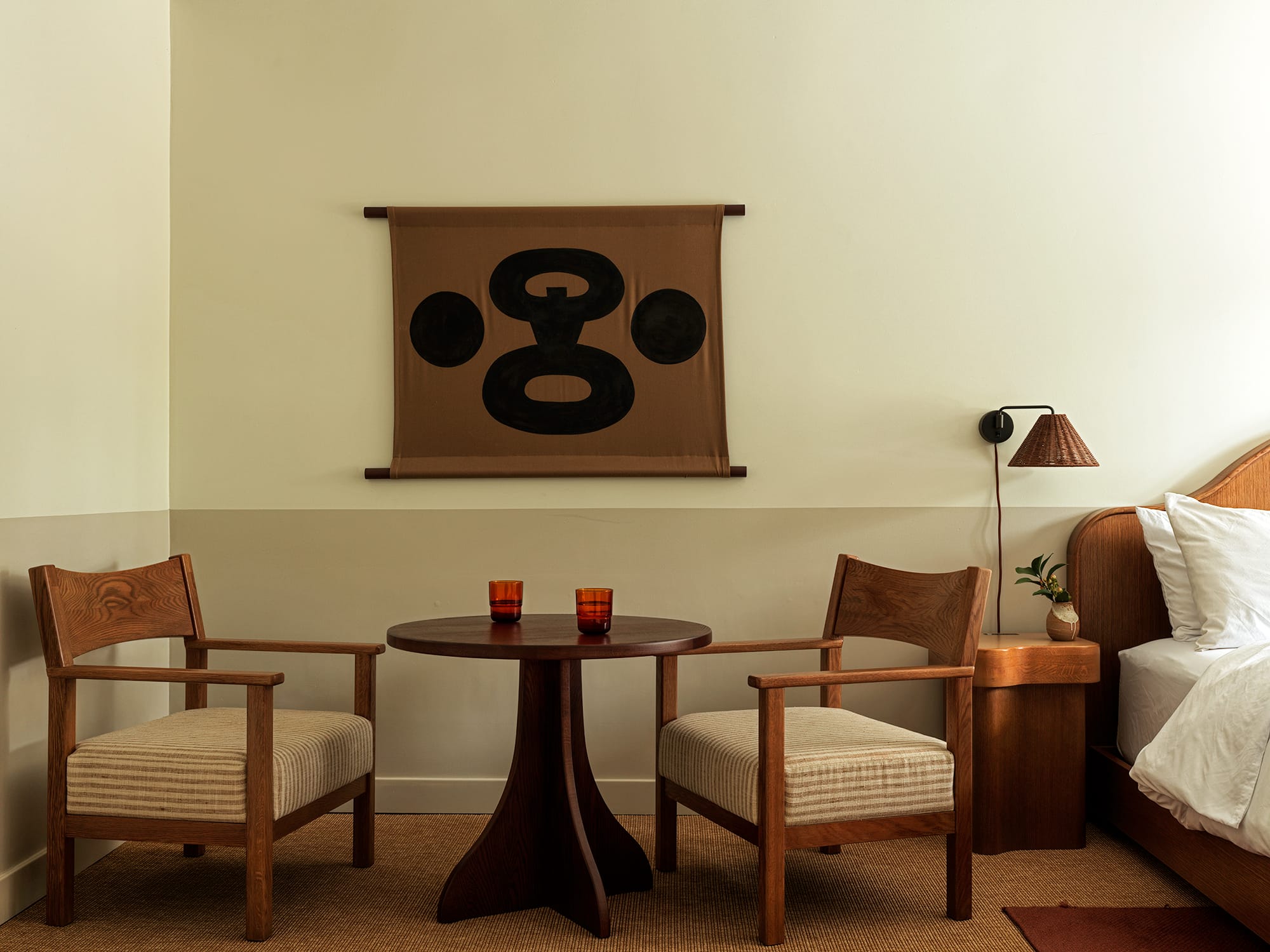
Surrounded by woven lounge chairs and sculptural seating, the pool area is a tranquil escape that seamlessly blends relaxation with effortless style. By day, it’s a sun-soaked retreat, and by night, it transforms into an intimate space for cocktails and conversation.
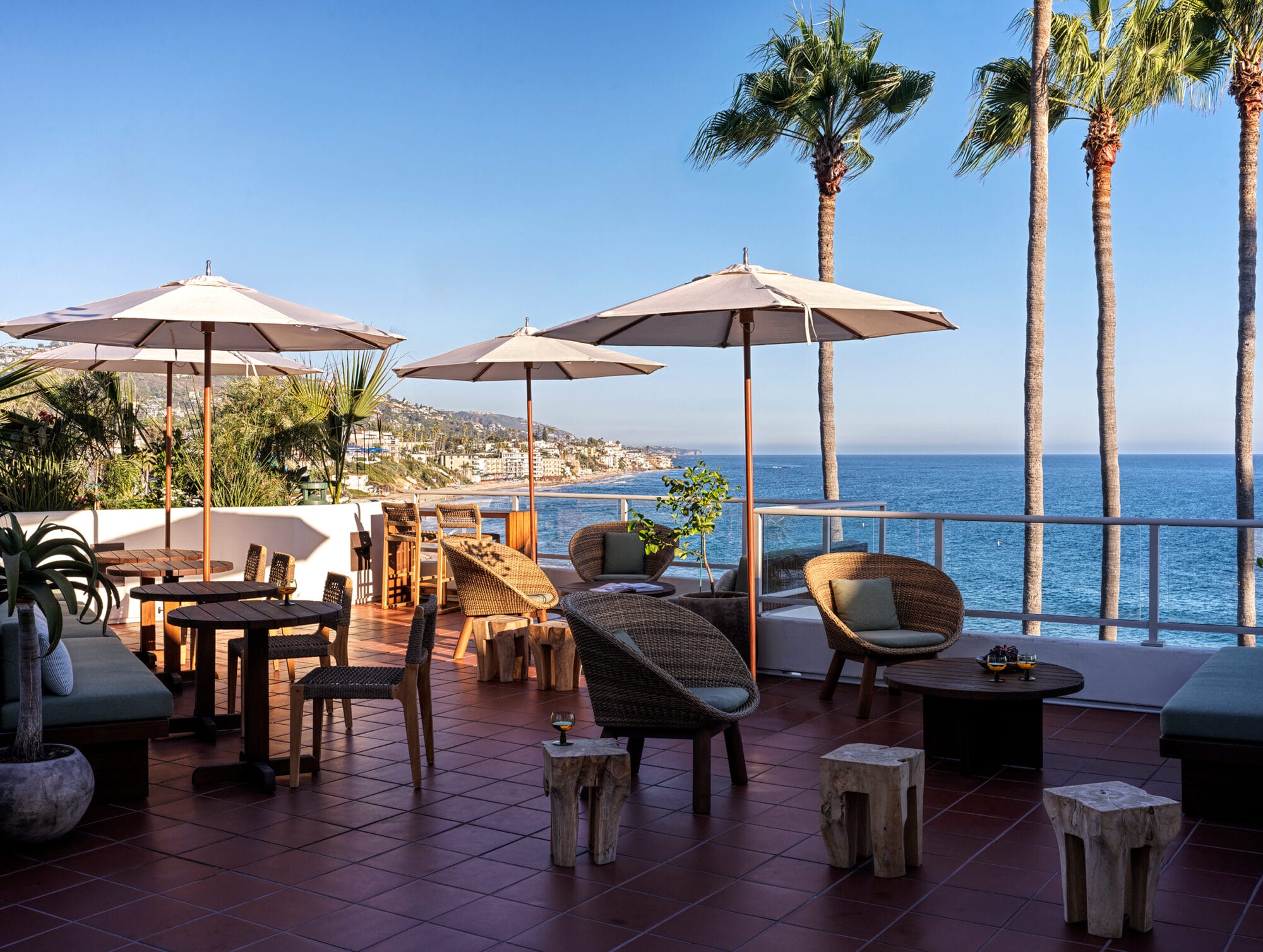
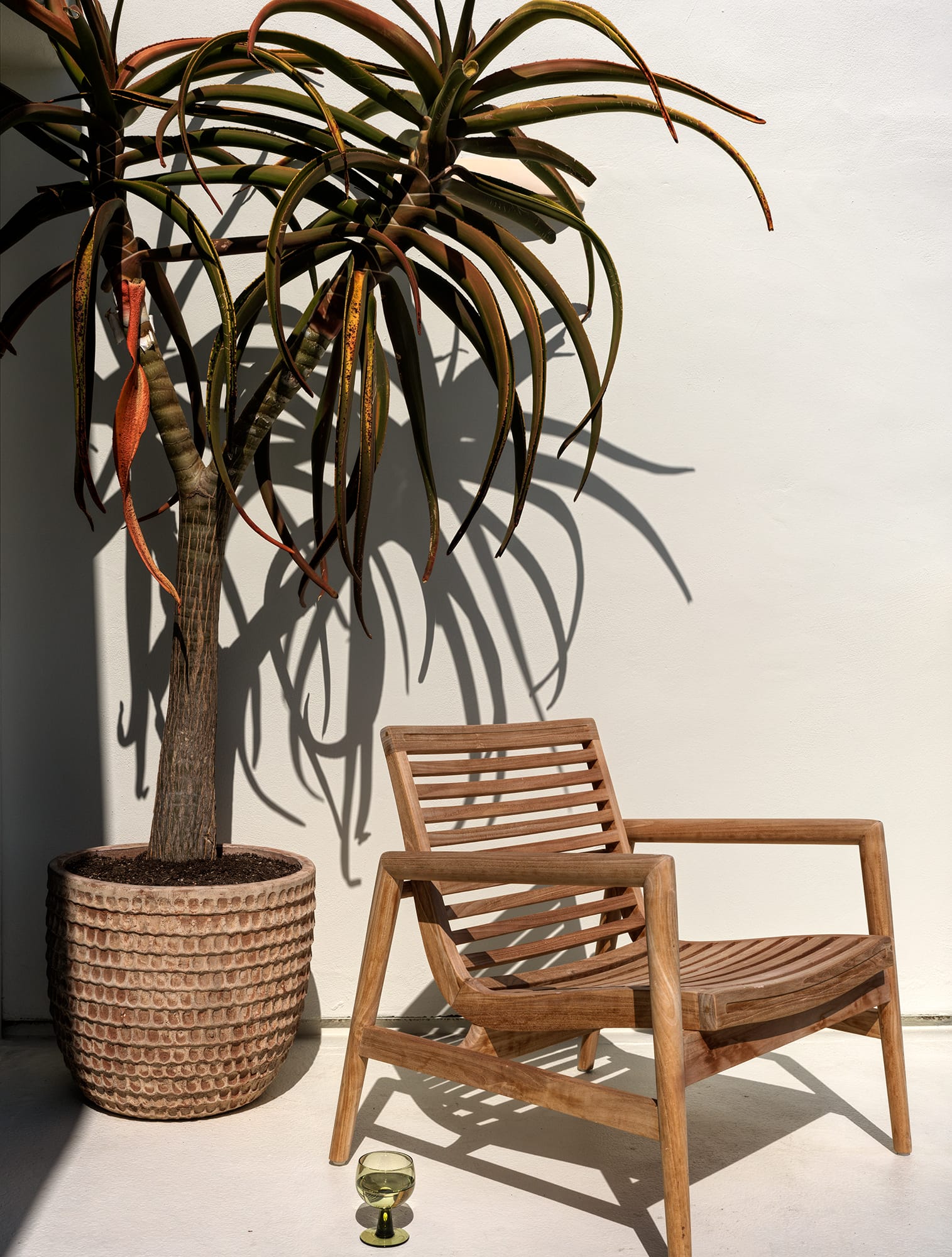
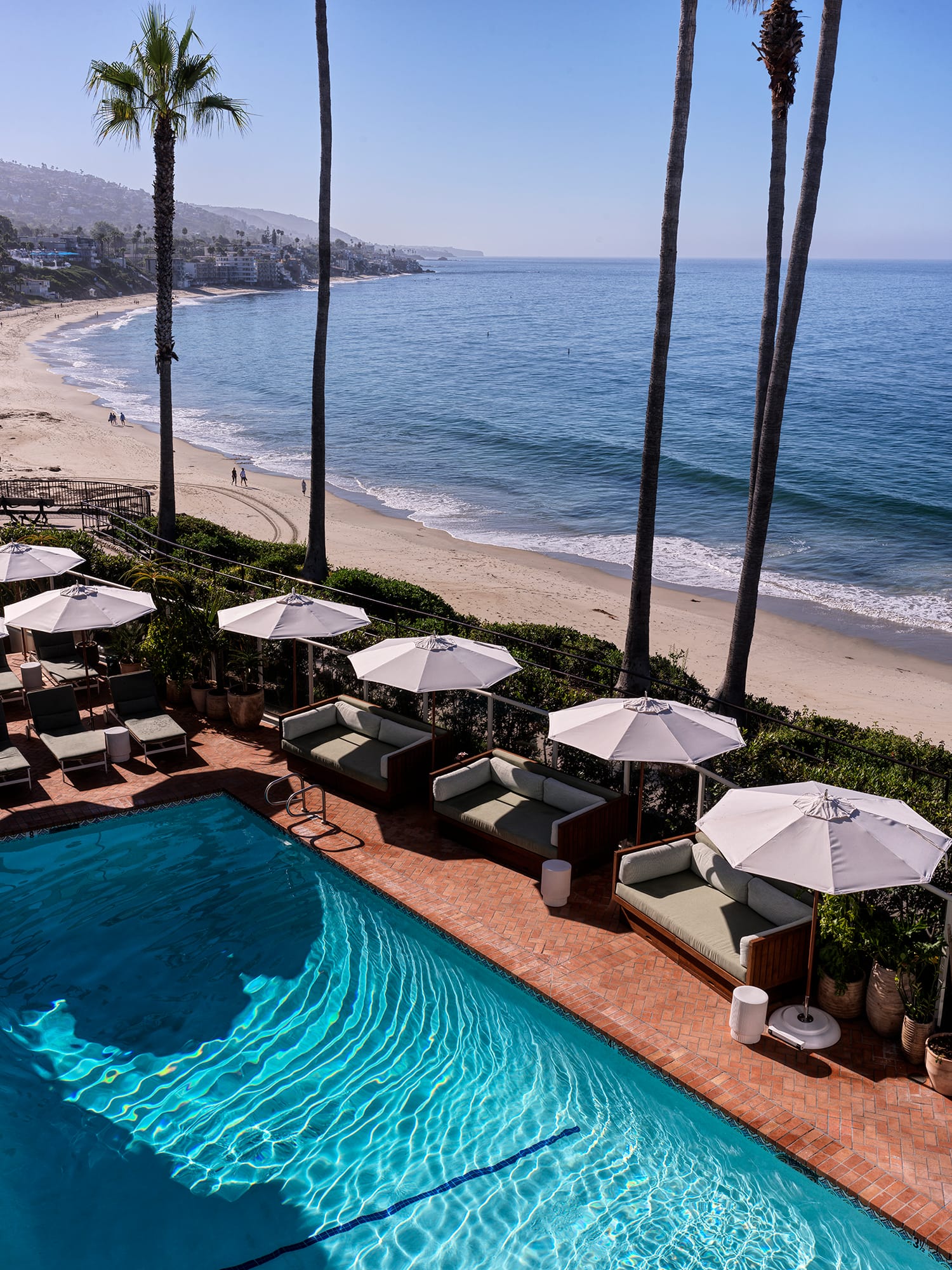
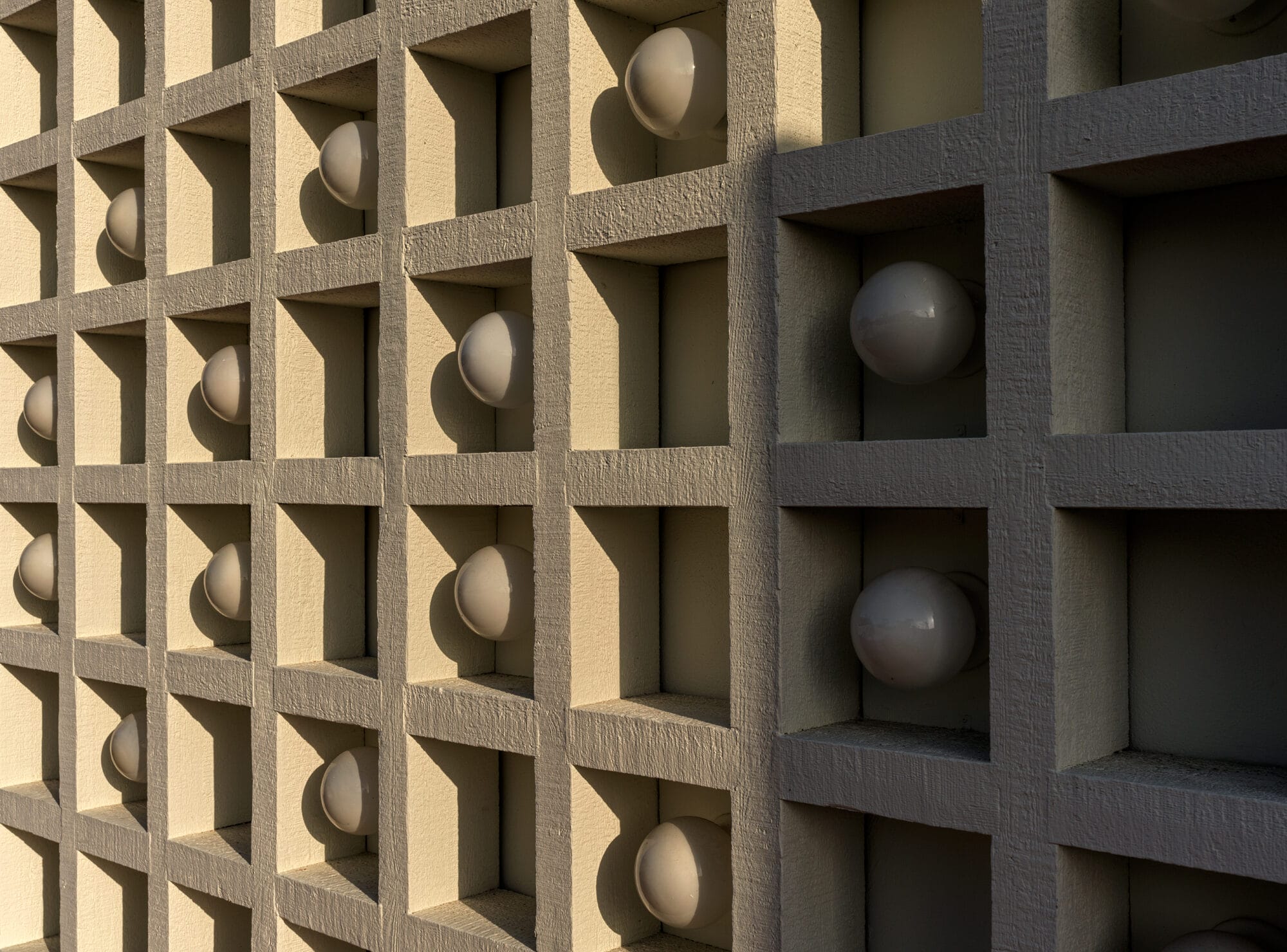
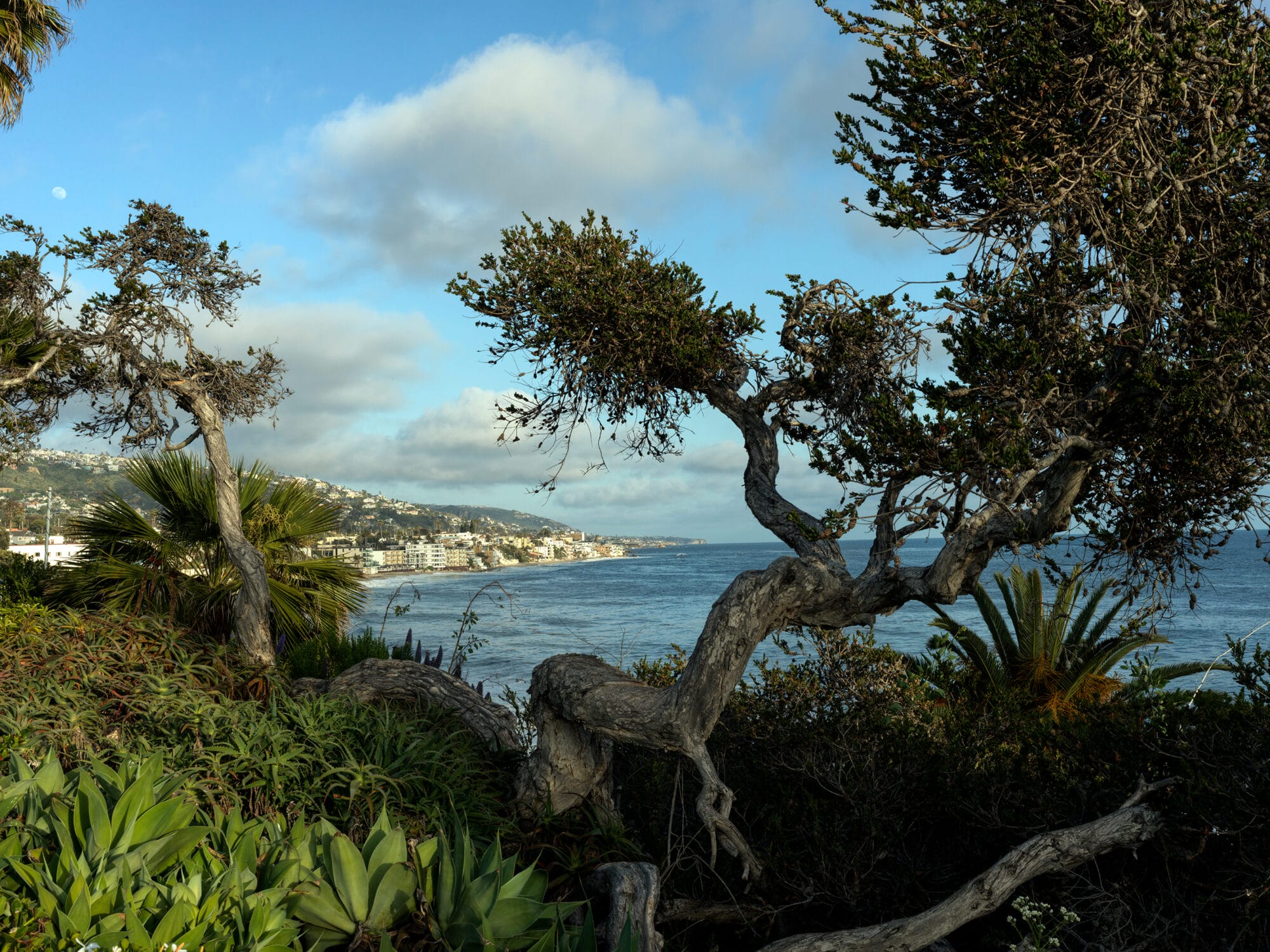
More than a hotel, Casa Loma is a destination designed to inspire, offering a perfect balance of culture, comfort, and coastal beauty. Every space invites guests to slow down, connect, and leave feeling refreshed and creatively recharged.

